Mental illness has been a trope in comics-related properties ranging from Peanuts to Gotham, but do new sensitivities to mental health issues mean that it’s time for this to change? At this year’s San Diego and New York Comic-Cons, I had the privilege of moderating a couple of panels on the portrayal of mental illness […]
Viewing: Blog Posts Tagged with: SDCC 15, Most Recent at Top [Help]
Results 1 - 25 of 161
Blog: PW -The Beat (Login to Add to MyJacketFlap)
JacketFlap tags: SDCC '15, NYCC '15, News, Diversity, Comics, Conventions, mental health, Culture, social issues, Top News, The Legal View, Top Comics, Add a tag
Blog: PW -The Beat (Login to Add to MyJacketFlap)
JacketFlap tags: Archie, Archie Comics, jughead, Top News, SDCC '15, Add a tag
JUGHEAD #1 Cover by Erica Henderson Chip Zdarsky (Sex Criminals, Howard the Duck) and rising star artist Erica Henderson (The Unbeatable Squirrel Girl). NYCC variant cover edition of JUGHEAD #1 by Francesco Francavilla. Limited to 1000 copies, this convention exclusive cover will be available for $10 at the Archie Comics Booth #1836 while supplies last! Archie […]
Blog: PW -The Beat (Login to Add to MyJacketFlap)
JacketFlap tags: peanuts, alan turing, Abrams, chip kidd, Adventure Time, jim ottaviani, Paul Levitz, Leland Purvis, Top News, SDCC '15, joh nleguizamo, Add a tag
MORE things to do and get signed at NYCC, with lots ofr preveiws of Abrams Spring 2016 line all at booth #2228 and 2016 Abrams calendars with every purchase over $50.00 while supplies last (limited one per customer). And advance copies of the above book about Alan Turing by Jim Ottaviani and Leland Purvis. Advance […]
Blog: PW -The Beat (Login to Add to MyJacketFlap)
JacketFlap tags: Interview, Interviews, Graphic Novels, SDCC '15, San Diego Comic Con 2015, ann tenna, marisa acocella marchetto, Add a tag
By Victor Van Scoit Marisa Acocella Marchetto’s name might be most familiar as a cartoonist for the New Yorker or as the author of the acclaimed graphic memoir Cancer Vixen. Her newly released graphic novel Ann Tenna tells the story of Ann Tenna, an influential gossip columnist who because of a freak accident meets her […]
Blog: PW -The Beat (Login to Add to MyJacketFlap)
JacketFlap tags: Interview, Conventions, Batgirl, bengal, Top News, SDCC '15, Add a tag
Bengal is a comics artist residing in Reims, France. His published work includes Naja, Luminae, and Meka published in the US by Magnetic Press and Batgirl: Endgame and Batgirl Annual #3 (not published at the time of this interview). On the last day of San Diego Comic-Con 2015, I had the good fortune to chat with Bengal, tucked in the back of the very busy Magnetic Press booth.
Blog: PW -The Beat (Login to Add to MyJacketFlap)
JacketFlap tags: Television, DC, Cartoons, Archie, Bruce Timm, Mark Waid, Jimmy Palmiotti, Alex Segura, Top News, mark russell, Amanda Conner, tim seeley, Tom King, Roberto Aguirre-Sacasa, SDCC '15, Brenden Fletcher, Justice League: Gods and Monsters, Rick & Morty, the awesomes, Chad Hardin, Add a tag
Here’s where I finally release what’s left of our SDCC audio content…as a follow-up to last week’s set of DC and Marvel Television interviews, here are our chats on the animated side of things including discussions with Dan Harmon, Justin Roiland, Bruce Timm, Andrea Romano, Ike Barinholtz, Seth Meyers, and more! Additionally, here are the audio […]
Blog: PW -The Beat (Login to Add to MyJacketFlap)
JacketFlap tags: asaf hanuka, Top News, SDCC '15, boaz lavie, the divine, Interview, Conventions, First Second, Add a tag
The Divine is a new graphic novel published by First Second created by illustrators Asaf Hanuka (The Realist), Tomer Hanuka (Placebo Man), and writer Boaz Lavie. Asaf and Boaz reside in Tel Aviv, Israel while Tomer lives in New York City. On a hectic Thursday afternoon, I was fortunate to talk to Boaz and Asaf about their new book - unfortunately Tomer was unavailable.
Blog: PW -The Beat (Login to Add to MyJacketFlap)
JacketFlap tags: Marvel Television, Lucifer, Top News, Hannibal, The Flash, Agents of S.H.I.E.L.D., SDCC '15, agent carter, DC Television, Interviews, Television, Supergirl, Gotham, Add a tag
For those of you who don’t know, my fellow Entertainment Editor, Hannah Lodge and I, along with Beat Contributors Harper Harris and Cal Cleary, host a mostly-weekly podcast together for our site, GeekRex (where we also write-up comic and movie reviews, along with the rare television and game piece). For the latest episode, Heidi has been […]
Blog: PW -The Beat (Login to Add to MyJacketFlap)
JacketFlap tags: DC, Conventions, Fashion, SDCC, Batgirl, jim lee, Todd McFarlane, Cameron Stewart, Top News, Karl Kerschl, Top Comics, SDCC '15, Erik Larsen, gotham academy, Babs Tarr, Brenden Fletcher, Batgirl of Burnside, Hank Kanalz, Jim Valentino, Interview, Interviews, Comics, Add a tag
At SDCC '15 I talked with the Burnside Batgirl crew about their creative origins, how the look that launched a thousand cosplays came to be, how to handle creative criticism, and their earliest con experiences.
Blog: PW -The Beat (Login to Add to MyJacketFlap)
JacketFlap tags: Television, The CW, Top News, The Flash, SDCC '15, DC on Television, Tom Cavanagh, Add a tag
For those who don’t know, Tom Cavanagh (who plays Eobard Thawne/The Reverse Flash on CW’s The Flash) has a podcast with comedian Michael Ian Black called “Mike and Tom Eat Snacks”, of which the premise is that both actors eat, rate and review a different snack food each episode.
During San Diego Comic Con, in the same press room where I pestered Grant Gustin regarding Jay Garrick and a possible Flash musical episode, I decided to beat my fellow reporters to the punch and open the volley of questions for Cavanagh with a query regarding just what sort of snack food a time traveler from our distant future might find appealing. His answer was enthusiastic to say the least:
I love the fact that you are just bridging The Flash with my podcast, “Mike and Tom Eat Snacks”! My god, I love you! All I want to do is talk about that thing, and you just led me into it…my gosh! You know, it’s a really good question, Eobard Thawne’s favorite snack would involve some kind of cow-based, meat product because cows don’t exist where he’s from. They’re out of cows. They’re out of cows! So maybe some beef jerky? I like the fact that in my head that while everyone here is waiting to talk about The Flash, I’m wondering: ‘would it be beef jerky?’.
But listen to this podcast, you won’t be disappointed! “Mike and Tom Eat Snacks” with Micheal Ian Black and Tom Cavanagh! It’s very funny and it’s very blue! It’s not what you’re used to seeing, agreed?
I, of course, answered in the affirmative!
While the rest of his time with us, he couldn’t answer much, having to, as he said himself: “dodge and weave and bob and duck questions like crazy”, other than revealing that he will be a part of the cast in the second season.
In an attempt to get around that, the question was posed about how the second season provides an opportunity to reinvent his character:
My starting point has always been, and will always be, Reverse Flash. That is the starting gate to the track I’m running. I thought they did a really great job with that last year. We ended with a well earned season finale…sometimes with a season finale (showrunners) go “well we have to have this big thing” and you work hard and formulate it, but it’s not organic. I feel like with Rick Cosnett sacrificing himself with the death of Eddie Thawne, coming a little out of left field, I feel like we actually earned that big moment. The job now is to try and vault the high-bar that Rick and the season finale set for the second season.
What’s nice about it is…our writing has been unafraid of the challenge from the beginning, to the point where (Executive Producer) Greg Berlanti last year…this is my third show with Greg…we came out of the gate so fast last year around Episode 7. I said ‘are we at all worried about story?’ because we were coming out with Captain Cold and Plastique and here comes Grodd and you’re unveiled in Episode 9 as the “Man in the Yellow Suit”. Verbatim, Greg’s answer was: ‘there’s always more story’. They’re unafraid, which I like, they’re fearless. They’re not trying to repeat a pilot that worked. And so, in Season 2, we’re not trying to repeat Season 1. We’ve got twists and turns and we’re going to open in a much darker place picking up where we left off last year. I’ve read the first few episodes and it’s accelerated, and it’s not going to be “let’s try and follow a model that worked in Season 1″. I think if you’re a fan of the show what we have in store will keep you a fan.
In other words, Cavanagh has to keep pretty mum about what’s coming for his character, though he did let us know that he will be continuing some of the dual affable/”success at all costs” nature of his character.
Anyone have any guesses as to how Thawne returns next year? Hit me with them!
Blog: PW -The Beat (Login to Add to MyJacketFlap)
JacketFlap tags: Conventions, Top News, SDCC '15, Photos, Add a tag
As many have noted, this year’s San Diego Comic-Con was a success in that, unlike years past, no one got run over by a car, fell off a gate, got stabbed in the eye or died trying to get into a Twilight panel. The last few years of the Con, everyone has gotten used to the whole “It’s too big and crazy!” mindset so they’ve figured out how to deal with whatever logistical nightmares need to be overcome to experience Peak Con Moment. I wasn’t even hungry once this show, for reasons I’ll explain in down below. (Spoiler alert: trail mix.) However I joked around with the original “eating scraps” crew, filmmakers Jordan Renneart and Patrick Meaney about the bad old days many times. I think everyone joked about the bad old days when we didn’t know how to survive Comic-Con. We’re Navy Seals now, trained and elite.
The con was a little bit smaller than last year, and last year was a little bit smaller than the year before. I don’t mean in terms of people—there seemed to be more look-e-loos than ever milling around the Gaslamp. No, smaller in terms of movies, sure, but also pop-ups, parties and massive marketing pushes from studios. Now granted the “activations,” as “they” call the events and booths and Giveaways and experiences, were huge and complicated, from a Scream Queens vertical drop ride, to the hellish Adult Swim theme park our behind the convention center. People slept outside for 24 ours to get into the Star Wars panel and they were rewarded with a once in a lifetime concert march and complimentary lightsaber. That was a very big activation, and I’m sure people will be talking about it for years to come. All the X-men on one Stage taking a selfie with Stan Lee. Warner Bros.’ $600,000 surround screen and Batman v Superman trailer. These were big things. But it’s a thrifty time in Hollywood, and studios now realize that just because a movie is boffo at Comic-Con doesn’t mean it will be boffo in real life. The big promotions were all for films coming out far in the future, not next week, as with notorious underperformers Scott Pilgrim, Cowboys and Aliens and even Snakes on a melon-farming Plane.
When I say Comic-Con was a little smaller, I mean just that: a little smaller. In years past every pedi cab was decked out with Dexter or Comixology. Not any more. The party scene was much less extravagant this year. Float was as busy as ever, but no giant parking lot bashes. (One popular empty lot is being turned into another hotel.) Fewer storefront conversions as well—the rising costs of renting out these venues caused even Hollywood to say, hm, maybe not. Additionally, the Comic-Con model is being exported to D23, Star Wars Celebration and CinemaCon, with maybe a little SXSW thrown in, although I hear that has peaked as well.
And here’s one fun fact that really stunned me: The Wired Cafe only ran for ONE DAY this year, Thursday. Formerly the place to be seen milling around like a nerdlebrity in training, it got too crowded last year, and I guess Wired decided that one day was enough Game of Thrones beer guzzling for the Entourage set. Nobody goes there any more, it’s too crowded.
Not that there still wasn’t plenty to do! Off site video game lounges, Funko fests, parkour courses, zombie runs, and the TV Guide yacht are all still there. And what wonders will the new Marriott Hall hold when it opens next year? Comic-Con is going to stay wild and exhausting and too much to see and do for the foreseeable future but it’s going to evolve, like everything else.
The other big question of the con was what place comics hold in it. Yes yes, comics are the HEART of Comic-Con, but as I reported for PW, it’s become a total brainer for some people. Anina Bennett and Paul Guinan announced they aren’t doing big shows any more; Eric Shanower gave up his long time booth for an artist’s alley table because of the costs. I’ve seen a lot of quiet grumbling on FB and in person about sales not being enough to offset the costs and headaches. Of course a lot of people had great shows, but it really is all about the exclusives and show specials now and those are mostly toys and art prints.
The biggest change at Comic-Con isn’t the cosplayers or the celebrities, but the Collectors. Since getting a badge is a lottery, the people who are most motivated seem to be people who want those exclusives and the overall “activation” not people who want to buy comics, what with about four comic cons every weekend to choose from, and great shows like TCAF and Emerald City for more hard core comics people. I think the fretting I heard from people was about this demographic change and not the show being “too big.” I’m not sure how to change this. You can’t set aside a bunch of tickets just for people who want to see Sergio Aragones and David Aja, although that would be nice. CCI itself does as much as ever to make sure comics are included, and the programming is the most comprehensive in the world, but comics folks may need more motivation to brave the craziness…and I have no idea what that would be.
And littler or not, it is still crazy. I’m sitting here two weeks to the day after I left for Comic-Con, but that doesn’t count the month of intense planning before hand, the mad rush to get everything done just for those five peak days, or the literal months of planning that go into exhibiting at the show for publishers and studios alike. The last six weeks were an insane sleepless grind, but as I sit here I can’t believe it ever happened. I always say Comic-Con marks the end of the fiscal year for comics. For whatever reason those of us caught up in the experience spend the whole year building to it, imagining what might go wrong, or right, how to accomplish everything in the time allotted short of a Time-turner, then blam it happens. Decisions must be made: do that thing you like that you’ve been doing every year for 20 years that you only get to do once a year…or try something else? It’s the ultimate FOMO of YOLO.
Since everyone else has written their con report and no one cares anymore, rather than shape this into a majestic essay, I’m going to go to the bullet points for further observations, then to the Travelog of pictures and then WE’RE DONE. I have exactly 365 days to plan for Comic-Con 2016. Better get started.
• The Eisner wins for modern comics stars Gene Yang, Raina Telgemeier, Ed Piskor, Noelle Stevenson and so on was rightly seen as a watershed but I haven’t seen as many people including Comics Alliance’s win for Best Journalistic Presentation included in that group. CA has been at the forefront of promoting this “modern” view of comics, and when they won early in the evening that should have been a clue as to what was going to happen. It’s about time they won and congrats to the whole crew, especially Beat prodigal Steve Morris.
• I kept hoping to run into people like Michael DeForge and Chip Zdarsky just to hear how they liked Comic-Con. I saw DeForge and Patrick Kyle checking out the Marriott pool early on and he seemed to be having a good time, and then I moderated a panel he was on, but perhaps his twitter feed was the best indication. I glimpsed Chip once but the crowds kept us apart.
• So many people leave badges at the front desk of the Marriott Marina that they have an entire log book just for badge pickup. That kind of blew my mind. I stayed at the Marriott for the first time since…oh the 90s, and it was awesome. My room happened to be the one closest to the elevator so I could get from a much needed lie-down to a panel in room 23AB in 13 minutes! (I timed it.) Marriott 4 life.
Congressman John Lewis. At Comic-Con. In costume. (Recreating his trench coat and backpack from Selma 50 years ago) pic.twitter.com/T4EHdbKZhs
— TopShelfProductions (@topshelfcomix) July 11, 2015
• Congressman John Lewis cosplaying as himself was probably the most awesome thing at this year’s show.
• While the show was generally smooth, the Funko booth has turned into the New Hall H! It was a hotbed of dissent and chaos. Normally I drop by there late on Sunday just as the show closes to get a thank you present for our cat sitter, but they wouldn’t let me in! Turns out, there were problems all week, as the Unofficial Comic-Con blog reports
According to Funko’s Marketing Coodinator Cameron Deuel, once the convention kicked off, Funko was “noticing a disturbing amount of people lingering around [their] booth before the floor was even open,” which likely meant that exhibitors were swapping badges with regular attendees and hanging around the booth, an unfortunately common occurrence at Comic-Con. This led to frustrating situations for fans who had been lined up for hours, as that combined with the already mad-dash to the booth made it one of the most frustrating lines of the convention.
“My friend and I got into line for Preview Night at 9:15AM on Wednesday,” Stephanie Kariott said. “We were one of the first 10-15 people near the escalators at the G Hall entrance. When we were let in, I booked it to the Funko booth, and as I’m sure you know, by then it was already a madhouse. I jumped in line and spent about 45 minutes not moving at all and not even knowing if I was really in line or if they were going to cap it off in front of me.”
To avoid the camping out in front of the booth Funko started giving away tickets for each day, but didn’t announce it. You can read about how it all worked out in the above post. Some people didn’t get their toys—including The Beat! Here’s just ONE account:
My friends and I tried getting Funkos three different days. The first day (Friday), the security guards told my BFF and I that the line started at 1pm, and we couldn’t hang out around the booth. They said, “If you hang around here, we’ll remember your face and will kick you out of line.” That put the fear of God in us, so we went and hung out at a nearby booth (luckily we knew someone working at the booth). We kept seeing the same people hanging out at other booths and circling around like sharks. Another friend tried to sneak up a little closer. As he describes it, Funko announced that the line was open. In the time it took for him to reach for his phone in his pocket to let us know, they immediately announced the line was capped. Pretty disheartening, but I tried again Saturday. That’s when I found out about the ticketing. Decided it would be worth a shot to ask if anybody in line could buy for me. I lucked out, and the first person in line was only getting one or two things, so they bought most of what I wanted. When I talked to my larger group of friends that night (we had a full group of five), we discovered that there were two different stories for ticketing, according to the security guards: 1. They would be passing out tickets in front of G. 2. They would be passing out tickets at the booth. We decided to shoot for G first on Sunday. Nobody was there, so we went immediately to the booth. Our group attempted to fan out amidst the ever growing mob, and of the five of us, two managed to get Group 2 tickets. So our experience wasn’t as bad as it could’ve been, but it was definitely a lot of work.
• Artist Ben Templesmith is one of those who decided to host his own offsite, Squid Con, held at the Hilton Bayfront Bar, as reported on by the LA Weekly’s Liz Ohanesian:
The Seattle-based artist describes SquidCon as an “experiment,” a chance to manage his presence at the massive pop culture convention the way he sees fit. “I’m doing it my way this year,” he says. Templesmith, who is from Australia, but has lived in the U.S. for seven years, started attending SDCC in 2001. Two years ago, though, he called it quits on a convention that had ballooned into a major destination for people with a greater interest in blockbuster films and television epics than comic books. “It got too expensive,” he says.
That’s a complaint that plenty of people have had about SDCC. Attending the convention can be a complicated, and pricy, ordeal. Whether you’re going for fun or work, the process of getting a badge requires a rush to the online registration site months in advance of the July gathering. Status as a media professional is not a guarantee for a badge, let alone a spot in one of the hotels that take reservations by lottery. Lodging comes with a hefty price tag too. Even if you are part of a large group crammed into one room, you can expect to pay at least a couple hundred dollars to stay the duration of the con. Then there are the fees for parking and other transportation-related needs, plus food. If you’re an artist, you can add the cost of getting your work to San Diego and running a booth from Wednesday through Sunday to your budget. Even for someone like Templesmith, who has enough of a following to have run several successful crowd-funding campaigns, that’s big pressure to produce sales.
While one man in a bar isn’t the SlamCon that Tr!ckster once seemed to be about to become, is this an idea that may someday catch on? Marriott Hall?
• One venue that was set aside to be comics centric was the San Diego Public Library where panels were held for three days. Unfortunately, from what I heard it was under attended. This is a great venue that should be part of the show — and it isn’t THAT far away as you can see its dome just beyond Petco from the skywalk over Harbor Drive. Hopefully this will be implemented again next year but maybe promoted more.
• You’ll read more about this below, but one of the signature moments of con for me was during a preview night tour of the AMC booth where the women who runs activations told me about how they plan the zombie stuff around iconic scenes from the previous year’s show. “WE don’t have much room to work with,” she said. “Our booth is only 20×40.” That’s 800 sq. ft. Pretty big for a NYC apartment but small for a major booth by one of the hottest properties in pop culture. “Have you ever tried to get a bigger booth?” I asked. With a wistful expression she said “Oh we’ve been trying for that for years. Maybe some day.”
That really brought home to me the real estate crunch on the show floor. Now granted, AMC also had the whole Hilton outside area for a Fear the Walking Dead activation, and parties every night, and a lot of space, but the show floor is super super crowded not just for comics but for EVERYONE. A lot of people have been suggesting that the under the sails area be turned into something more practical than autograph signing, but that would mean my shortcut from the mArriott to room 24AB would be gone, so I’m not sure I like that idea. Anyway, everyone has the same space issues at Con.
• SPekaing of WALking Dead, even though he had THREE TV SHOWS—Walking Dead, Fear the Walking Dead and Outcast—and a movie—Air—being promoted, Robert Kirkman was the biggest no show. I’m told he’d had throat surgery and in some cases you just can’t talk after that or you have permanent irreversible damage. I hope he’s feeling better and back up to chatting with Chris Hardwick real soon.
• The CBLDF Party was OFF THE HOOK THIS YEAR. So many people! I barely got to talk to all of them, but it was so wild and great and fun. This has really become THE comics party of the year, and it doesn’t even need free drinks.
• During my one trip to one of the major media hotels I was invited into the nerve center for one of the BIG BIG BIG websites and holy shit, it was like NASA mission control with a couple dozen guys at computers. Made me sitting in the press room with a laptop feel naked and alone.
• A Cat Cafe opened on Island just off Third St!!! I never got to go, alas, but one comics pro who I told about it cancelled her plans and raced off immediately.
• The Lion cold brew coffee at the Lion Cafe on 1st St. is great every year.
• All during Con I kept thinking “When this is over I need a massage” and when we got to ur friend’s house in LA where we were saying she announced she was getting a massage the next day. OMG. Little House Spa. It was a real James Bond massage with the ladies walking on my back and I was sore for two days but it was amazing. A new con tradition.
• Probably something I’m forgetting. Anyway. PICTURES.I’m going to split this into a couple of pages to prevent browser crash.
Conan O’Brien’s four night stand hosting his show was the most promoted thing when I arrived, as the luggage belt advertising shows, and I thought it would be the biggest thing at the con. Henry went to one of the shows, and I heard Conan himself was seen out and about on the street enjyoing the scrum, but this soon got lost in my own scrum.
The first night in town we stayed at the Horton Grand for old times sake and had an amazing room right on the corner of Island and 4th. The only problem with the room was that it was very far from the wireless router and the internet was appalling. I had to sit in the bathroom to get a signal. Oh well.
Here’s where I was standing in the above picture from the street.
On Tuesday before the show I went to visit IDW and got a tour from Alison Baker. As I think I told her and Ted Adams, IDW may just have won the office space race among comics publishers. Granted I have a lot to go to, but it will be hard to beat the clean-lined high ceilinged vibe of this former army barracks.
Perhaps the best part of the office tour was this authentic Kevin Eastman Habitat!® Not an office, a habitat.,
Eastman was also the subject of the first display in the art gallery attached to the offices. This is a great space, and the area itself is something of an up and coming arts space for San Diego. A lot of potential!
This is apparently the Dirk Wood habitat? There is a little band rehearsal space to let off steam. If any other publisher has such a space please let me know.
Outside time
So many instagrammable moments. After the IDW visit, I went to the nearby Trader Joes and stocked up on trail mix, Kind bars and a bottle of wine for emergencies. That was really all I needed. I never set foot in Ralphs and I never got hungry!
Speaking of Ralphs, everyone is in the spirit of the con now.
After dinner and a party at a haunted loft, we walked back to the hotel and discovered a gang of feral cats living in this little park on the opposite corner. Every time I passed by for the next five days we’d see some of these cats! Hope they are being taken care of. They looked pretty happy.

The first line, on Tuesday, apparently just to get in and get those exclusives.
Blog: PW -The Beat (Login to Add to MyJacketFlap)
JacketFlap tags: Comics, Grant Morrison, Wonder Woman, DC Comics, Earth One, SDCC '15, Multiversity, Batman: Black and White, Add a tag
By Harper Harris
Miss out on the ‘Grant Morrison: The Multiversity and Beyond‘ panel at this year’s San Diego Comic Con? Never fear! Hear Morrison talk to DC’s VP of Marketing John Cunningham about his ideas for The Multiversity and how the project took form, as well as info on his upcoming Wonder Woman: Earth One, Multiversity Too, and Batman: Black and White books! Morrison and Cunningham go pretty in-depth here, so feel free to grab your copies of the series and follow along, it’s a fun ride!
Blog: PW -The Beat (Login to Add to MyJacketFlap)
JacketFlap tags: Comics, Conventions, First Second, Scott McCloud, Convention, Gene Yang, Top News, SDCC '15, comic-con panels, aron steinke, asuf hanuka, Add a tag
By Victor Van Scoit
A great comic book let’s your brain relax and enjoy as you take in each page of the story. You’re not trying to figure out which panel to read next, or be taken out of the story unexpectedly. Instead the creator has made choices in storytelling that take you smoothly through the story and subconsciously informing your mind with all the metaphors, themes, and subtext required. First Second’s What’s in a Page panel aimed to give the audience some insight into those choices from four of their creators: Asuf Hanuka (The Divine) Aron Nels Steinke (The Zoo Box), Scott McCloud (The Sculptor), Gene Luen Yang (The Shadow Hero).
The panel limited each of the creators to just one page from their graphic novels to walk the audience through. Calista Brill of First Second moderated the panel and asked each of the authors for additional insight.
It was mentioned to Steinke that when constructing a page of comics for a western audience it’s expected they will read from left to right and from top to bottom, as is true with text. Being a teacher was that something he thought about when putting together comics for kids and using ways of reinforcing easy reading?
Aron Nels Steinke: “I definitely think about that. Most of my students I’ve worked from 1st-3rd grade. It’s very rare when a student doesn’t understand how to go left to right. But there are times where they do but they kind of get it after a while. If you make it so there really only is one way, then they’ll understand that really this is the next sequence.”
Hanuka had chosen a very vivid page and it was noted how the lead character is handsome, and nice and symmetrical. You’re not afraid to get really grotesque. What drove that choice?
Asuf Hanuka: “It’s really hard to do something beautiful without showing something ugly. I guess it’s just a way of creating contrast. We did have red lines for stuff we didn’t want to do.”
The notion of a red line, or line the creators wouldn’t cross, was a bit humorous considering the amount of violence in in the book where people have brains and spines ripped from their bodies. So it was surprising to hear there were lines the creators wouldn’t cross. The crowd laughed at McCloud’s quip regarding how that violence was portrayed.
Scott McCloud: “But tastefully”
For McCloud’s page he kind of cheated having chosen a two-page spread. This spread in particular from The Sculptor was chosen to show how he was experimenting with auditory experience of the main character.
Scott McCloud: “The reason I like this spread is because it was an opportunity when I’m doing everything visually to see if I could do something auditory. Where it’s all about somebody trying to find a real person in a crowd. And so I just have voices, and voices, and voices and this is what Times Square is. I wanted you to have a sense of what it is to be like inside of his head.”
Gene began with two pages from separate the separate books of his two volume series Boxers & Saints. He joked that he immediately regretted the choice as they’re probably not comics in the McCloud definition. He picked them so he could talk about the duality of the two scenes based on the themes in the graphic novels
Gene Yang: “The reason I did two volumes [Boxers and Saints] was because I couldn’t decide who I sided with. I couldn’t decide who the protagonists are. So the protagonists in one book are the antagonists in the other. So that’s what these two panels are all about. I just wanted to visually represent that resonance between the two cultures.”
After having gone through each creators selected pages the floor was opened up to questions. The first one allowed for some interesting insight from the creators. It was asked “What informs your choices when choosing the panel layout and which panels or pages will be contained vs a full bleed?”
Yang’s response came from a narrative point of reference—
Gene Yang: “I actually had a debate in my head about whether or not to make these [the two pages selected] bleed. I think visually it would’ve been more striking. But narratively each of the larger images represents something that is happening in the heads of the characters that are at the bottom. So by containing it in something kind of a panel it’s sort of a visual representation of that.”
while Steinke’s was born from humorous practicality.
Aron Nels Steinkie: “First my answer involves the laziness on my part. When you do a bleed you’re drawing art work that won’t actually get printed. It’ll get printed and it’ll get chopped, by the chopper. Because it bleeds and goes off to the edge of the page. One of my favorite cartoonists is the cartoonist Joe Socko and he does a lot of bleeds. And I think about all the inches of artwork that we don’t get to see because it’s been chopped from the paper cutter. That’s one reason and another is I try to use it for emotional impact. So whenever I do go to the effort to make that extra effort it’s got to be for a reason.”
Hanuka’s response was more rooted in the experience of comics and it’s physical medium—
Asuf Hanuka: “I think it’s a question of taste. For me I prefer to never go to a bleed because I believe the magic of the comics language is that you’re seeing a universe through a window. And so you need the window. And if it goes all the way to the end of the page, then you’ve seen the end of the page—and it’s paper and something about the illusion disappears. But I think that in some cases you can do it. But for me it has to be really—like—if the Earth explodes. Yeah, let’s go to the edge. Save it for the important moments.”
and as to be expected McCloud’s response blended metaphor, theory, and art.
Scott McCloud: “I do use bleeds a lot. I think the most important thing for me about bleeds is that they are well named. It’s a really good name—bleed. If you think of any panel as a kind of container it’s like an organ that contains fluids. And it contains time. If you have three panels in a row—boom, boom, boom—then it has this nice staccato rhythm. It’s telling you “Here’s an instant. Here’s an instant. Here’s an instant.” Or maybe a span of time. But it’s a container. It contains your sense of the duration of the panel. That this thing is—holding, time, in— and so it has a nice feeling of containment. When you lose that edge something happens in our perception”…
“What happens when you have a panel bleed is it really almost literally bleeds time. As it goes to the edge of the page there’s a sense the duration just flows outward. If you have a bleed at the beginning of a spread for example, that instant will seem to become a lingering moment. It has an echo. It has a reverberation. And it tends to bleed throughout that spread. You can sort of feel it sinking in. That’s why they’re so good for establishing shots. You have a nice bleeding establishing shot and then that sense of place in that one little box becomes a sense of place for the whole spread. If the whole scene takes place in that place, then you have that sense of place throughout. It escapes time. Time—bleeds—out. It’s well named.”
Another audience question brought up how audiences are also reading digitally now, and how that’s increasing with, “I’m curious about what kind of impact digital is having as far as laying out the page?” At this McCloud had to leave so he could make it to the other side of the convention center to participate in another panel. It was another humorous moment for the audience considering McCloud’s many thoughts on the topic, hence his own jab at himself leaving on the digital topic.
Scott McCloud: “And also, I’ll never stop talking.”
The rest of the panel seemed to still be working that question out for themselves as they work, realizing it’s two worlds still very much sharing space from a creative endeavor.
Asuf Hanuka: “Personally I don’t read any digital comics. I only read on paper. But everything I do and create is digital. It’s on computer. Even the penciling—it’s called penciling, but it’s really a Cintiq pen on a screen. The thing I like about digital is that I know the color will look exactly like it looked on the screen. And the printing quality will be always [sic] perfect for everyone and that’s amazing. But I don’t have any specific changes that I will make in the layout design, or the storytelling, or the drawing style because it’s going to be on the screen and not on paper. For me it’s the same thing.”
Aron Nels Steinke: “My published work I’m generally thinking about turning a page in a book. That’s how I enjoy reading comics the most.” …
“I would like to see digital versions of my books or any other books done panel by panel. I really like the way my friend Zac Soto—who has a group called Study Group—a lot of times when they put their work online it’s an infinite canvas going vertically. Because that’s how you’re scrolling if it’s online.”
At this the moderator mentioned “Design for devices and print should be designed for that medium. But usually not both.”
Gene Yang: “When I am writing my own comics, and making my own comics, I almost always am just thinking about the print version. Mostly because like Aron—I love that page turn. I can’t imagine doing without it. It seems to me that most comics, even if they’re presented digitally, are still formatted for print. There’s still the concept of the page which is purely a print thing.”
In finishing his thought Yang helped the moderator sign off the panel on another laugh.
Gene Yang: I know Scott—it’s too bad he left!
Moderator: If he had stayed this would be a whole other panel.
Blog: PW -The Beat (Login to Add to MyJacketFlap)
JacketFlap tags: Interview, Conventions, Scott McCloud, Top News, SDCC '15, Add a tag
By Victor Van Scoit
At San Diego Comic-Con I had a chance to sit with Scott McCloud where we talked about industry changes and how storytelling has changed as our world has gotten smaller, creative anxieties and mindful awareness, the art of visual communication, and how that all influenced his latest book The Sculptor.
Victor Van Scoit: To start anecdotally, the last time I got to speak with you I attended your workshop. It was in L.A. and I was in the workshop that had what I believed was a normal class size. We had 12 people.
Scott McCloud: Oh yeah. That was the little one. Yeah, yeah I remember that—
VV: It was really interesting because you said how that was oddly a small class size. Normally you’re used to around 30 people. Also we only had one or two women.
SM: Yeah usually it’s pretty balanced these days.
VV: That’s one of the things I wanted to mention. Around ten years ago I remember seeing you speak in Texas and you’d mentioned you were really looking forward to this convergence. What you expected to happen with Western storytelling and this manga influence that these young boys and girls were getting that would eventually grow up to be creators.
SM: Especially the girls. Those girls, sitting cross legged in Barnes & Noble reading Fruits Basket and all. Yeah I had this prediction.
VV: And we’re seeing it! I mean I think we are.
SM: Yeah! We’re going to pass 50 percent pretty soon. It’s going to be a majority female industry.
VV: I think it’s been real great just to see the convergence of also the storytelling. You’re working with First Second and one of the books I think of is Last Man over from France which has this great mixture. What’s it been like for you? You’re not the type of person to say I told you so, but it’s got to make you feel good to see that you’re reading the vibe correctly.
SM: [laughs] In this one case I’ll definitely do an “I told you so” just because I sort of laid an informal bet about that majority female industry. I marked it as 2024 so I’ll definitely crow a little if I was right about that one.
VV:I think you’re on point.
SM: The readership is already approaching 50/50 but we want to get the industry and the output of the industry also lined up as well. We want to have just as many female characters for example. I’ll definitely do a little Snoopy dance if I get that one right. That’s a nice long term prediction to make.
But manga was definitely an important part of that. And that manga boom was a fascinating Big Bang for that phenomenon. You know at a certain point about 15-20 years ago it occurred to me that of these three big nations of comics—I think of them as The North American tradition, the Japanese tradition, and the Franco-Belgian tradition which spread out over Asia, Europe and North America—each one had its own way of looking at comics. And the important thing with manga was making you feel like you were part of the story. And the important thing with the European tradition was world building. I thought it would be real cool to put those two together, and I was trying to do that with the latest graphic novel. It’s very strongly in the manga tradition but also has a really heavy world building feeling to it too. Like New York is almost a character in the book. It’s a very international book that way.
What’s funny is that if you look at Japan in the 90s and the 2000s you start to see the European influence coming over. You start to see manga artists influenced by European artists. And sure enough who do we think of when we think of that internationalist theme? We think of [Hayao] Miyazaki and we think of [Katsuhiro] Otomo, right? And what both of them have in common compared to a lot of their manga contemporaries is that they were world builders. They were incredibly obsessive world builders. They took the time to draw every last little little part of their world.
VV: I’m glad you mentioned how you approached that in The Sculptor. That’s one of the things I was interested in. We started talking about how young kids are going to be influenced by this convergence and that’s subconsciously driven. But how did you approach it more consciously and take steps to bring those two storytelling worlds together?
SM: Well it was easy for me because I got a head start. Back in the early 80s I was working at DC Comics. This is 1982. I got a job at DC Comics in Manhattan right out of college. In fact I got the job three weeks before I left college. DC Comics was in Rockefeller Center and they were three blocks away from Books Kinokuniya, the biggest Japanese bookstore in all of Manhattan, and the whole second floor was comics.
VV: I love that bookstore because of that.
SM: And they didn’t shrink wrap the fuckers.
VV: [laughs]
SM: They did not shrink wrap them. So I could go on my lunch hour. I’d get either a hot dog, or a knish on the street, or I’d bring a sandwich. But the point is lunch lasted four or five minutes for me, and then boom I was out the door and I would spend the rest of that hour stand reading. This is something Japanese businessmen did, is they would just stand on their lunch hour and read their comics. Just stand. Read. Stand and read right in the shop and that’s what I did. I bought a lot of them but I read many, many more. That’s when I discovered all these techniques. It took me a while to sort of list all these techniques that they were doing in Japan but not here. There was a point, a kind of eureka moment where I saw that they were all essentially the same idea. Which was making you feel that you were in the story instead of watching it. Making you feel like a participant instead of an observer. Make you feel like instead of watching a character move across the scene, you were the one doing the moving. You were the one experiencing the emotion. You were the one absorbing all of the sensations in your environment. That’s the Japanese way. There may be no coincidence that Japanese comics were 30 times as popular as in North America, twice as popular as in Europe. That was all a long time ago and I incorporated it into Zot! and I incorporated those ideas into Understanding Comics so in a lot of ways it’s been with me for so long that it came naturally. It was actually a very natural thing.
VV: I remember reading it in your comics but especially began to see it in some of the mainstream comics that thing that Japanese manga and animation has always been real good at is taking the moment to pause. Slowing the clock down. Having empty frames in there. I noticed from a pacing perspective in The Sculptor you’re definitely doing that. There were also portions that I would just zoom through.
SM: Oh yeah. People read that book very fast, often in one sitting, despite the 500 pages it can clock in at two or three hours.
VV: It seems daunting at first, but I killed it all at once. Is that a common occurrence that you’re hearing?
SM: Extremely common. It’s almost a cliche now that when I talk to somebody about The Sculptor chances are one-in-two that I’ll find out that they read it in one sitting.
VV: Do you think maybe it’s because it’s playing a movie in their head?
SM: It’s definitely cinematic. It definitely has that narrative momentum, but it also has that sense of participation. So if I’ve done my job right you should feel like you’re there because of those Japanese techniques. And you should feel like the world is a rich, sensory environment because of that European approach. That can create a kind of traction, a kind of friction, where you just want to know what happens on the next page. You know? All you have to do—it’s very simple like a binary thing—all I have to do is on any given page make you want to read the next page. If I can just do that every page—I’m done. You’re going to keep going
VV: I like how in the book there’s a few panels that feed literally into that. The panel transitions into the next page. Like you’re purposely doing that.
SM: Yeah like my hand—I’m grabbing your hand and turning that thing. Time is so important in this book. We’ve got a character who has 200 days to live, and that idea of slowing the clock becomes front and center. Towards the end of the story without giving too much away, there’s a moment where the ticking of the clock becomes like this really loud feeling and you just want to reach up and just stop the hands of the clock. I’m talking about a sequence which is a series of full page spreads one after another, after another, where barely a fraction of a second is going by but you have these huge images. What I’m essentially trying to do even as you’re paging through the thing and going very fast you’re also, I hope, experiencing that sensation of the whole world slowing down and the desire to stop time from proceeding. Because comics is such a temporal medium. Because it’s so much about the passage of time in a spatial medium. That to me is very comics. Even though I tried to create a story where you wouldn’t be thinking about all the formal stuff. It’s still there. It still has its voice.
VV: Those full page spreads you’re talking about I imagine you hope people stop and take in everything that’s going on
SM: I know they’ll flip by them fast. [laughs]
VV: But if they do stop and allow for that decompression of time… it makes me think of a study that came out recently that one of the best way to remove the anxiety of life and time slipping by is to have a moment of awe for the day. Whether it’s seeing a great movie, beautiful artwork, or a beautiful sunset apparently it shows that that moment of awe can let you decompress time a little bit and make it seem a little less imposing.
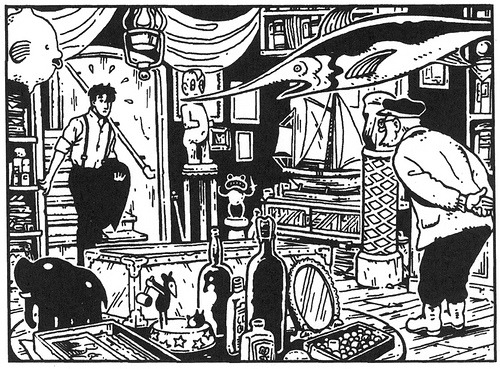
Jar of Fools – Example of Narrative Density
SM: This is what I call narrative density. There are tiny little panels that I’ve stared at for a really long time because there was so much to see. There was so much information in them. Not detail, not just lots and lots of lines and lots and lots of objects. But objects and details that had presence, that had meaning, that had some kind of narrative density. There’s a little panel in a book called Jar of Fools by Jason Lutes that came out back in ‘94. I stared for a really long time at this panel because all it was was the room of the protagonist. The protagonist comes home to his room and there were so many details in that room that told you about the protagonist – an empty birdcage, a bare lightbulb, bars on the windows, lots of liquor bottles over a bare sink. There was so much that was telling you about him that it slowed you down. But that whole thing was no bigger, the actual panel, was barely bigger than your thumb. But it had narrative density. What you’re just describing, that idea of what slows down the clock for us—also things like mindful experiences during the day. I’m a great believer in mindful eating. You put your feet flat on the floor, if you can if you’re not too short like my wife, and you let your whole body relax and enjoy the sensation of the food and think about the sensation of the food. I like that slow process to kinda happen with comics too.
VV: I think that awareness is key. Even touching back to The Sculptor that’s kind of what David is learning.
SM: Yeah. That’s exactly what he’s learning.
VV: I remember thinking that I really liked, I don’t think is spoiling anything, but when he gets the power to create whatever he wants his first result isn’t that great.
SM: No no. [laughs] It’s a failure!
VV: Yes you can do something amazing, but ultimately if you’re not creating art from a good place it still might be less than.
SM: Right, exactly. Getting all of your external obstacles taken care of is not necessarily going to solve your internal obstacles. And yeah it doesn’t solve his problems at all. Because he doesn’t have whatever it takes inside him to make this work is still not there. Now he comes up against the ultimate obstacle himself. That’s a much, much bigger wall to climb than he thought it was going to be.
VV: Yes there’s a couple themes in here. Whether it’s identity, anxiety of creative expression, but a really great one is that even some of my friends who are creators they can be amazing with what they’re doing but there’s always that little devil inside that makes them question it.
SM: Everybody has that. Absolutely.
VV: The story, there’s Meg, she kind of helps him get past some of those obstacles but because of that clock going away from him he’s, “Agh I finally found that thing!”
SM: Yeah as the clock gets faster and faster for him in terms of his work, she is helping to slow the clock. She’s helping to slow him down. Gradually he finds ways to slow himself down. It’s like you’re trying to slow your heart beat. You’re trying to place yourself almost in a state of suspended animation. One thing that we have to remember about this story is that this is a story about a guy who only has so many days to live and has to make the most of them. That’s not a fantasy.
VV: [laughs]
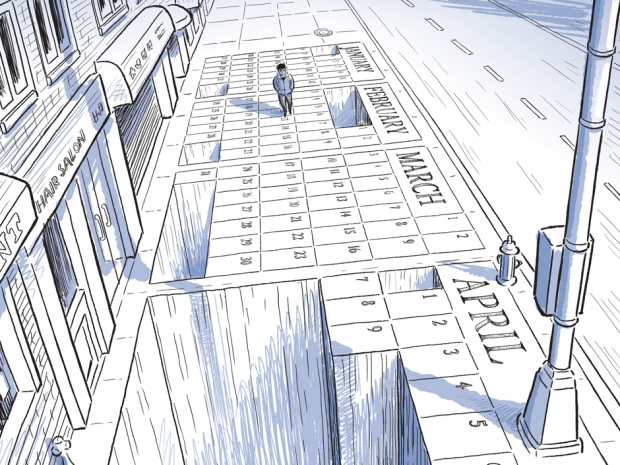
The Sculptor – “The actual fact of life for every single one of us—all of us have a limited number of days.”
SM: That just happens to be the truth. The actual fact of life for every single one of us—all of us have a limited number of days. It doesn’t matter whether we know the number or not.
VV: I can imagine how that must’ve been frustrating for you because I know how you like to take time with your work. Not because you’re slow—
SM: I’m pretty slow
VV: —but because you put a lot of thought and process.
SM: I’m also slow. [laughs]
VV: Well I’ve seen examples of all your Photoshop layers and thumbnails and the way you plan it all out. For each page as you drew that wasn’t finished you kept imagining that clock yourself.
SM: Oh yeah. Oh man. It was there. It was originally going to be a three year project. It turned into a five year project, and that was 11 hours a day, seven days a week
VV: The book [The Sculptor] has been out roughly now six months and you know the story you intended to tell and get across, but have there been any angles or surprises you’re hearing about that people are getting from the book that you didn’t expect?
SM: I wouldn’t say it’s a surprise because it was part of my basic intention but it has been actually gratifying to find out how many people read it straight through. It’s that common that it’s kind of funny now how I hear it almost every single time. [laughs]
So many people just plowed through that thing. Hearing about people who it kind of broke or who were grateful for something that sounds extremely painful and awful. People will describe it—Wil Wheaton talked about it, I forgot what he said exactly, but it was essentially like he had been beaten to within an inch of his life by a brutal gang. He didn’t use those words exactly. It sounded like a wounding experience. But it’s like people are ready for that. It was interesting people seem to be ready or even grateful for any work of art, any kind of story that can physically assault them. That makes them actually feel. That actually raises bruises. I guess that doesn’t happen very often.
VV: Or even confront certain things that they’re not prepared for, much like David has to deal with himself as an obstacle sometimes the right story comes along and asks the questions you really don’t want to answer.
SM: Well I’ve heard from a few people who found it disturbing how much of themselves they saw in David. I have a lot of affection for David. I don’t see it as such a hell to be him. But a lot of people found that the fact that they had a connection with that character they found disturbing. They found it a real challenge to themselves.
VV: This might sound strange, but you mention affection for David, which many others likely have. Yet in reality to start out with he’s not exactly the most likable.
SM: Oh he’s kind of a dick to be sure. [laughs] In fact he was even more of a dick in the earlier drafts. I just couldn’t go all the way towards dick. But there’s been stories of dicks before that people have related to. Even MacBeth if done right has some kind of bridge to our common shared sense of humanity. And that was the challenge for me, for David not to be the other in the eyes of the reader even as he was this prickly, arrogant, self-obsessed, narcissistic sort of a character. There had to be something about him that you could build a bridge to and I hope that I was able to do that for most readers to find some kind of emotional bridge. I also do have great admiration for his perseverance, for his honesty, for his willingness to adhere to these ridiculous promises he makes to himself. You know it’s a kind of virtue. At least he keeps his promises. [laughs] Again I do have that affection. But it’s interesting, it’s not quite as simple as that there’s a level of obnoxiousness that readers will not go beyond. You can be horrible. You can be Hannibal Lecter for God’s sake. You can be Walter White in Breaking Bad and people will still find some kind of a connection to [the character]. It’s an interesting formula. There’s a bit of alchemy to the creation of a character that you can identify with even as you find them detestable.
VV: I guess when it comes to yourself people love to identify you as the educational, almost a mentor in the comics world. You’ve finished The Sculptor. You’re now spreading the word and marketing it, but do people have to worry about you leaving that behind—that educational side of you? It’s seems like such a part of you I would almost find it impossible to stop.
SM: [laughs] Well there’s no danger in my completely stopping pontificating. My next book in nonfiction and it’s going to be about visual communication. Not about comics specifically, although comics is in the mix, but I want to talk about the way that we communicate with and learn from images
VV: Visual communication sounds perfect because maybe once again you’re on that rising tide or cusp moment of identifying into words what people feel. That “Oh! That’s why I consume these things that way” or “That’s why I enjoy this thing this way”.
SM: Right which was a phenomenon with Understanding Comics. A lot of people felt that was that little voice in their head finally giving word to something that they already were experiencing—that they already understood on some level. That is something I’d like to bring to the subject in visual communication.
VV: I hope so. One of the things I really loved from your workshop, reading your books, and hearing you speak is that idea of cognitive load. That conjoined with the potential for educational side of comics or any graphic medium or storytelling. People worried in the early days with graphic novels whether it was good for kids to learn from because sometimes there’s not as many words, but there’s sometimes so much more to deal with [compared to a book]. You mentioned that with Jar of Fools in that you’re taxing the brain in multiple ways even if there’s not as many words.
SM: Oh absolutely.
VV: Is that one of the focuses?
SM: That’s part of it, yes. I’m interested in everything from picture books to presentation—the philosophies that people have of presenting in PowerPoint and Keynote—and of course like data visualization, information graphics, nonfiction comics, animation. All of the different ways that we set out to communicate and then all of the ways that we communicate almost without meaning to.
VV: So this book will extend past the comic books format?
SM: Well I have to go—I have to stay true to my religion that comics can communicate anything. It’ll still be comics but it’s not going to be quite like Understanding Comics or Making Comics. It won’t stay within the panel. It’s going to be probably more graphically bold. But there will still be the narrator. I’ll still have the guy in the check jacket, getting ever fatter with slightly whiter hair, will be there explaining things.
VV: Hopefully it will touch people the same way Understanding Comics or Making Comics did to create, but from a presentation standpoint alone it seems like it could be the perfect thing to hand someone if they need to do a TED-like talk.
SM: That’s part of it actually. My philosophy of presentation is that something where I’ve actually been doing it [long enough] now that I’ve developed some pretty strong ideas. That’ll be part of it.
VV: If nobody has seen you speak before I highly recommend to do so. For my take it’s a way of getting a lot of information and sometimes not even realizing how much you process. Because you don’t use bulleted lists, few words, and the graphics once again bring in that cognitive load of taking in multiple items at once. Without even taking notes, afterwards being surprised at how much is retained.
SM: Thank you. I think that those dynamics that you just listed are in fact present in a lot of other disciplines. And that’s one of the reasons why it was exciting to me to tackle this as a book. I realized that, “Oh you know what?” people in presentations are knocking on some of the same doors that the people in data visualizations are, people in information graphics are, even the people who study facial expressions and body language a lot of them are looking at the same core principles and trying to reinvent the wheel. I want to see if I can find out what those principles are, the ones that run across all of those disciplines simultaneously. Are there a few fundamental core truths about the way we learn with pictures.
VV: I think it’ll be great. Outside of The Sculptor and your other books where can people potentially get to see some more of you? Are you doing any tours?
SM: I’m still doing speaking gigs with a busy fall coming up. You can find that just at scottmcloud.com in the sidebar. Though I have to update that sidebar because it’s clogged with the 100 straight days of touring we did in the U.S. and seven european countries. I always do lectures around the country and you’ll always find them at scottmccloud.com right there on the front page.
VV: Oh! One last question before it leaves me. One of the things that I appreciate about [your approach] and others like Gene [Luen Yang] is that you’re creators but you come at it from a—I think Gene mentioned it last year at a panel when people talk about the conflicted artist. He comes at it from almost a left brain scenario of not understanding that conflict. Just draw. It’s just like engineering. Just get it done. So it’s really nice to see both your approaches to be able to analyze.
SM: Well Gene and I—we’re a particular tribe. Gene and I are both I believe are the sons of engineers. I think his dad was an engineer too like mine. I could be wrong about that part. We’ll fact check that. (VV: Gene’s dad was indeed an electrical engineer)
VV: I just want people to know that you don’t have to be “Mr. Emotional” to be a creator.
SM: You don’t. You don’t. But I think for those who have a kind of emotional altitude over things—like Gene and I who like to analyze and that have a pretty sunny disposition—we do create certain types of work. We’re part of the ecosystem. What we can bring to the medium is one thing, and then what other people who maybe have that darker disposition they bring a different perspective to the work that’s equally vital, equally important. A lot of very conflicted, very dark, very sort of inarticulate artists have created some of the most lasting works. It’s like any ecosystem. You want all those tribes working simultaneously. We’re sort of in the teachers, the research and development wing, and the tinkerers—those guys—we serve a particular role in this ecosystem.
VV: I know it made me feel better because when I took your workshop I no longer have any artistic ability whatsoever by comparison to some of these professionals. It was reassuring that I could take your class having none of that, but could still take a lot from a learning perspective or if I did want to create how best to communicate ideas with an artist. So I think you’re doing great work on that side of the house.
SM: That’s wonderful to hear. Thank you Victor.
VV: Thanks for your time. We really appreciate it.
SM: My pleasure. This was fun.
Scott McCloud is a comic book creator best known for his work Zot!, theoretical and educational books Understanding Comics Reinventing Comics, and Making Comics, and most recently The Sculptor published by First Second Books and available now..
Blog: PW -The Beat (Login to Add to MyJacketFlap)
JacketFlap tags: Interview, Conventions, Top News, SDCC '15, Tula Lotay, Add a tag
by Zachary Clemente
Tula Lotay is a comics artist and illustrator from the UK. Her published works include Supreme: Blue Rose, Bodies, and Elephantmen. She also serves as Director for the lauded Thought Bubble Festival in Leeds. On a very busy Saturday of San Diego Comic-Con 2015, Tula and I caught up on her work on Supreme and Zero as well as her upcoming work in The Wicked + The Divine and Heartless.
Comics Beat: So, Supreme: Blue Rose is all wrapped up. How are you feeling about it now that it’s all done and collected in trade?
Tula Lotay: I feel great about it! We’ve both put a lot of time into the book, we both loved working on it and I’m really proud of it – it’s the first full book I’ve done. Before it was anthologies or small parts in other people’s books, but this was my first, proper book. It’s a really nice way to start.
CB: How has the reception been for that?
TL: It’s been amazing, it’s just blown me away! I had no idea that people would like it as much as they did. I mean, you always hope that when you put so much of yourself into something that that’ll be the case but the response has been incredible – people are just so nice about my work and our story.
CB: The story of Supreme: Blue Rose is rather complex as Warren Ellis is wont to do, how much of the story did you know going in to the first issue?
TL: I think Warren had maybe two issues written. I think it kind of changed as we went along – I think he tailored the story more towards what I wanted. I kind of thought it would be a lot close to Rob Liefeld’s Supreme – that I’d be drawing a lot more of the superhero stuff, but it ended up being this dreamlike sci-fi mystery and I’m really pleased Warren took it in. I loved his story for that, it’s really multi-layered.
CB: It’s not like he left you in the dark, rubbing his hands maniacally? It sounds like a much more collaborative process.
TL: Absolutely, it’s always like that working with Warren. He’s got these incredible stories, but he also trusts me and gives me the breathing room to interpret things in my own and change things if I want to. He’s always been very happy to let me do that and I really love working with him for it.
CB: You were responsible for shaping the vision of many worlds, in a sense, and making sure they’re visually distinctive. Did you relish that challenge?
TL: Yeah, it’s really challenging. I’ve not really drawn this many sequential art pages before. I’ve always illustrated all my life, but I was having to draw things in that book that I’ve never drawn before so I was kind of learning as I was going along. There were certain things like the bridge in space connecting Earth to the Moon that I had no idea to draw.
I tried my best with that stuff and I’m really glad that people liked it but as the issue was going on and I was visualizing these worlds, I was getting into it and getting more confident – I think you can see that in the book, I start finding my feet a little bit.
CB: As Supreme went on, you got tons of cover and illustration work, the last (and a very important) issue of Zero, how do you feel about this transition from just starting out to becoming a major part of a number of comics coming out?
TL: It feels amazing! It’s all happened so fast, I’m kind of still trying to get to grips with it all. I have this thing, which I guess a lot of people have, that because I’m new to all this and it’s just starting I think “okay, I’m getting all of this work right now and I don’t know how long it’s going to last, so I’ll do it all” I’ve taken way too much on, it’s been pretty intensive, but I’ve kept on top of it. I think I need to slow it down and have a bit more confidence to realize that I will continue to have work. [Laughs] I don’t know if I should be saying that, but there’s always that worry at first. You ask yourself if your work is a fad and if you’ll just die into the ether. But yeah, I don’t know if I should be saying that.
CB: It’s a real, legitimate fear and I bet it affects a lot of people. How was it transferring from Warren’s work over to the established word of Ales Kot’s in Zero for this last scenario?
TL: It’s strange, actually. I don’t know if other people have noticed this but with Ales’ writing, I think he’s heavily inspired by Warren. I definitely found their writing styles to be similar and they’re both very collaborative with their artists. Ales’ scripts are never rigid; he has panels and scenarios in there but he doesn’t always number the panels so we wants the artist to interpret in their own way. So I was working in a very similar way to Ales as I was with Warren and you know, it was such an honor to do the last issue or Zero because he’s brilliant and that series has been amazing.
CB: Just that spread with the horses alone…
TL: Everybody keeps talking to me about that! People have been tagging me on that image a lot online or come up and commented on it specifically to me. It’s really nice that people enjoyed that – I loved drawing it and Jordie colored it so well. Those pastel colors…she’s just the best.
CB: Upcoming, you’re doing a guest issue of The Wicked + The Divine. When did that conversation start for you?
TL: I think it was about seven to eight months ago when Kieron came to me saying that they’re picking up a few guest artists to do some issues asking if I wanted to do one and all I could say was “Oh my god, yes!” He came back saying he wanted me to do issue #13 – it’s about Tara and he wanted it to be a heavy-hitting issue. He sent the script and it was…jesus. I don’t think I can say too much about it, but it’s an amazing issue.
CB: Do you feel up to the task?
TL: I hope so! I loved drawing it but it’s kind of scary following in Jamie McKelvie’s footsteps. I reread the first volume again in preparation and just looking at Jamie and Matt Wilson’s work – it’s so clean and crisp and beautiful. It got me thinking that my work is so messy and scratchy and I was unsure if the audience would go for it…and that’s always the worry, isn’t it? My style is quite different to Jamie’s and I tend to be quite loose and use a lot of textures, so you know, it’s a bit scary, yeah? I hope people like it.
CB: Are you coloring it?
TL: Yeah, I’m coloring it – I did everything on it. I always want to color my own stuff, really. I’m not an inker. I’d like to practice being an inker but really my art, from beginning to end, has color as part of the process.
CB: That’s the nice thing about working on covers and at Image is that you have that freedom – you’ll always get to color your own work.
TL: Yeah, I’m really glad that’s the case. It’s nice to be able to do that.
CB: Heartless was announced barely a week ago at Image Expo, that’s got to feel a little exciting?
TL: Yeah, it’s amazing! The reception for it was nuts. I went on Twitter, doing the regular search function later on the day…it brought up my promotional image and we were trending! What the hell? It was nice that they were using my image as promotion for the whole Expo because there were so many incredible books so it’s super exciting. I’m just so excited about Heartless. I think with Supreme, I was just getting started and I feel a bit more confident about my work now. Warren and I are just gonna create something entirely new from scratch, and we’re just gonna have so much fun with it, we’re really gonna experiment and go wild.
CB: I love seeing trends in creators’ stories like those of Gillen and McKelvie or Mariko and Jillian Tamaki. Do you think there exists that kind of connection between Supreme and Heartless?
TL: I think there will be, it’s kind of inevitable that it’ll happen because so much of ourselves are in Supreme and so much of ourselves will be Heartless. We’re inspired by a lot of the same things, a lot of the same movies. There’s a lot of musical inspiration that flows throughout Supreme that not a lot of people have picked up on – various lyrics and stuff. That sort of thing will be in Heartless too. I lot of people describe my work as being otherworldly or ghostly and I don’t know if I did that deliberately but I kind of feel that’ll be my style for Heartless as well. Even though I will be experimenting and trying new things to see where I can take things, that is my style and it’ll come out in the book.
CB: Last year you told me that you were stepping back from Thought Bubble. What is your involvement with the show now?
TL: I go to sleep thinking about this every night. I’ve got at least 200 emails to answer in the Thought Bubble accounts and it terrifies me. I could always concentrate on it so much and I used to stay up until six in the morning trying to get on top of things, but it’s never been my sole job. Now with the illustration work and with my schedule just being so intense constantly, it’s becoming harder and harder. Thankfully Thought Bubble has grown enough for us to be able to employ a full-time staff member which we’ve never had before. Her name is Martha Julian and she’s really taken things in a great direction – she amazing. But it’s still a hell of a lot of work for her, so Clark, the Assistant Director, is there holding things together. There’s loads of people who’re involves, volunteers and stuff, but because I’m not always there so it can be quite difficult and it probably drives them crazy when I don’t answer questions.
So the answer is that I’m trying to step back a bit because I have no choice, but Thought Bubble is in my heart and it’s my event. I love it so much and though I don’t have the time, it’s really important to me to make sure it’s still okay and keeps going. We do such great work with the educational program and the charity stuff.
CB: Thank you so much Tula – any last thoughts?
TL: Buy Heartless, pre-order Heartless! It’s out in January. Warren and I will be posting teaser images soon, we’re very excited and hope people like it.
CB: Safe to say, I know I am.
TL: Thanks very much!
Blog: PW -The Beat (Login to Add to MyJacketFlap)
JacketFlap tags: Interviews, Comics, Archie, Sabrina, The CW, riverdale, The Web, Archie Comics, Alex Segura, Roberto Aguirre-Sacasa, SDCC '15, afterlife with archie, Archie Meets Ramones, Chilling Adventures of Sabrina, Dark Circle, Add a tag
By Harper W. Harris
Archie fans certainly had a good time at SDCC this year: not only did the publisher talk about a new series in the Archie Horror line and tease us with the future of the Dark Circle line and the New Riverdale series of titles, but announced that the Riverdale TV series has been picked up by the CW. I had the chance to speak with Alex Segura, SVP of publicity and marketing and editor of the Dark Circle line, as well as Roberto Aguirre-Sacasa, CCO and writer of Afterlife with Archie and Chilling Adventures of Sabrina to talk about the slew of exciting news that came from Archie Comics over the course of the weekend.
Harper W. Harris: I wanted to talk with Alex first a bit about Dark Circle Comics. First of all, in general, how do you plan to tell new and exciting superhero stories under the Dark Circle imprint–how do you want them to stand out among all the other superhero books?
Alex Segura: I think the key for us is just to be different and good. I really strongly believe that quality rises to the top. You can put as much dressing on something as you want, but if the story or art isn’t good it doesn’t matter. I talked about this on the Dark Circle panel, but finding voices that maybe are familiar to the tropes of comics, but aren’t beholden to them. They can bring in a different perspective–people like Chuck Wendig, Adam Christopher, and Duane Swierczynski. They know comics but they know other media like TV, novels, and movies. So they come at it from a different perspective. We’re building Dark Circle more as a network. Each book is its own little show, and maybe down the line they’ll interact with each other, but fans don’t have that same kind of company pressure where you have checklists of 20 books you have to get to understand one event. We don’t do events, we do stories.
HH: What can you tell us about the pretty newly announced series, The Web?
AS: The Web is Jane Raymond, she’s a 14 year old Korean American girl who is super into cosplay, and she’s a teenager. She’s one of these characters that once I read that first script, she feels like a teenager. She’s dealt with tragedy, her mother’s just passed away, and she’s stumbling upon being a superhero, which is insane. It really shows you what happens when a teenager gains enhanced abilities and has to face real problems like street gangs, violence, and teenage life. I mean, I can’t imagine being a teenager now–I remember how stressful it was being a teenager maybe 20 years ago. It’s really Dave White, who is the writer, who’s done a great job of trying to be true to the character and also a nod to the history but not weighing it down with continuity.
HH: The other thing that’s really cool about the Dark Circle line is how incredibly diverse it is. You’ve got action spy thriller to more wacky adventure to super dark crime, and horror–what do you think are the advantages of having such a diverse line while still being within the superhero genre overall?
AS: First of all, thank you for saying that. That’s really a testament to this gentleman [points to Aguirre-Sacasa] with the Archie Horror stuff. That really kicked the door down with Afterlife and Chilling Adventures of Sabrina. All I have is my taste and my gut, and talking to Jon [Goldwater] and Roberto and Mike [Pellerito], and Jesse Goldwater. If it’s good, does it take up a new space in the line, and we really want to present fans with a variety and a seal of quality. To me, if you see the Dark Circle logo, it’s a company logo: it tells you that this is good. Whereas I think in other places, it just means you have a lot, or it means something else. I want people not to necessarily feel compelled to buy it because they’re completing a collection, but feel compelled to buy it because they want to read it.
HH: So shifting gears here a bit, I definitely have to talk about the Riverdale TV series that was announced as coming to CW yesterday. Roberto, what can you tell us about the tone or look of the show? I know earlier you’ve talked about it having a surreal tone–has that changed now that it’s on the CW?
Roberto Aguirre-Sacasa: I think when we ended up pitching it, the very high concept pitch was that it was a teen version of Twin Peaks. And by that, it was sort of like how in Twin Peaks the whole story is kicked off by the murder of homecoming queen Laura Palmer. So imagine you’re telling that story, but instead of following the grown-ups of Twin Peaks, you’re following all of Laura Palmer’s classmates. That kind of story is kind of used to uncover all the secrets–that makes it sound like a really, really dark show, and though there are undercurrents of that and weirdness, it’s still Archie, there’s still a love triangle. Josie and the Pussycats are in it, there’s a lot of music in it. So it’s kind of a mix of light and dark, serious and funnier stuff–kind of like life. Coming of age is on some level is kind of a loss of innocence, so that’s a big theme. It’s kind of a hodge-podge of all that stuff.
HH: What other kind of TV shows and movies did you take inspiration from when writing the pilot?
RA: We talked a lot about it feeling like a John Hughes movie. Also movies like The Perks of Being a Wallflower, The Spectacular Now, The Way Way Back; those are movies that are all touchstones in terms of tone. The core will always be the love triangle and the characters, so as long as their essences remain. We’ve also talked about Dawson’s Creek as being an inspiration, which Greg Berlanti, who’s the producer on this, worked on. We talked about Everwood, which is about a family in a small town. So all those different kind of influences just kind of all have been absorbed and trickled down into the show.
HH: I believe it was on the Reddit AMA that you mentioned that you hoped to do a Halloween special every year that is a little bit like Afterlife with Archie–is that still something you’re trying to do?
RA: Yes, absolutely! That’d be great. Every Halloween there’d be a Halloween episode. Kind of like on Roseanne how they did a Halloween episode every year, or Treehouse of Horror.
HH: So let’s talk about Afterlife with Archie a bit. Did you guys always plan on expanding that book to encompass more than just zombies? What other kind of monsters or horror ideas do you see coming up in the future for the book?
RA: You know, I think originally we did think it was just going to be a zombie book, but then as it went on it very quickly started encroaching on other horror genres, and now the sky’s the limit. The one thing we probably won’t do in Afterlife, because we have Sabrina, is witches. Even though Sabrina and her aunts have small parts in Afterlife, that’s the one thing we probably won’t dive into. Otherwise everything else is kind of on the table horror-wise. There’s still a lot characters in the Archie library that we haven’t yet met in Afterlife that we will be meeting.
HH: The storytelling in that book is really phenomenal. What’s the process like scripting and working with Francesco Francavilla?
RA: We talk about every issue in advance and kind of check in to make sure that this is an area that Francesco’s interested in drawing. Then I do full scripts–and they are full scripts. I usually give probably more art direction than Francesco wants, although obviously he’s a genius and if he changes around the layout of a page, then I’ll adjust based on that. It’s pretty traditional in terms of having a full script and Francesco doing his thing, and if something changes, it’s always better.
HH: Let’s talk about Chilling Adventures of Sabrina for a minute. How did you decide to make that a separate world from Afterlife, and what kind of research went into making that new world that takes place much farther in the past?
RA: You know, I’m not sure exactly what led into that. I know we wanted to do a book that wasn’t super tied to Afterlife, because it felt like if we were doing that story, let’s just put it in Afterlife. And I had wanted to do a period book for a while. So many of the movies and books that are an inspiration for Sabrina like Rosemary’s Baby or The Exorcist or The Omen, they all are all obviously retro now. It felt like this would be a slower burn and be a bit more psychological, so I thought maybe if set it in the ‘60s, maybe people won’t think it’s in the same universe of Afterlife. It’s a little weird that there’s a Sabrina in Afterlife and a different Sabrina who’s in Chilling Adventures.
HH: We’re used to that, we’re in comics, right?
RA: Exactly. Robert Hack, who draws, colors, and inks the book, he loves all the retro stuff. He has a huge library of visual references, much more so than I. I’ll say stuff like, they go to the movies and there are movie posters for movies that would be playing then, and he always fills in that stuff himself. He’s got a really good sense of that.
HH: There was another book announced in the Archie Horror line at the panel yesterday, right?
RA: Who is Vampironica, yes.
HH: What can you tell us about that?
RA: Not much. I can tell you that maybe two years ago maybe Dan Parent did two issues of Betty and Veronica that introduced this concept of Betty the vampire slayer and Vampironica. I was talking to Francesco, and he’s like, “I love vampires, I love pretty girls, I love Veronica.” We just started talking about it, and he got an idea about it. That’s all I can say about it. More news to come!
HH: So one of the grand traditions of Archie Comics are the wacky crossovers you’ve done in the past–Archie Meets Punisher, Archie Meets Kiss, Archie vs. Predator, and the recently announced Archie vs. Sharknado. Being that you two guys are running these two separate lines of horror and crime or more mature themes, are there any plans to cross those two universes, or cross books within those universes?
AS: You know, we haven’t had the formal discussion, but like Jon Goldwater always says, everything’s on the table if it’s a good idea. We’re getting Dark Circle off the ground, Archie Horror is rolling…so maybe someday.
RA: A lot of people have pitched a lot of crazy crossover ideas, but no one yet has pitched a Dark Circle/Archie Horror crossover.
AS: And we’re doing our first horror book at Dark Circle with The Hangman, so there’s definitely room to play there.
RA: And, not to tease anything, but don’t we have a big crossover…
AS: Yeah, we’re announcing a big crossover tonight–we’re announcing Archie Meets Ramones. I’ll be cowriting that with Matt Rosenberg, with art by Giselle [Lagace], who’s done stuff like Occupy Riverdale and her own cool comics. She’s a huge Ramones fan.
HH: So is that kind of a follow up to Archie Meets KISS?
AS: You know, Jesse Goldwater said, you’re kind of captaining the Archie music sub-universe, so there will be little nods that the fans that have read both will get. But it’ll be a fun standalone Rock’n’Roll High School kind of thing.
HH: Awesome! Last thing: what do you guys love about working for Archie? There’s so much to love–it’s a comic publisher that’s grown massively in the last couple of years.
RA: I love that risk-taking and being creative is rewarded. I don’t just wear this [points to his Jughead sweater] at Comic Con, I wear this everyday. I love people’s passion for the characters. That’s my favorite thing: when I say, oh, I do this for Archie, their eyes immediately light up because they have so many associations with these characters. To be at a place where I can work with them and take risks with them is just great.
AS: For me, I’ve worked on a bunch of major brands, and Archie is right up there with the likes of them, because everyone knows Archie. You know, you tell someone you work at Archie and their eyes light up because everyone has an Archie story. And my first comic was an Betty and Veronica Double Digest with a great Dan DeCarlo cover of them dancing. I remember the first time I read a Cheryl Blossom story. I love the characters, I think Jon is a great boss in terms of taking risks, being creative, and not being afraid. We’ll always try the new thing if it makes sense, and we’ll just keep rolling, I think it’s great.
Blog: PW -The Beat (Login to Add to MyJacketFlap)
JacketFlap tags: Comics, DC, Conventions, Cheetah, Collectibles, San Diego, comic-con, DC Comics, Top News, Top Comics, Bombshell, Marguerite Bennett, SDCC '15, Killer Frost, Add a tag
By Nick Eskey
DC Collectible’s popular Bombshells figures have recently been green lighted for its own comic, written by Margurite Bennett with art by Margurite Sauvage and set in an alternate reality of WWII where Super Heroes exist. Bennett talks about her experience with the book at this year’s San Diego Comic-Con 2015.
How did you get into comics?
Batman the Animated series actually, and I was on a panel today sitting next to “Paul Dini” and my heart was going like crazy the entire time. I came off as a huge flake I’m sure… But Batman the Animated series, I was five years old and saw it in this after school program. And it’s actually sort of funny. With that iconic opening sequence, I wildly misinterpreted what Batman was about. From the gangsters, and the zeppelins, and this wonder rich noir feel, I um… thought Batman was a bad guy. You saw these villains and these gangsters, and what really caught my attention was how dark it is. So often in children’s television, especially things that are presented to girls, are these hyper-saturated, very, very bright, abundantly pink things. So Batman stuck out because how different it was.
So in that opening sequence you see these “bad things, bad things, bad things,” and then you see Batman who is clearly king of the bad things in Gotham. And I assumed he was a bad guy. When I watched the episode, he was fighting these people. So I thought he was this bad guy who felt guilty of being a bad guy and then decided to then turn [them] all in and clean up the city that he was responsible for making this evil and dark. I operated off of that for like a year before I was six. I didn’t know what the murder of the Wayne’s had to do with this… So I really misinterpreted this. But because of this, and creating my own wrong canons from the very beginning, it really started it as something creative. Something I could enjoy watching, but also putting my own mark on even from a very young age.
How did you get involved with the “Bombshells” project?
Oh gosh. Our wonderful editor, “Jim Chadwick,” approached me last September (that’s how long I had to keep secrets about this). He knew I was a huge fan of the series. I’m very vocal on Twitter about how much I loved it and I collected all manner of things form it, and because of the attention that those August variant covers got, DC was like “There seems to be a lot of enthusiasm for this. What about… we’ve essentially got this whole world waiting to have these stories told, maybe there’s something to this?” And there was that Katniss like, Hunger Games moment where I said “I volunteer!” And as soon as he offered, I was all over it. We’ve hit the ground running, and going ever since.
They’re introducing this as a digital download comic right?
Yes. The digital version, which is in these ten page increments, will be every Saturday of the month. These ten page chapters will feature a different heroine for our first arc. And then for our second arc, their paths start to cross. That starts July 27th I believe. The first print comic is going to be August 12th on Wednesday.
What kind of research did you have to do for a story taken place in WWII?
It’s almost always been a preoccupation of mine even at a young age, and I come from a military family. So it was something that you grew up knowing and learning a lot about. And it’s not precisely World War II. We’re doing an alternate history. But it was something where I was able to incorporate these story telling elements.
Scaling back for a minute, when people try and look at an event that massive, a lot of the times we get caught up in things that are almost too big to tell a story about. Or like when you visit a new country or culture, you’ll go to like the “Great Wall,” or you’ll go to the “Eiffel Tower.” But the thing that you remember coming away from it aren’t these giant vistas. They’re small interactions. They’re small stories. Like the “Eiffel Tower’s” one thing, but the thing that I took away from Paris was that “Spongebob Squarepants” is called “Bob L’eponge.” That sticks with you for some reason, and so it was the smaller stories, the more intimate human stories, that always stayed with me with learning about war as a child. Something that’s so far removed from my generation and my birth, they were always the stories that were too big to hold here in my head. But it was the small stories that were the ones that could stay.
Small stories are what influence the world of Bombshells more than outside events. We’re not trying to tell the battle of the bulge, but we’re trying to tell the stories of human courage and human compassion.
Which one of the Bombshells is your favorite to write for?
Batwoman. Batwoman is my favorite DC hero, period. I think that every DC hero in particular is so iconic. Each one can be boiled down to a single virtue or element. Batman is about justice, or obsession depending on your read. Or Batgirl is about recovery. And I feel like Batwoman is about service.
Where it’s the element of military service, or giving yourself to a larger cause. I think she’s inherently a very selfish person, so it’s something that she struggles with. She had a tendency to really hurt the people that she loves, but she still wants to do this, she still wants to be this thing that can provide for other people, and care for other people. It was so interesting because she comes from a place where she’s flawed. She fails so often, in trying to do this, and trying to be this. And it felt like this really perfect moment of crisis that’s going to define the coming century. Her failings and her strengths are going to be the heart of that story.
What was the most challenging part of writing for Bombshells?
You know, we have so many wonderful heroines. So I do worry about being able to give each of them their do. There are so many people I want to incorporate. The first heroines you’re going to see are the ones that already have their own statues, but there are a lot of ones that I want to hurry and get to. But we do need to do that first and establish them first. Coming from the DC Collectibles needed to be our priority. And so I’m hoping the public will bear with me, because they’ll be times when you’ll see character, and you might not see or hear from them again for a few months… I’m just impatient, and I want all my toys at once, and I want to share them with everyone all at once.
Look out for DC Comics Bombshells releasing on digital starting July 27th, and the physical book releasing August 12th.
Blog: PW -The Beat (Login to Add to MyJacketFlap)
JacketFlap tags: Conventions, Top News, SDCC '15, Add a tag

Oh yeah, speaking of Comic-Con, there seem to have been an even greater than usual number of investigative reports on the show, what it means, how it works etc. I’ll link to a few below, but my own inquiries yielded a very interesting statistic. I was told by a reputable source that an independent study by a major film studio suggests that some 60,000 people some to San Diego without badges just to hang out, go to the theme parks, stalk celebrities, and march around the Gaslamp Quarter. Someone told me anecdotally that the figure was thought to be even higher this year, with as many as a quarter of a million people, all told, descending on Nerd Prom.
While that number may be an exaggeration, it’s still a huge number of people. On Saturday night all of Fifth St. was closed down and it was a madhouse. Obviously this has a huge impact on how the event works, and how people are going to approach it in the future. I’ll have more in my wrap up report, but here are the other voices, other blog posts links for now:
§ Calvin Reid and I covered the show
for Publishers Weekly in depth and there was the usual questioning of “why are we here?” but this time, I think, with a little more resolve:
Bennett said she has “issues with all the big Cons,” but noted that “Comic-Con in particular is too big, overwhelming, expensive, and diffuse, spread out.” She lamented that “the big cons have increasingly become ‘general audience’ shows,” and the fans they attract are not necessarily attending to buy books.
Retailer Peter Birkemoe of The Beguiling, Toronto’s premier comics bookstore and cosponsor of the Toronto Comic Arts Festival, expressed similar concerns about Comic-Con at the Drawn & Quarterly booth, where he typically works during the show selling artwork for the house and helping with D&Q book sales. Although D&Q had a great show, as always, and sold out of Jillian Tamakis’ new graphic novel, Super Mutant Magic Academy and D&Q’s huge 25th Anniversary anthology, Birkemoe had the same sense of apprehension over demographic changes at Comic-con as Bennett. “It’s harder to get in, and the audience isn’t necessarily here to buy books,” he said.
§ The “leaked” Suicide Squad footage caused headaches for Wb and they eventually had to put it online. While some might say this comes with the territory, Wired’s Jordan Crucchiolla pleaded Dear Idiots, Stop Leaking Comic-Con Trailers
You know that thing where you sit on your new sunglasses and your friend yells at you “This is why you can’t have nice things!”? That’s exactly what’s going on here. With major studios like Paramount and Marvel already opting out of a festival that’s practically become a criteria for relevance over the past decade, we need stop taking these exclusives for granted. Smearing content across the Internet isn’t exactly going to encourage studios to come back next year. And then we won’t get anything.
§ At The Verge, Jacob Kastrenakes asked Hall H of horrors: what is Comic-Con doing about the worst line in fandom? with a harrowing account of fighting off giant water bugs in the night:
But as the day went on, things started to go downhill. The air began to get cold. No one in the area was selling food or water. The convention was supposed to issue wristbands so that we could all go home and come back in the morning, but two hours after they were supposed to arrive, we hadn’t heard a thing. Also, there were cockroaches. A lot of them.
“He’s killed like four so far.” Jill Hanson was sitting in a small group about a hundred people ahead of me. She and two men were all bundled up in sweatshirts, which they’d borrowed from another line-sitter they’d met that night. “It’s kinda disgusting, and it wasn’t like this last year,” Hanson says. “We’ve also seen a couple mice jumping around in the rocks.”
§ There were many complaints about Hall H this year as always. Was it different? Not sure. I do know at least one person told me he got in and found many empty seats inside while a huge line was still waiting to get in, but that could be due to safety measures for crowd control. I would like to draw your attention to this post by Nick Eskey on the Talk Back panel and the subsequent comment threads as it deals with disabled attendees and the line wait. While to some hearing a fellow complain about not having a place to plug in his CPAP machine while waiting for Hall H may seem the height of folly, but you know, physically challenged fans have the same right to experience whatever it is they want out of Hall H as anyone else.
This is that guy that only slept 16 hours and needed his CPAP machine. You apparently only caught part of what I was saying, which is, that if they had not removed the outlets I could have used my CPAP machine and slept outside just fine. Besides that, however, you missed the point completely which is not everyone with disabilities can sleep outside. Because of that they should be given special consideration for their placement in line. What other convention gives ADA this sort of consideration? Try Emerald City Comic Con and PAX Prime, both in Seattle and both allow ADA to ALWAYS be first in line. Try DragonCon in Atlanta, where ADA have volunteers that will guide them through the convention, hold their spot in line and generally assist them in whatever way needed. I was on the BoD for OkCon and we bent over backwards to assist our ADA. Maybe because we had people on the board with disabilities.
§ Finally, comics writer Van Jensen went back to his journalistic roots with a brilliant piece for Grantland: How’s Your Show? A Comic-Book Writer’s Thoughts From on the Ground at a Rapidly Changing Comic-Con
“How’s your show?”
It’s the default conversation starter among those of us who attend Comic-Con International as professionals — writers, artists, publishers, agents, and retailers. Over five days in San Diego last week, I lost count of how many times I heard the question or asked it. The question — “show” is industry shorthand for convention — normally works as a quick way to ask several questions at once: How have your sales been? Have you had any luck networking? Did you line up any big meetings?
This year, conversation after conversation, that question took on a new subtext. It became: How is the convention? Doesn’t the attendance seem light? Aren’t there far fewer big advertisements and displays? What is happening to Comic-Con?
I’d hesitate to say that 2015 was more reined in than 2014 because the off-sites were huge. Was the anxiety just the usual or the sign of something new? I welcome your comments.
Blog: PW -The Beat (Login to Add to MyJacketFlap)
JacketFlap tags: Comics, DC, DC Comics, Black Canary, SDCC '15, gotham academy, Brenden Fletcher, Interviews, Add a tag
By Harper W. Harris
The Fletcher-Verse: this is what superfans like to call the little corner of the DC Universe that’s penned (or co-penned) by Brenden Fletcher, including Batgirl, Gotham Academy, and the new Black Canary series. I got a chance to sit down with Brenden to discuss his inspirations, approach, and general disregard for continuity in Gotham Academy and Black Canary.
Harper W. Harris: I’ve heard that Miyazaki is a big influence on what you’re doing with Gotham Academy. What parts or aspects of those movies did you want to bring into Gotham Academy and the tone?
Brenden Fletcher: I wouldn’t say that my love of Miyazaki is something that I’m trying to put on the page of Gotham Academy, or of any of my books. But discovering Miyazaki at a young age and his Studio Ghibli films really transformed my view of what it meant to tell a story, and how to approach character and drama. I think that’s what I’m trying to bring to all of this, I’m just trying to be mindful of his approach. These books are completely different from anything he’s done. So I’m hoping that when people are examining what we’re doing with that in mind, they’re not trying to look for specific elements or anything. I will say this however: I believe that what we have in common more than anything is the fact that we seem to be drawn to tell stories about female protagonists. If you look at most of Miyazaki films…[A saxophone plays in the distance] I’m sorry, that’s “Careless Whisper” on the saxophone being played at San Diego Comic Con. You don’t expect Wham on a Friday morning.
HH: No, it’s a little early for that!
BF: But yeah, I think I haven’t really figured out why it is I’m drawn to telling stories with female protagonists, but this has always been the case. Since I started writing, every story that I’ve felt connected to has had a female protagonist. I don’t do it on purpose, it’s just what interests me.
HH: So switching over to Black Canary for a second, that obviously draws from a very different creative pool than Gotham Academy, one that you have some personal experience with. How does your experience as a rock musician inform the way you write that book and formed that character?
BF: Yeah I’ve been playing music all my life. I’m primarily a singer; I went to school for music, studied voice and classical singing. I ended up doing musical theater for years, and on the side I was always playing in bands. At one point in my life I decided I didn’t like the formal aspect so much, so I wanted to get out of classical. I wasn’t really into the musical theater scene; I liked the jobs, but it wasn’t really me. So I spent more time writing music and playing music, and working on being a better instrumentalist and that turned into some touring and getting involved in the business of music. This was never something that I could make a living out of, I didn’t become a world famous musician, but I experienced enough of the life to inform this new world I’m building for Dinah Lance in the new Black Canary book.
HH: With Gotham Academy you’re co-writing with Becky Cloonan. With co-writing, I’m always curious about the process–what is the process like writing with Becky?
BF: It’s interesting: I think we could talk about it in terms of how Becky and I work, but this is a full team effort and Karl [Kerschl] is in on the story building at every phase of the project. We start usually by going out for a coffee–I’ve got some ideas, Becky’s got some ideas, Karl’s got some ideas. We turn that into a look at where the story should be going, and at that point Becky and I create a breakdown of the issue, what the twenty pages will roughly look like. We give that to Karl, he tells us we’re wrong and we have to back and retool it until he’s happy with it. From there we give it to the editors who sometimes tell us we’re wrong. Eventually we get to scripting, and that’s another stage where Karl will fix things or tell us things are wrong–or sometimes he just doesn’t, and I’m not even kidding you, he’ll just change things on the page, just draw where he thinks it should go, and 100% of the time he’s right. Karl is an extremely gifted storyteller, great writer, an Eisner award winning writer/artist. What we have is this incredible merging of visions–actually I think we share a vision, but we merge our talents and abilities and our individual ideas to become this wonderful thing that’s Gotham Academy.
HH: It sounds like Gotham Academy is a really collaborative effort, that’s great. So when you’re writing a script for different artists, so for example writing for Annie Wu on Black Canary, how is your scripting style different?
BF: Totally different. The only reason I’m writing full scripts for Gotham Academy is because I’m collaborating with Becky and because the office requires it–they like to see a full script. With Karl, we can pretty much get on the phone and say, yeah, page twenty looks like this, and he’ll deliver it and it’ll be perfect. Annie and I had a talk early on about how she likes to approach things, and she had been working with Matt Fraction on Hawkeye for a while and wanted a script that was closer to what Matt was doing. So this is the first time that I’ve written closer to what is known as the Marvel Style. Annie wants a looser breakdown of what the pages looks like with some script beats in there. She can push and pull those things as she wants, she adds beats, moves beats, but ultimately the core of the story I’m trying to get across, the core of the movement of the characters is all there on the page.
HH: When you first started out with Black Canary, were you able to pick and choose what aspects of her past you wanted to use? Given that it’s not your average superhero story, have you found it challenging to tell the story you want to tell within the confines of continuity?
BF: I have a relatively clean approach to continuity, which is just that I ignore everything that I don’t like. I will never contradict it to the best of my ability, but if something feels off to me I’ll try my best to avoid it. I am playing into a lot of the New 52 continuity for Dinah Lance, but using it for very specific reasons which you’ll see over this first arc. I’m trying to bring it all together and make it make sense in a way that makes Dinah feel like the iconic version of the character that we know and love.
HH: She’s a welcome member to the ever-growing Fletcher-verse!
Black Canary #1 and Gotham Academy #8 are on shelves now, with new issues coming in the next few weeks!
Blog: PW -The Beat (Login to Add to MyJacketFlap)
JacketFlap tags: Meta, Top News, SDCC '15, SDCC'15, Add a tag

The Beat is home! Charlie and Lucy are thrilled and I’m trying to reset my sleep schedule. With this year’s Comic-con in the rearview mirror, the attention span of the nation has moved on already and we’re not going to drag out our coverage for a month but you’ll see my wrap-up post (with pictures!!!!!) on Sunday, and some more interviews rolling out in the next few days.
I want to thank the Elite Beat Operatives who made this, without question, the BEST coverage of SDCC ever in our history. Hannah Lodge, Kyle Pinion, Nick Eskey, Henry Barajas, David NIeves, Edie Nugent, Harper Harris, Oasis, Zachary Clemente, Alex Jones, Victor van Scoit, Jeff Trexler, Nicky Wheeler Nicholson and Chandler Banks were everywhere, talked to everyone and saw everything and did it with style and intelligence. I couldn’t be prouder of this crew. And of course the uteerly inimitabel Torsten Adair was manning the home fires with his uniquer commentary and perspective. I give Torsten some kidding around here, but we’re really lucky to have hiim contributing.
I have to save my greatest thanks for newly minted Managing Editor Alexander Lu, however, who must have been on 24 hour watch at his computer getting the news up as fast as it happened. We had some 80 stories during the con and more to come after and that was all Alex. I’d tell someone to hire him full time but he already has a full time job at NYU. However I feel pretty certain you’ll be hearing a lot more from Alex in the months to come.
NOW my own posting was severely curtailed during the show by a) working on several stories for PW b) a slow, old computer paired with slow/shitty wifi everywhere c) a slow, old Beat who needed a luxurious four or five hours of sleep a night. Seriously, I did spend all my time with some events and meetings that were useful and will bear fruit down the line, More to come, as we say at another podcast.
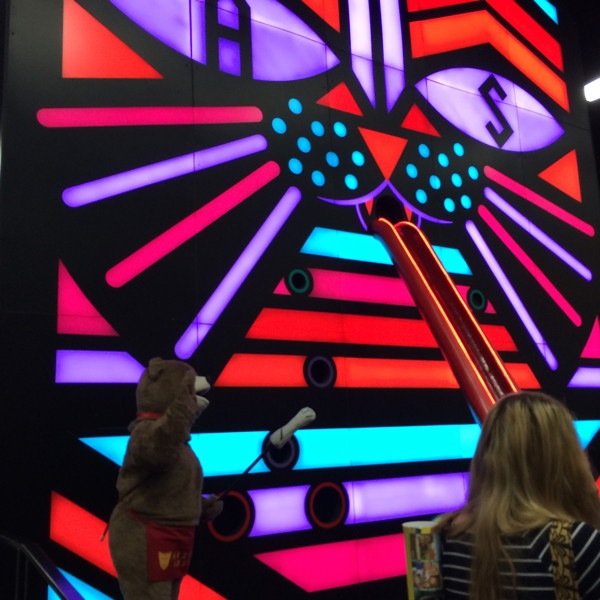
Above: horrible torture bear at the Adult Swim Booth, Comic-Con 2015
Blog: PW -The Beat (Login to Add to MyJacketFlap)
JacketFlap tags: audio, Top News, SDCC '15, Jamie Coville, the eisner awards, Awards, Add a tag
As usual the intrepid Jamie Coville went to the con and recorded some of the best panels. He also got audio of the Eisner Awards—fast forward to the Orlando Jones/ Michael Davis showdown or Jonathan Ross at the end for laughs— he also has audio of the panels here and the Eisners here. And pictures can be found here and here.
San Diego Comic Con 2015 (July 8 – 11) – 72 Photos

Comics Arts Conference: Scholars Lost and Found (47:14, 42.2mb)
On this panel was Carol Tilley and Brad Ricca. Brad start off talking about an academic paper done in 1942 by Paul Cassidy, who was also an artist at the Siegel and Shuster shop and was assisting/ghosting
Joe Shuster in drawing Superman comics. The paper was about the use of Ghost Artists. He conducted a questionnaire about the use of ghost artists in the industry and wrote about his own experience. Carol talked
about a few other early academic papers she’s come across. One from 1932 about kids reading Sunday Comic strips, 1933 on comic strips artists and their level of art training, 1938 on comics as children’s literature
and along the way also put together circulation figures of all Sunday Comic strips. The last two papers talked about was a 1942 one about Kids understanding editorial cartoons and a 1949 paper about comic book
sales figures between 1935 and 1949. It was done by Charles Cridland who was the treasurer of comic book publisher David Mckay. He reveals his own companies numbers and gives estimates for his competitors.

Kevin Nowlan Spotlight (48:38, 44.5mb)
Jai Nitz interviews Kevin Nowlan after he receives an Inkpot award. They talked about how they two met and their friendship, there was a slide show of Kevin’s work and discussed it. Among the topics discussed was
his attention to detail, his breaking into comics with a Dr. Strange fill in under Al Milgrom, working on Marvel Fanfare, his colouring work, the hate mail generated when he did Defenders in a different style,
Bruce Timm being influenced by him – which in turn was used for Batman: The Animated Series and other Bruce Tim cartoon series and movies, Nowlan inking Joe Quesada, a Batman story that was killed, his Superman
covers and a new Conan story they are doing together.

Skottie Young Spotlight (55:08, 50.4mb)
Moderating this panel was Jim Viscardi. Among the topics discussed were his desire to draw and when he wanted to do it for a living, his influences, his early non-comics jobs, his run on Human Torch, finding his
boundaries artistically, how drawing for animation changed his work, The Wizard of Oz, his favourite character to draw, the transition to writing, his upcoming creator owned book for Image, meeting Todd McFarlane
and doing a Spawn cover.

Comic Con How To: Art Thieft and the Law (51:29, 47.1mb)
On this panel was law professor Jack Lerner, Deviant Art’s Josh Wattles and creator DJ Welch. Josh Wattles announced that Deviant Art is very aware of Art Theft being a problem for its users and announced
Deviantart.com/arttheft as a new resource in how to combat it. They explained the differences between Art Theft, Plagiarism, Copyright Infringement,
Tracing, Copy/Mimicking, Appropriation, Fair Use and Resolving Disputes. DJ Welch talked about having his art used without his permission and how his fans were a big help in combating that. They also discussed
Tumblr. As requested, the Q&A portion of this panel was not recorded so that artists asking about their specific situations could speak freely.

Comics Journalism: It’s about Ethics in Comics Journalism (51:32, 47.1mb)
On the panel was Heidi MacDonald, Donna Dickens, James Viscardi, Casey Gilly, Joe Ilidge and Bret Schenker. The panel was moderated by Jeff Trexler. Jeff asked the question if neutral Comic reporting is dead?
The group spoke about doing news from a personal point of view vs a straight reporting of the facts. They also talked about social media controversies, if they have any limits to what they report on, the comments
they get from their readers and diversity in comics.

Will Eisner: The Champion of the Graphic Novel (51:11, 46.8mb)
This panel consisted of Paul Levitz, Jeff Smith, Sergio Aragonés, Denis Kitchen and Danny Fingeroth. Paul asked the group if Eisner’s series of Graphic Novels is a more important influence on the comics industry
than the Spirit, the group discussed Will’s desire for respect for both himself and the comics medium. They said Will treated everybody as equals. Jeff Smith told a few funny stories about Will, they also talked
about Burne Hogarth and answered questions about how Will’s Graphic Novels did when they first came out and the difficulty for the market to rack and sell them.

The Twisted Root of Comics (49:57, 45.7mb)
On the panel were Nicky Wheeler-Nicholson, Michael Uslan, Danny Fingeroth, Gerard Jones and Brad Ricca. Nicky had a slide show of pictures and the panellists jumped into identifying the places and people. The group
talked about how there was a political crack down on the ‘Spicy’ books which drove some of the publishers into doing comic books. At the same time pulp books publishers were also getting into comic books too.
Michael Uslan told a funny origin story of how Little Archie came about from a poker game among the publishers. They talked about how the early comic publishers knew each other, worked together and hung out
socially. They discussed how the titles of some of the pulps and spicy books were used for comics. Nicky said the Major wanted to originally do comic strip adaptations of children’s literature. They discussed how
the early Superman & Batman characters borrowed/swiped from pulp characters. Nicky explained why the Major used original material for New Fun. They debated among themselves about the Superman discovery story and
there is suspicion that the official story is not accurate. The group revealed information about The Major’s being forced out of what would become DC comics and it’s possible relation to Superman.

Bob Layton Spotlight (46:39, 42.7mb)
Bob Layton is interviewed by Michael Uslan. They first discussed their early friendship, Bob receiving a standing ovation at Hall H on an Iron Man panel, the group of comic creators to come out of Indiana and
contributed to Bobs CPL fanzine, which included Roger Stern, John Byrne, Roger Slifer, Steven Grant (who was in the audience) and others. They talked about the group also doing Charlton’s fanzine and then Bob being
Wally Wood’s assistant and later Dick Giordano’s. Bob spoke passionately about Dick and how he was a father figure to him and really helped him out when he was young. He also spoke of being there with Dick during
his last days. Michael Uslan told a story about how he met a young Sam Ramni at a comic convention that Bob put on in 1975. Bob told the story of how he broke into Marvel, how he went to DC and how he convinced
David Michelinie to come over to Marvel with him and work on Iron Man. Bob revealed that Iron Man was slated for cancelation and how he and David saved it from cancellation. The Demon in the Bottle story was brought
up. Bob also said what happened to inker Jack Able after his stroke affected him and his career. Valiant Comics and Future Comics were also discussed about.

MARCH with Congressman John Lewis (57:04, 52.2mb)
An introduction was done by Leigh Walton and on the panel was Congressman John Lewis, Andrew Aydin and Nate Powel. After the introduction Lewis gave a powerful speech about getting into ‘good’ trouble. He spoke
about his youth raising chickens on a farm and preaching to them. He also spoke about the movement for equal rights, the fight against white and coloured only areas and called on the youth to learn the tactics
and use them towards non-violent progress. Andrew talked about his pestering John to write a comic. He revealed that he learned that Martin Luther King had edited the Martin Luther King comic that inspired this
comic. They discussed the success of getting March in schools and teachers using it to teach children this part of American history. There was also talk of the need for free post-secondary education, raising of
the minimum wage, removal of voting restrictions, the confederate flag and other topics. Nate spoke about them making the book as historically accurate as possible so that it couldn’t be challenged on that ground
in schools and said they were even able to fill in some gaps of history through the process of making this book. He spoke about their process of making this book and the effects it’s had on him and his kids.

Irwin Hansen Tribute (51:23, 47mb)
On this panel was Danny Fingeroth, Chelle Mayer, David Armstrong, Arie Kaplin, Michael Uslan and coming in late was Jim Salicrup. David started off about talking about a story about Irwin and Carmine Infantino.
The entire panel told their story about meeting Irwin for the first time. They dicussed his early work and creating Wildcat. A video of a Jules Feiffer interview regarding Irwin was played. David Armstrong explained
the mutual admiration Irwin and Tooth had for each other with Tooth saying Irwin was a major influence on him. The group also talked about Irwin getting into the Will Esiner Hall of Fame and receiving the Award at
New York Comic Con. Towards the end, the group shared stories of Irwin.

The Best and Worst Manga of 2015 (46:50, 42.8mb)
Moderated by Deb Aoki on the panel was David Brothers, Brigid Alverson, Eva Volin and Christopher Butcher. After introductions the group started with discussing their picks for the Best New Books for Kids and Teens,
Best New Books for Adults, Best Continuing Books for Kids and Best Continuing Books for Adults. They then discussed the Worst Manga for any age, Underrated but Great Manga, their most Anticipated New Manga and their
Most Wanted Manga.

The Annual Jack Kirby Tribute Panel (1:04:05, 58.6mb)
Mark Evanier, David J Spurlock, Marv Wolfman, Rob Liefeld and Paul S Levine discussed Jack Kirby. Mark started off with getting people in the audience to make their new announcements relating to Kirby’s work.
Mark then talked about the lawsuit being over and he, Jack’s family and he feels, Jack and Roz would be very happy with the settlement. Mark said he was at the first X-men movie with Stan Lee and stayed until the
very end and was very angry that Jack’s name was in very small type at the end of the film and has refused to watch Marvel films since. Mark also said that during his time of hearing Jacks version of events and
talking with many other people who were at Marvel at the time (Steve Ditko, Wally Wood, Dick Ayers, Stan Lee, etc..) he is convinced that Jack’s version of events is accurate and Jack was an honest man who wasn’t
trying to take credit for thing he did not do. Rob Liefeld talked about meeting Jack, his love of Jack and doing Phantom Force. Mark said Jack and Roz was very happy for the large amount of money they received from
Image for that work and it meant more to them than many tributes given to them in other non-monetary ways. Mark and David spoke of the mutual respect that Kirby and Wood had for each other and David confirmed Jack’s
honesty. David spoke about Wally Wood, saying he left around the same time Ditko did and felt Jack would have left too if he wasn’t blacklisted at DC and had a family to feed. Mark said Jack and Wood would keep in
touch after Wood left Marvel and encouraged him in his projects. Marv Wolfman talked about meeting Jack as a kid and his love of Kamandi. Everybody (Except Paul Levine) spoke about the one comic they thought that
best represented Jack Kirby. Rob in particular mentioned the Galactus Saga in Fantastic Four. He also told a story about how Jim Valentino, when the two had a studio together, ordered Rob to read FF 1 – 100, which
he did and was very thankful for. He said earlier in his career he was trying to draw like George Perez, but would later switch to Jack.

From Comics to Animation (55:32, 50.8mb)
Moderator Mark Waid talks with Jhonen Vasquez, Jill Thompson, Reginald Hudlin, Michael DeForge, Jerry Beck and eventually Lalo Alcaraz who came in a bit late. Jerry Beck talked a bit about the early relationship
between comics and animation going back to Windsor McKay. The group discussed how working in one field influenced their work in the other. Jill Thompson told us about the history of her Scary Godmother book first
being adapted into a play and then into animation. The group discussed dealing with decisions made from higher ups and how frustrating they are and Reginald talked about the view point from the executive position.
Reginald also spoke about how the Black Panther cartoon came about. Lalo spoke of his transition into animation and how he now had a new found appreciation for cartoonists. Jhonen said he taking Invader Zim back
into comics and it’s strange how people want the character to suddenly go ‘dark’ and be different than his animation personality. Regarding comics and animation Michael said what he liked about both formats. Jerry expressed that we are currently in a golden age for comic creators working in animation. Jill expressed that
because of new software, one doesn’t need to know as much about animation in order to create a cartoon. There was also an audience Q&A where the panel answered questions on working in other mediums, motion comics and
pitching projects.

Chip Zdarsky: A Life (47:24, 43.4mb)
Chip Zdarsky is interviewed by Juliette Capra. Among the topics of Chips career were talked about are his art school, his early self published books Monster Cops and Prison Funnies, his starting a studio with
Kagan Mcleod and Cameron Stewart, real people appearing in his comics and him appearing in Marvel comics, the letters page in Sex Criminals, Jughead, working within a shared universe, Sex Criminals #11 and the
random sketch covers, how Sex Criminals came about, Mark Waid made a surprise appearance to ask Chip what’s his favourite Justice Society of America character is, Chip’s dream project at Marvel, what he can get away
with while writing for Marvel, Sex Criminals translated into other languages, Comixology not being able to offer #3 because of Apple restrictions, his working for the National Post newspaper – particularly the
Todd Diamond video skits and running for Mayor of Toronto. There was constant laughter from the audience throughout this panel.

Pro vs. Fan Trivia Match (44:28, 40.7mb)
Moderated by Derek McCaw. The Fan side is Tom Galloway, Peter S. Svensson and David Oakes. The Pro side is Len Wein, Anthony Tollin and Mark Waid. The questions range from 1956 to 1985 and are about The Joker,
The Spectre, Hydra, The X-Men, Justice Society of America, Robin, Catwoman, Captain America, Shazam/Captain Marvel, Metamorpho, Dr. Fate and the Elongated Man.
Will Eisner Comic Industry Awards 2015 (July 10) – 91 Photos

2015 Will Eisner Awards (2:31:45, 138mb)
The 2015 Will Eisner Comic Industry Awards was held in the Indigo Room at the Hilton San Diego Bayfront. The welcome was done by Jackie Estrada, Eisner Awards Administrator. Among the presenters were Bill and
Kayrne Morrison, Anina Bennett, Edward James Olmos, Shane West, Tara Ochs, Michael and Laura Allred, Katrina Law, Megan Hayes, J. Michael Trautmann, Kandyse McClure, Tahmoh Penikett, Orlando Jones,
Michael Davis, Scott McCloud, Jill Thompson, Raina Telgemeier, Dave Roman and Jonathan Ross. The Bill Finger Award was presented by Mark Evanier.
The Spirit of Comics Retailer Award was presented by Joe Ferrara. The Hall of Fame was presented by Sergio Aragonés. The Bob Clampett Humanitarian Award was presented by Ruth Clampett.
Maggie Thompson did the Memoriam. The Winners can be found at the
Will Eisner Comic Industry Awards page.
Blog: PW -The Beat (Login to Add to MyJacketFlap)
JacketFlap tags: Graphic Novels, Graphic Novel, Comics, Conventions, First Second, comic, San Diego, comic-con, mariko tamaki, Top News, Top Comics, SDCC '15, this one summer, Interviews, Add a tag
By Nick Eskey
Mariko Tamaki is a Canadian born artist of mixed Japanese and Jewish descent. In school she studied literature and writing, later on publishing the book “Cover Me,” as well as graphic novels “Skim” and “Emiko Superstar.” Her recent work is another graphic novel entitled “This One Summer.” Jillian Tamaki, Mariko’s cousin, did the illustrations for both this novel and for “Skim.”
“This One Summer” gives a glimpse into the life of two young girls as they spend one summer at a cottage by the beach. We get to see them learn and experience new things, as well as see the contrast between lives of adults and kids. During this year’s San Diego Comic-Con, I got to sit down and talk about this book with writer Mariko Tamaki. Unfortunately, Jillian could not attend.
How long have you been doing comics?
The first comic I did was with Jillian. It was a mini-comic called “Skim.” I believe it was the early summer of 2008 I did the first mini-comic for a literary magazine in Canada called “Kiss Machine.” So… this woman, Emily Pulari, commissioned these mini-comics from women who never really had a lot of experience with comics. So we did a mini-comic through that. It’s kind of like a “test case.” Kind of like a low pressure to try something out. So we did the mini-comic of “Skim,” and that got purchased by “Groundwood Books.” And that was our first graphic novel together. That was my first work in comics.
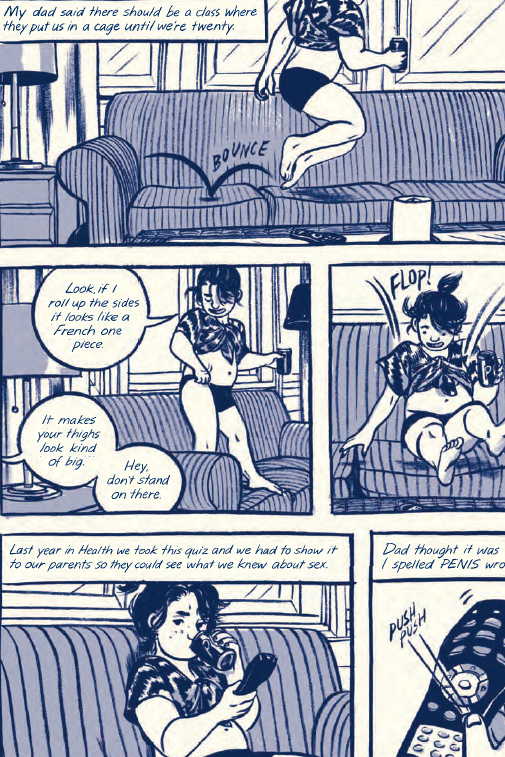 Did you ever think you’d get into comics?
Did you ever think you’d get into comics?
I had no aspirations to work in comics. But I always really liked working on collaborations. I’ve actually done a lot of theatre, and I’ve done a lot of performance art, which for me was like a more accessible version of theatre. So I’ve done a lot of actors work, and a lot of work in sort of feminist collectives and stuff. I was really into the idea of working with another artist than I was in comics per say. But I would say now that I’ve done comics, I think that they’re just an incredible medium for telling stories. The way that stories get told in my experience in comics is that it opens opportunities to tell [them] in so many different angles.
What were some of your ideas for writing this story?
I grew up in Northern Ontario, Canada. And every summer, you went to the cottage. So it was this like solid, integral part of my childhood… When it comes to comics, especially with this one, I thought of the atmosphere. I felt the background would be a good setting for a story. And I’m also kind of obsessed with transitional moments. So for me, the idea of being these young girls, and having this chunk of their lives, and analyzing that part, and all the sort of changes that would happen, even if [those changes] were all going to be during this one summer of their lives… it was something I wanted to show.
Would you say this mirrors any of your life?
Well I use to go to the cottage, but I didn’t have any of those challenges. I used some things as a beginning point, and created something fictional from that. Obviously I was a young girl at the cottage, and I had the fat young friend there too, but the characters are not really that connected to my life. The experiences that they have are not my experiences, aside from the fact that I also did go to Saint Joseph in Huron, which is the park that they go to in the book. Actually, Jillian and I as part of our research (that’s what we call it, “research”), went to Saint Joseph in Huron, went to the cottage, and spent a week in Nova Scotia which is I think one of the best places to write a book.
I think the dialogue is very down to Earth, and very easy to relate to. Is there anything that was hard for you to talk about?
During the initial draft, it was sort of a struggle to write the character of the mother because it’s hard to write somebody who’s not talking about what’s bothering them. And I think that’s so much of what Jillian brought to that character in terms of the details. Even the t-shirts that the mom wears have all these details that kind of build up that character. And we sort of went back and re-edited [her] a lot, because who wants to read about this upset mom who’s just having a bad day? I think that’s like the archetype of the “pissed-off-mom” from like ancient times on. And we wanted to see the layers of that experience. That was a really challenging thing to write, and it ended up being one of the more intriguing stuff. For whatever reason, the writing for Wendy and Rose was for me kind of easy. Their banter was just fun and easy, and it’s hard to write for someone that’s just not pleasant… it’s hard to lovingly write that.
The kids seemed to be able to live in the moment, where the older characters were concerned with other things. How was it to show that dynamic of the two?
My archetype for stuff like that has always been the “Roseanne” show. It’s about the kids, and it’s about the adults. And the problems of the kids are not entirely linked to the adults, but their completely meshed. It’s like you have these people in this microcosm and their like push-pull on each other, where they’re struggling with the same struggles. So for me, I think it’s that kind of step forward from “Skim” to this book. That challenge of really creating a story that’s not just about the kids in this little bubble; to see these layered connections between the kids in the town, these kids in their respective homes, and all other different relationships. To me some of the most interesting scenes are the ones were something of the adults reverberate to the kids; their parents get into a fight, and that trickles down from the parents and then to the kid. And I think that sort of chain reaction is a super interesting one… It’s great to see someone on an adventure, fighting for their family or what have you, but at the same time most of our reality as teenagers is connected to our parents.
It really is interesting seeing these kids’ “bubbles” being formed and shaped by their parents.
It’s like a book about trying to be an adult, just as much for the adults as it is for the kids. These parents are trying to be adults, they’re trying to do the right thing. These teenagers are trying to be adults. And it’s all these varying groups of people that have this notion of what it means to be a grownup, and that depressing challenge of it being out of your reach.
Have you found yourself open to other avenues because of your exposure to graphic novels?
I ended up doing this short film called “Happy Sixteenth Birthday Kevin,” which is a movie about a sixteen year old Goth boy, but the cast is like me and my 30 year old friends. So I did that, because comics showed me how much I love dialogue, and I try to incorporate that as much as I can in the work that I’m doing.
“This One Summer” is available now. You can buy it online, or at your local book store.
Blog: PW -The Beat (Login to Add to MyJacketFlap)
JacketFlap tags: Interview, Interviews, Comics, DC, DC Comics, Harley Quinn, Power Girl, Jimmy Palmiotti, Amanda Conner, SDCC '15, Starfire, Chad Hardin, Add a tag
By Harper W. Harris
Down in the bustle of the DC booth, I got a chance to talk with Amanda Conner, Jimmy Palmiotti, and Chad Hardin, the team behind the ever popular Harley Quinn series, as well as newer books Harley Quinn and Power Girl and Starfire.
Harper W. Harris: When you wrote issue #12 of Harley Quinn, did you always plan on expanding that story into its own series or story?
Amanda Conner: Jimmy did.
Jimmy Palmiotti: Yeah, when we writing it, I said, it would be great if we could just make it a couple weeks later when they came out of the ring, and if this team up does okay, maybe they’ll let us tell that story. And it did do okay–it did better than okay! So when we pitched it to Dan [Didio], we said, well, we’d like to take what happened during those two weeks, how Power Girl got in a wedding dress, why these three eyed cats, and make it into six issues. He said, “If you can figure out all that, then go for it.” So we did. And we had Stephane Roux that wanted to draw it–we got lucky getting Stephane, so it all came together. It was sort of not a plan, but I left the door open in case something happened.
HH: What has it been like to return to Power Girl, a character that you had such a big impact on several years ago?
AC: We actually love Power Girl so much, and we miss working on that character, so we just said lets put Power Girl and Harley together, why not!
HH: They’re a good pairing so far! So speaking of Harley Quinn, the character has obviously gotten immensely popular in the last year or so. Has that level of fan involvement or popularity changed the way you view the character or the way you aim to tell her story?
AC: Not really–I mean we always loved the character. We wanted to make her the truest Harley that we knew how. I think it’s just resonated with a lot of people, because they feel like it’s very Harley-ish. I think that might be one of the reasons people love it so much, she feels like Harley. She’s wacky, she’s crazy, a little homicidal, but lovable.
JP: We like to say it’s because of Chad’s artwork too that’s sucking everybody into the book. I mean we got lucky–again a lot of things were just timing. The timing was right for the book, the tone that we thought may or may not work actually worked. It’s always a hit or miss when you’re going to change things up a little bit. We got lucky this time, I could tell you about the 40 other times we didn’t get lucky, but that would take up a whole other interview. We’re happy this worked out!
HH: Yeah, I think a big part of its success is the fresh, funny approach to a superhero story. What is your process in writing it as a comedy? Is there a lot of throwing out ideas, sketching them out, then seeing visually a way to make the situation funnier or add a new joke?
JP: We don’t really write it so much as a comedy as this is the story, and then we find the funny, absurd moments in it. All superhero comic books could easily be done like this with everything they do, everything from the capes to how ridiculous it is, if they can do all this, then why aren’t they doing that situations. So with Harley we actually try to lay out the story very grounded, like a regular comic format, this is what’s happening. As a matter of fact, as absurd as it is sometimes, she’s actually more based in the real world than some other characters because she goes through the motions: she’s on the street, she goes from this place to that place–there’s no jump to scenery, she has to get somewhere. We have whole scenes with car services and cabs–
Chad Hardin: Or she’s at work, or eating.
JP: She’s trying to do three jobs…it’s actually really grounded. But in that, it’s sort of like our own lives, right? There are these absurd moments that we see every day and we giggle and then we forget about. With Harley we have these absurd moments and we take it to a hyper sense of reality. And then we hand it over to Chad.
CH: Whenever they hand me the script, it’s like, how can I make this…more. You know, take the football across the goal line so to speak.
AC: And you always do!
JP: We like to think of it, whether it’s perceived that way or not, as a very grounded in reality story. We could be completely wrong and be just getting by on what we think, but that’s how we see it.
AC: You can have a very grounded story, but when Harley gets involved, everything just goes upside-down.
CH: She’s the touch of chaos that spins the universe into this chaotic motion, and that’s where the absurdity comes in.
JP: I also think it’s why people like the book. It’s one of the few books–we know the procedure of a superhero book is that it’s going to have the fight and then the cliffhanger–with Harley, you actually have no idea what’s going to happen on the next page. We throw random things–like all the sudden there are 800 birds on her–like we just go randomly in places and it should be that way, because that’s how her brain acts, so it shouldn’t be so linear in that way. It seems to work and we’re always happy when we get Chad’s pages back and we’re all laughing at things that we didn’t even write that are in the background. We’re like, that’s a really good working team when everybody’s putting their best into it. And with Alex Sinclair on colors, it’s one of the most fun books I’ve ever worked on.
HH: You guys definitely have an awesome team going, a great collaboration. Chad, how is the process different drawing for writers that are very talented artists in their own right?
CH: I don’t know how to explain this so much, but it is different in that it’s the most challenging book I’ve ever been on, but I don’t know why. It just is. But I think it’s because I don’t dare dial anything in.
AC: We know where he lives.
CH: Everything’s got to be perfect, perfect, perfect. We’re crossing all the t’s and dotting all the i’s. But I think the fans really respond to that.
JP: I harass him once in a while.
CH: If Jimmy doesn’t like something, I can tell immediately. He’ll give me like a one word note, like “cool” or “awesome”–if I don’t get that, I’m like, okay, something’s wrong.
JP: Like, “Staten Island has more trees.” He drew a scene, and he doesn’t know Staten Island, it has more trees.
AC: There is no island off the coast.
CH: Oops! I actually did go to New York, I walked around Coney Island and took a million pictures. But off the coast, I have no idea. Across the Brooklyn Bridge, I have no idea.
JP: We’re dealing with a real city, there are 4 million people in Brooklyn that might have something to say if we completely turn everything away.
HH: You can’t really fake that geography.
JP: Yeah. Even with the scatapult on the roof, Amanda kind of figures out where it is using Google Maps, where it would go over buildings.
CH: We have a map of the building, the floors. I know which way it faces, we’re pretty anal about it.
AC: Oh, we’re so anal about it–I downloaded all these apps so I can know what degrees it needs to be pointed at to hit any J Train that might be going over the Williamsburg Bridge–Oh no that’s the L Train, nevermind!
HH: I wanted to talk about Starfire–how did you get attracted to that character?
AC: They asked us to write it. [Laughs]
JP: They ask, how do you feel about Starfire, I’m not sure how I feel about Starfire. Amanda definitely has more history with her.
AC: I read all the Wolfman Perez Teen Titans, so I liked the character a lot. And I’ve seen her go through a lot different incarnations.
JP: They sent us the New 52 trades, and we read those, and I was like, okay, that’s that, but we also like the cartoon a lot. We laugh our asses off at the cartoon. There’s got to be a way we can make this work for us, in order for us to have interest in writing it. Dan said, alright, then pitch how you would want to do it and we’ll see if it works with what we’re thinking. We pitched the book you have. We said it’s a new town and she doesn’t want to be a superhero so much, like a new start. And they went for it. I think they had confidence with us doing Harley that maybe we could handle that. I don’t think we would’ve been offered it if we weren’t doing Harley. I don’t think it would’ve been a book they would have come to us with, so we hard to earn that book.
Harley Quinn #17, Starfire #2, and Harley Quinn and Power Girl #1 are all in stores now, with new issues coming soon!
Blog: PW -The Beat (Login to Add to MyJacketFlap)
JacketFlap tags: Interviews, Comics, Dark Horse, Dark Horse Comics, eric powell, SDCC '15, The Goon, The goon once upon a hard time, SDCC'15, Add a tag
On the SDCC floor we caught up with creator of The Goon, Eric Powell, to talk about what could be the end for one of comic’s biggest cult icons as he wraps up The Goon: Once Upon a Hard Time. Read his thoughts about the challenges facing the modern creator owned era, an update from Hollywood, and some advice for throwing 4th of July parties.
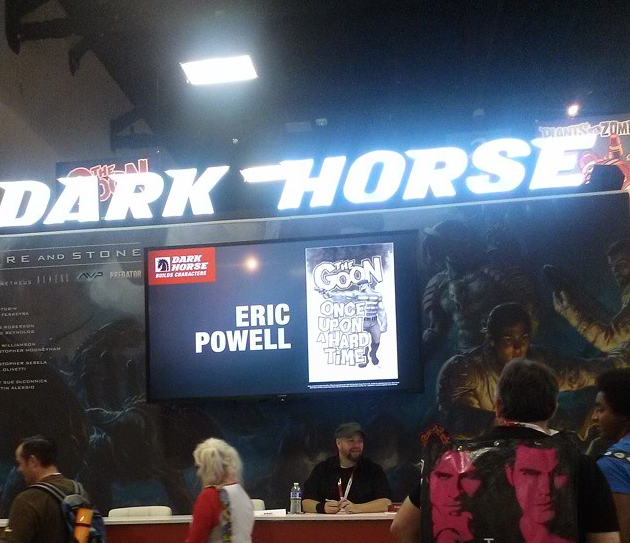
Comics Beat: First I had a friend of mine, I told him I’d be talking to you. He grabs me on the shoulder and says “You gotta ask Eric if he’s ever lit a car on fire!” is there a story to that?
Eric Powell: Yes [laughs] and the answer is yes. No for a long time I lived in a town called Lebanon Tennessee, which is about half an hour outside of Nashville. I had about seven acres, so we lived out in the middle of nowhere and I used to have pretty epic Fourth of July parties every year. It escalated from, you know, just having a bond fire to an entire like living room suite that we set on fire. [We] sat on the couches and took photos with the entire living room on fire. [Laughs] And one year, this was the topper. I’m not endorsing this… this is not a good idea; it’s actually a very dumb idea. We filled an old wrecked 1972 Nova with about $600 worth of fireworks and about three gallons of gas.
CB: Wow!
EP: We had on a giant amp system… crap I’m drawing a blank. Oh, it was Jimmy Hendrix’s “National Anthem” blasting.
CB: [laughs] That sounds like the right way to celebrate America.
EP: It was an epic 4th of July party. It was so good and so over the top that I was just like… I don’t think I should have parties any more because this one will never be topped.
CB: Once you hit the top right.
EP: It was the pinnacle and once you hit the pinnacle, you know.
Comics Beat: That brings me to my next question about hitting the pinnacle with Once Upon A Hard Time. We’re approaching the end of this run; are you still certain this is going to be the last story with “The Goon”?
Eric Powell: I don’t want to give too much away but if you want to consider everything I’ve done [with the character] as one story; this is definitely wrapping up what I started in the first issue of The Goon back in 1999. Now, Dark Horse is putting out these Library editions. What’s great about it is we’ll be able to take this entire arc and have these nice hardcover collections that give you the entire story in one batch [including all the previous hard to find stuff]. But I’m not giving up on that universe that I’ve established. Like I said, I don’t want to give too much away but I will be doing some stuff that is directly connected to what I’ve established there. I’ve got a new project that hasn’t been announced yet, but will shortly, that deals with this universe.
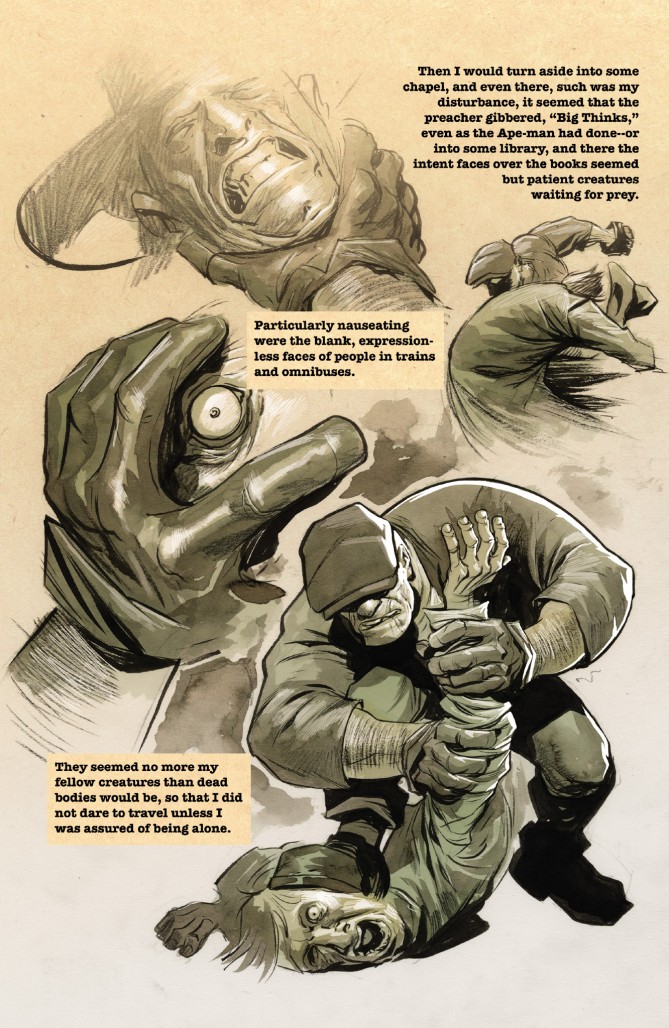
The Goon: Once Upon a Hard Time #2
CB: That sounds awesome especially with so much to this universe readers might not pick up on. You’re not giving up the whole universe but will we still see The Goon?
EB: We’ll have to see. Read the last issue of Once Upon a Hard Time [laughs]
CB: That’s just wrong man! [laughs]
Issue four’s had a bit of a delay; has that been because of you going back and having difficulty finding the right note to go out on?
EB: A little bit of that. There was definitely a lot of back and fourth on the script and I’m putting a little bit extra into the art. Also my schedule just got really crazy with Big Man Plans and some cover work; then it was convention season so it got a little behind. Really I just wanted this issue because it is wrapping everything up… I just wanted to do the best I can on it.
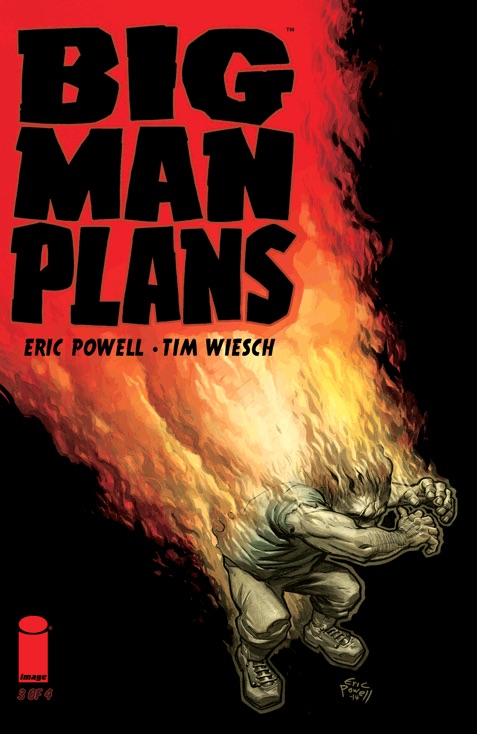
Big Man Plans #3 from Image Comics
Comics Beat: Very few have ever created something and even fewer with the longevity of The Goon, I completely understand. So, what’s your take on the wave of modern creator owned work?
Eric Powell: I’m really excited and happy to see so many people doing great creator owned books and to see it finally breaking out. Where you can have a book with no movie or TV tie-in selling 20 or 30 thousand copies and competing with stuff Marvel and DC is doing.
CB: It’s been a great thing for comics overall.
EP: It has, it’s helped the industry.
CB: More now than ever with stuff by independent creators there seems to be a flavor for everyone.
EP: Exactly, and I’ve caught a lot of flack talking about the need for it.
CB: [laughs] you’ve caught flack for a lot of different things.
EP: Yeah, but I’ve cost my self some work from it because I was so vocal, but I felt like I should stick to my guns and speak up. I grew up a Marvel kid. I read Marvel Comics, I love that stuff. I love the Hulk. Seeing that scene in Avengers where he picks up Loki and smashes him on the floor; I was giddy. But do I think that stuff should be given special treatment on the stands or the thing shops are solely ordering? We should be like television and we should be like film and we should have something out there everyone can like [for different audiences] to build a broader readership. Over the last five years or so it’s been exploding. We’ve got a huge female readership that’s opening up. It’s great. We need diversity, we need diversification, and the content to survive and grow.
Comics Beat: True. With the recent partnership Dark Horse has announced. If that relationship were able to push The Goon into full feature (further than its been) would you come back and do another story to go along with it?
Eric Powell: Well we’re still working on our animated film. Tim Miller who’s the director of the Deadpool movie, his company Blur Studio, along with Jeff Fowler has been trying to get this thing off the ground. We’re still trying to get a studio behind it while finishing edits on the animatic we funded through Kickstarter. They’re putting together a package with Fincher again and going out and doing the hard sell. We’re still pushing it and trying to get this thing done.
CB: Well we hope to see it sooner than later considering you won’t tell me if I’ll ever get another Goon story. Thank you Eric Powell for talking with us; and every brutal, hilarious, and captivating moment since ’99.
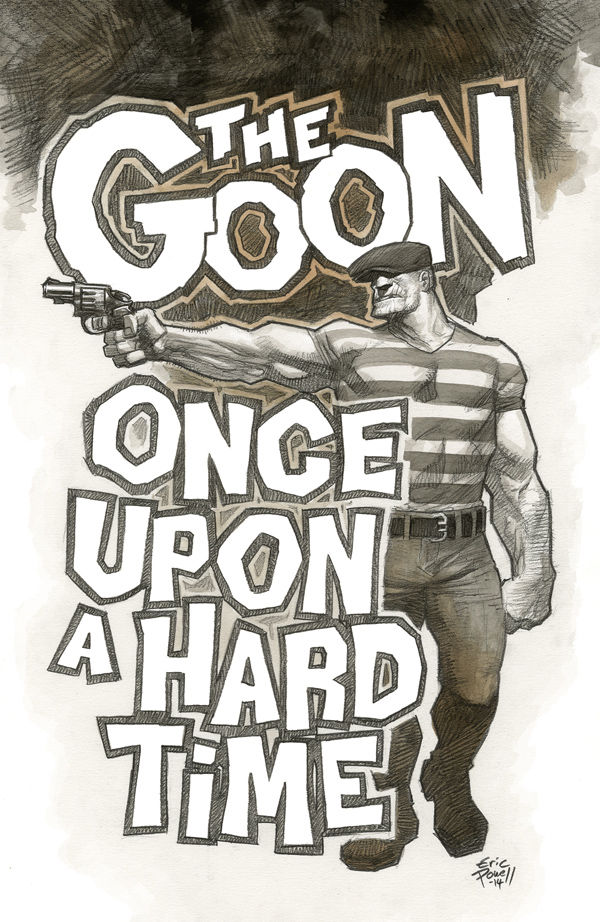
Once Upon a Hard Time #4
Ladies and gentlemen, Eric Powell has been on a hell of a run with The Goon and we can’t wait to see how he brings it to a close. It’s not too late to jump into the world of The Goon. Once Upon a Hard Time #4 comes out August. His other current project, Big Man Plans, published by Image Comics is also in stores now. Pick them all up and invite him to your 4th of July party at your own risk.
Blog: PW -The Beat (Login to Add to MyJacketFlap)
JacketFlap tags: Interviews, Comics, DC, Grayson, DC Comics, tim seeley, Tom King, SDCC '15, Spyral, Add a tag
By Harper W. Harris
Among the DC books that sparked a sort of revolution for the publisher in terms of new kinds of stories is Grayson, the espionage comic by Tom King, Tim Seeley, and Mikel Janin. In a nice and surprisingly quiet corner of the convention, I was able to sit down and have a chat with King and Seeley about the former Robin that they have brought to such exciting new heights.
Harper W. Harris: Grayson kind of paved the way for a lot of the genre books…
[Tim and Tom do a fist bump]
HH: Yeah! And it kind helped start a cool revolution for DC in terms of what kind of books they were putting out. What do you feel are the challenges or advantages of telling a more genre story within a superhero universe?
Tim Seeley: Inherently superheroes are always really flexible and always have been. You’re sort of making a hero that’s bigger than an idea, bigger than one person, and you can put it into so many different things. Obviously Batman is sort of more of a detective story, Superman is more of a science fiction story, but they all are superhero stories. So I think our approach to this was, let’s do an espionage style genre story, but let’s firmly embrace its superhero roots. You kind of get that wonderful fusion that makes superheroes the most popular genre on earth at this point, they’re so flexible and available to embrace new things while still being stories that are aspirational and colorful and fun and crazy.
Tom King: The approach was never for us to just write in the spy genre, it was let’s write the best Dick Grayson story we can. Like, growing up I didn’t realize I was reading different genres. I didn’t realize when I was reading [Walt] Simonson’s Thor that I was reading a huge fantasy epic. It still felt like a superhero story to me.
TS: Yeah, sure.
TK: Or like I didn’t read the noir detective stuff of [Batman] Year One, like I didn’t get that he was using all those tricks. I think we’re taking the spy genre and using that to tell the best superhero stories. We’re stealing some tropes to inject some energy. We’re superhero writers, we want to write frickin’ awesome superhero stories. Am I allowed to say that? I’m saying it.
HH: I think you’re entitled to that! One of the other cool things about the book getting started is that we know Grant Morrison always gives us tons of great characters and ideas with his books, and most of those never get used again. How did you decide to follow up on some of those threads from Batman, Inc.?
TK: My main approach to that was to throw away my part of the pitch and take Tim’s.
TS: [Laughs] That’s exactly how I’ve always thought of Grant’s stuff, he blows in with a bunch of crazy ideas and then just drops the mic and walks out, and a lot of people don’t pick up on that stuff because it’s too weird or so Grant Morrison. I feel like I’ve been reading his stuff for so long and recognize how great these ideas are, and it’s frustrating that nobody picks them up, so I was going to rectify that wrong. I’m going to use this amazing thing he left behind called Spyral, it has to be used because it’s so weird and so fun. When DC said make Dick a spy, I couldn’t think of anything for my first pitch, and Chris Burnham sat in my studio and he was drawing the Batman, Inc. stuff and he had left a Spyral symbol on the table and I was like, “That’s it! I’ll use Spyral.”
TK: I’ve never heard that story! That’s an exclusive story, I’ve been on every interview with him and I’ve never heard that before.
TS: Chris designed that symbol. It helps to be around comics dudes all the time so you can steal their ideas. It seemed so appropriate for the character, because Dick is such a black and white guy, there’s good and bad and he’s always going to do the right thing, but he’s going to work for somebody that’s completely gray. Therein lay the conflict of our issues.
HH: Seems like Kathy Kane showed up at the end of issue eight…do you have plans to further her story?
TK: In this series, nothing is what it seems. We keep saying this and we’re going to keep saying it: our goal is 100% to surprise you. We never want you to be relaxed and to be like, okay I know where this is going, I’m going to sit down and read another villain of the month–I don’t like those kinds of comics. I want the stakes to be high, I want you to be blown away by what you’re reading. So I can’t spoil what’s going to happen, but it’s not what you think is going to happen.
TS: Keep in mind that Spyral’s whole thing is spreading disinformation and mind control, and sometimes we may be playing the Spyral game on the readers. That’s how we keep ourselves entertained: by being the villains that we portray in the comic book.
TK: You need to put lipstick on then.
TS: It looks very nice. [Laughs]
HH: When you first started out, did you always plan to move Helena to where she is now? Was that a longform plan?
TS: I think one of our ideas was to always change it up, that their relationship is always changing: she’s his partner, she’s his boss, he’s her boss, they’re romantically involved, they’re not. What makes it fun is as a reader you’re constantly second guessing what the plan is, you know? That was definitely part of the deal.
TK: We’d introduced this character, The Tiger, Agent One, as sort of the best spy in the DCU. He’s this Afghani, the Tiger king of Kandahar, he’s such a frickin’ great character. As soon as I put him on the page I wanted him to be Dick’s partner, I loved the chemistry between them and I loved where they could go together and I wanted to elevate him. The idea of having them as partners and Helena above him is just too appealing. As soon as I said it, I was like, “Alright.”
TS: It changes up Dick’s relationships with the other characters too, because Helena was a very understanding but firm partner, Tiger’s just always telling him he’s an idiot. Their relationship changes, and it keeps allowing us to keep making a book about all kinds of different things.
HH: So there have been some hints here and there that Dick Grayson might be bisexual, is that something that you guys plan on expanding?
TK: Who said that?
TS: No, I mean…
TK: He was talking about his bow tie.
TS: He was talking about his bow tie, for sure. I mean for us there’s some fun in the sexy aspect of the spy genre, but I think to us the character is a very flexible guy. I don’t know if its our job in this particular story to do anything that changes his sexuality, but I think it’s fun to play around with it because part of his job is to be the seducer. It also involves playing parts that are not necessarily who he is, and part of it is him sometimes discovering things about himself as he plays parts. It’s just another of our ways of keeping you guessing, that’s the fun, right? And he was talking about his tie! I don’t know what you guys are talking about.
HH: You guys have a unique collaboration in how you co-write, alternating scripts. What do you think makes your partnership and method a good one for this book?
TK: I come from this school of superhero comics where I sort of worship Frank Miller and Alan Moore, if you read my other stuff like Omega Men you’ll see that. I want to tell dark dirges and philosophical stories, and that is not who Dick Grayson is. There is a Dick Grayson story out there, that it’s always tempting to be like, he was raised by Batman and he hates it, and Batman sort of abused him and put him in this situation and he’s sad and thinks about it while he looks into his belly button. I would probably write that story–I wrote a whole novel for Simon & Schuster that was about that concept. Tim’s here to say, “Tom, no, this is fun and exciting and amazing, let’s do a supercool adventure comic!”
TS: I mean yeah, I’m the lighter of the two as far as our approach to superheroes goes. But what Tom brings is his interesting perspective in that he’s been in the field and he’s done that sort of thing and knows the emotional weight of it. And I think the way the book works is that you feel this sort of back and forth that is kind of like what Dick’s life is probably like, where it could be very complex and dark, and you get an issue like #3 that’s very much a Tom story with Agent Eight, but we can also do an issue like #4 that’s somewhat lighter and sort of about the youthful aspect of Dick Grayson. I think when Tom and I first started talking about this book, we would just have this long conversation about what it means to be Dick and what his place in the DCU is. In the end we batted around a lot of stuff and some of it was the same and some of it wasn’t, but when we got down to it we totally agreed on what he is. So what kind of book he’s in can change, but who he is I think we agree 100%. I think that’s why we get a book that people respond to; I wouldn’t have wrote the book the way it is without Tom, and Tom wouldn’t have wrote the book the way it is without me. And neither of us could’ve written it the way it is without Mikel Janin or Jeromy Cox. It’s all about that collaboration, and that’s why the book is what it is. It’s a lot of voices melding into one solid voice.
HH: What real or fictional spies are your inspirations for Dick Grayson?
TS: Go ahead, real life spy.
TK: My buddy Fred, my buddy Jane…
TS: All the sudden the sniper light is on your head…
TK: Can I give like the stupid avoiding answer? Dick Grayson of Spyral, that character, he doesn’t need another character to be laid over him. He’s got 75 years of history, he’s older than James Bond. James Bond was inspired by him!
TS: Suck it Ian Fleming!
TK: I’m not trying to write a book that’s James Bond in the DCU, I’m trying to write a book that is Dick Grayson in the DCU.
TS: I think that’s the answer, yeah. The job of the book is to play with the tropes that you’re familiar with in the spy genre, to play with the kind of story that you’re used to, but to do it differently and to add this character who is the heart of the story. Dick, being who he is, and his history–that’s really the core of the book. We know as people who have seen a lot of movies and read a lot of books and read a lot of comics what a spy story is and what those characters are, but to us it’s about playing against them or playing with the tropes. It’s about Dick Grayson, first. That was a good answer Tom, that wasn’t a cheesy answer that was a good answer!
TK: The trade just came out, it’s the hardcover, and we’re so proud of it. It’s the first volume and it has my Future’s End issue in it, which was the weird backwards one which I can’t believe how proud I am of that issue. Please check it out!
Grayson #9 is on shelves now, with #10 coming out on 7/22, and the hardcover first volume is also out as well!
View Next 25 Posts



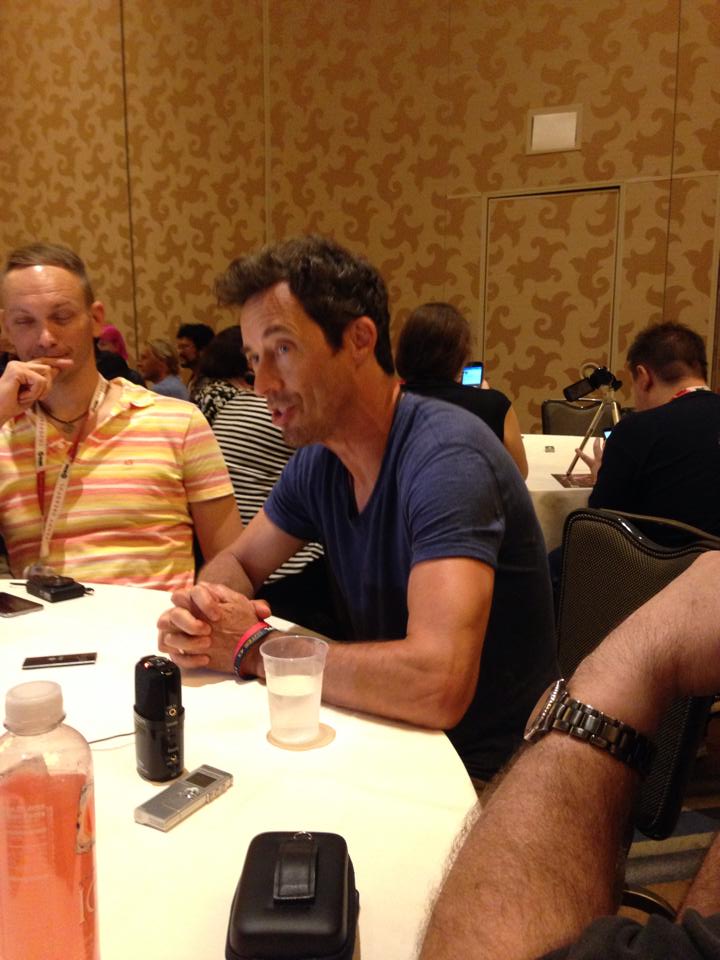














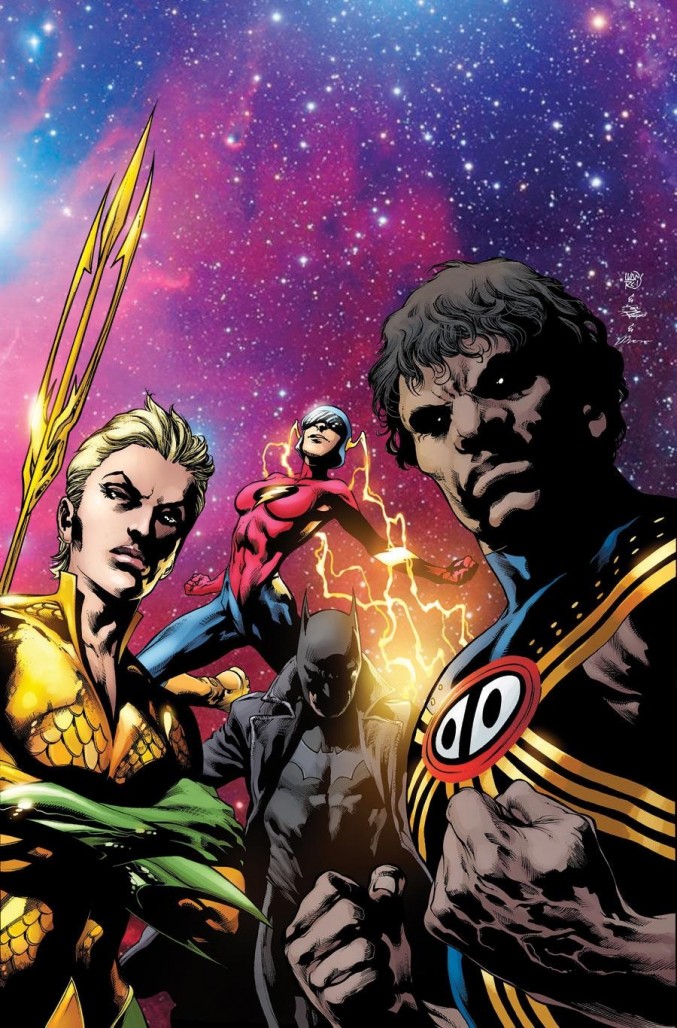
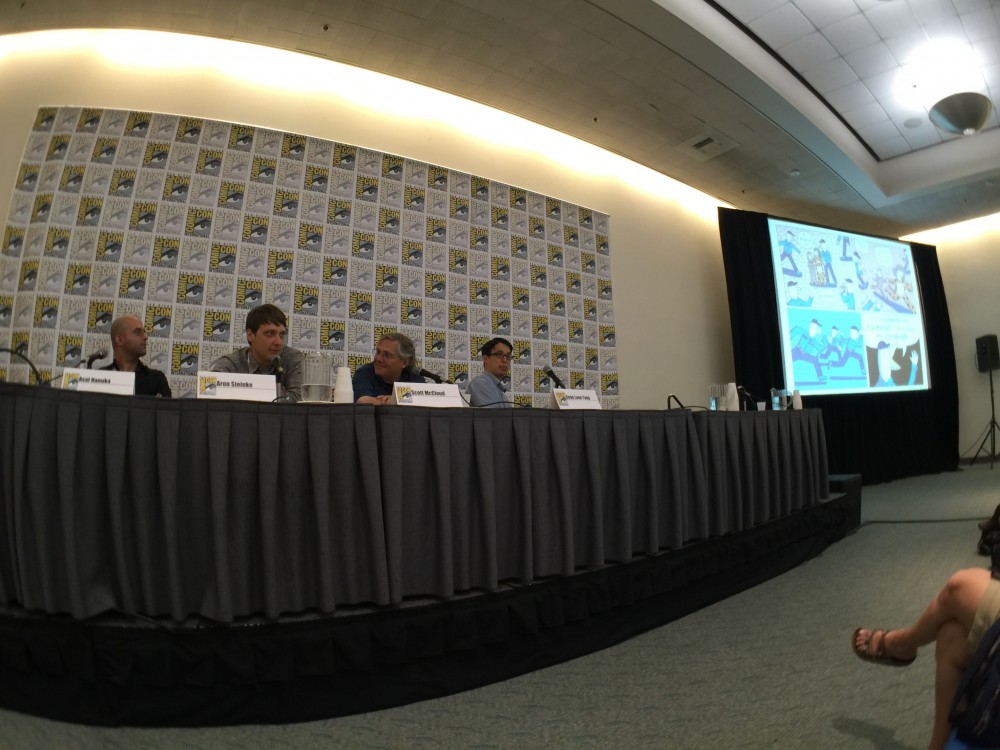
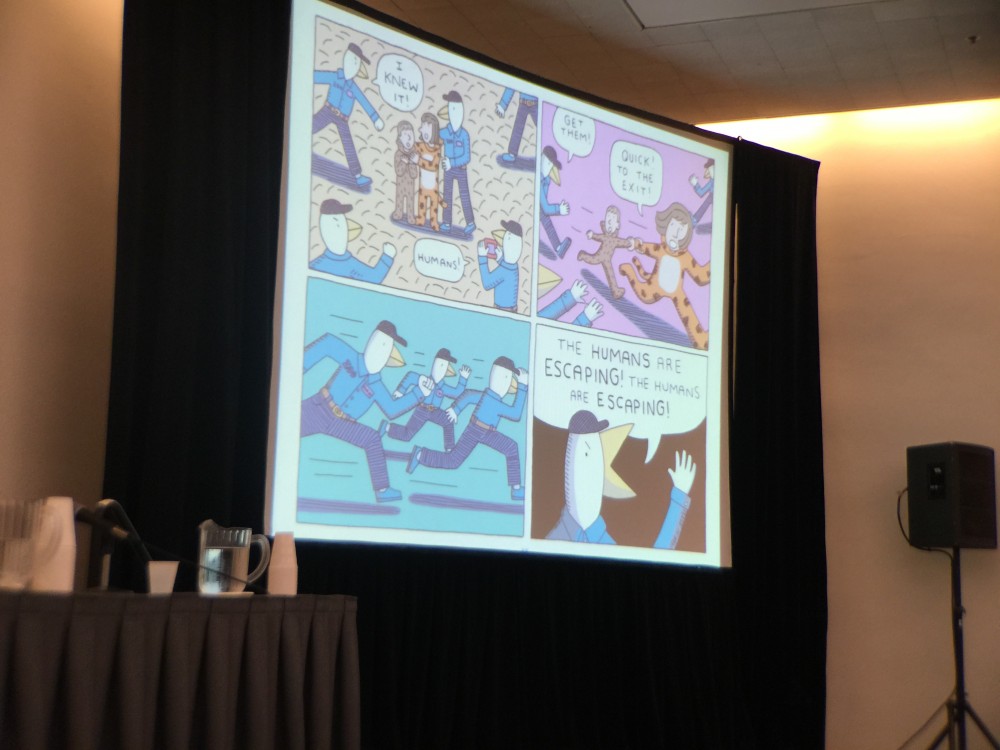
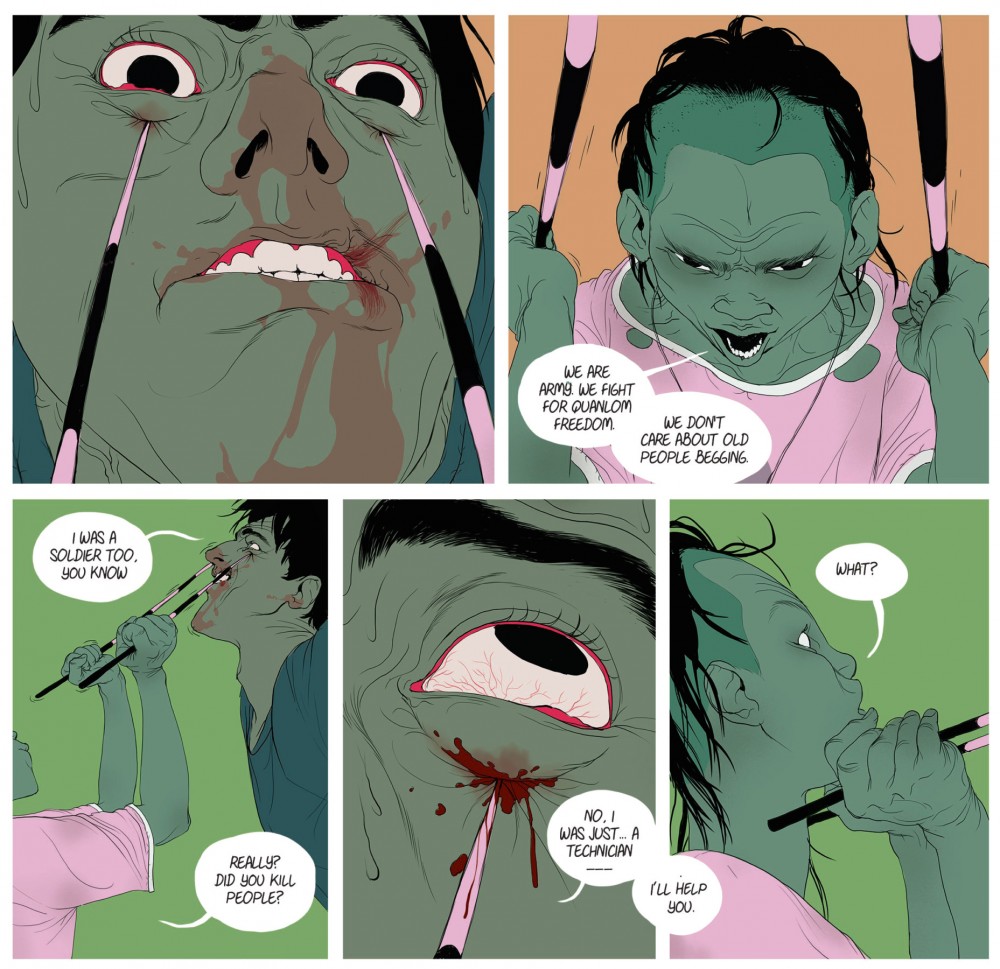
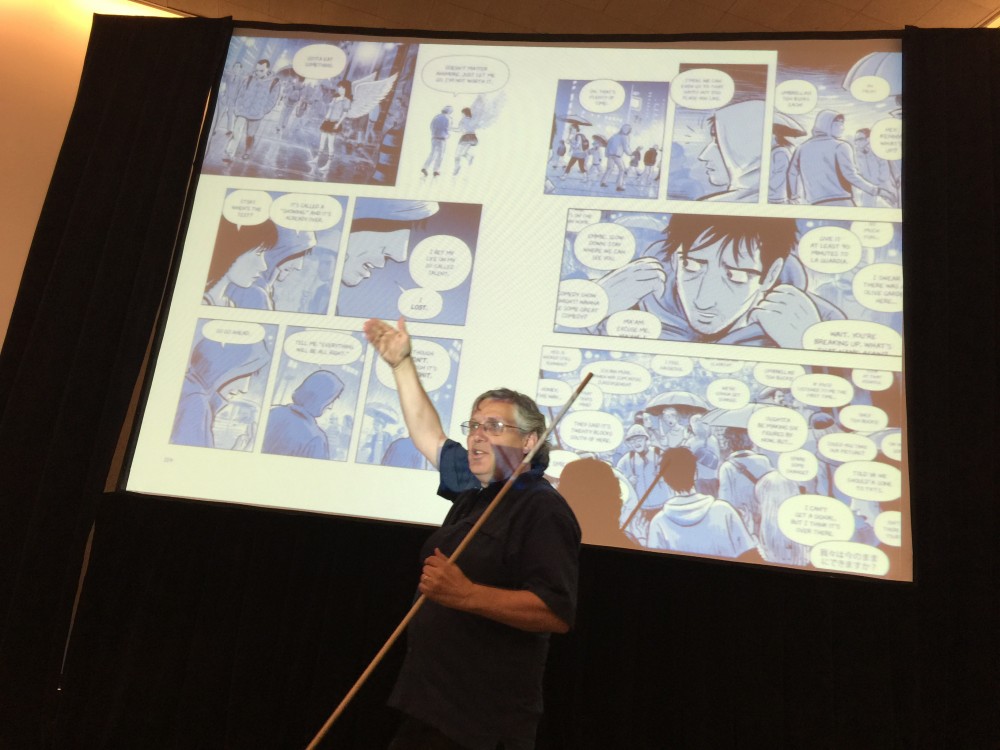
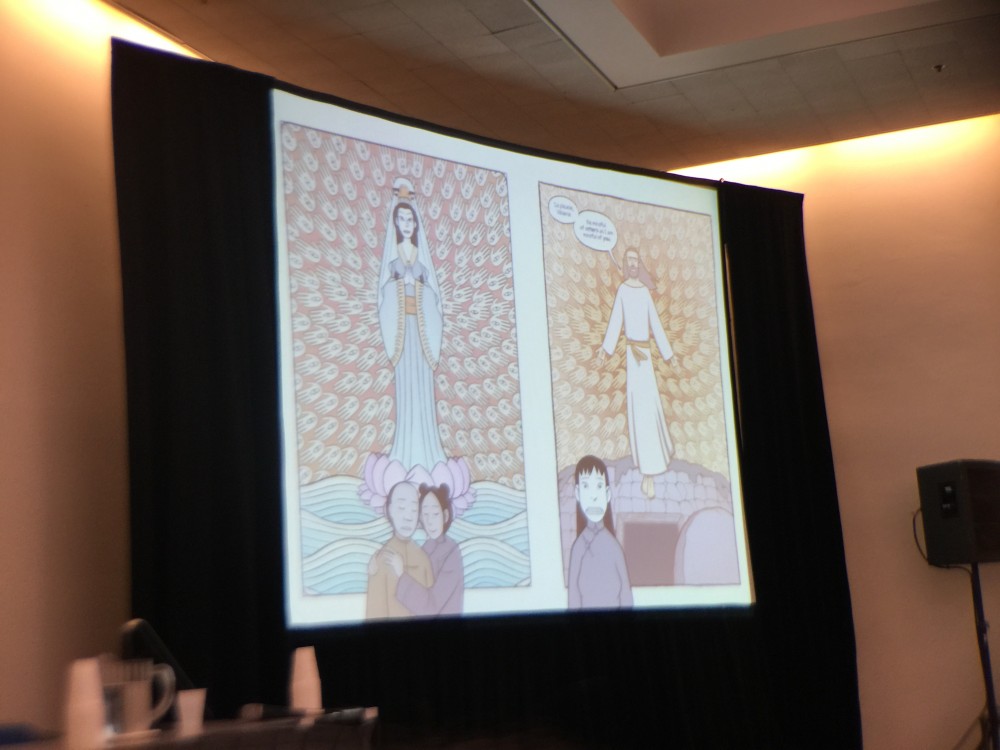
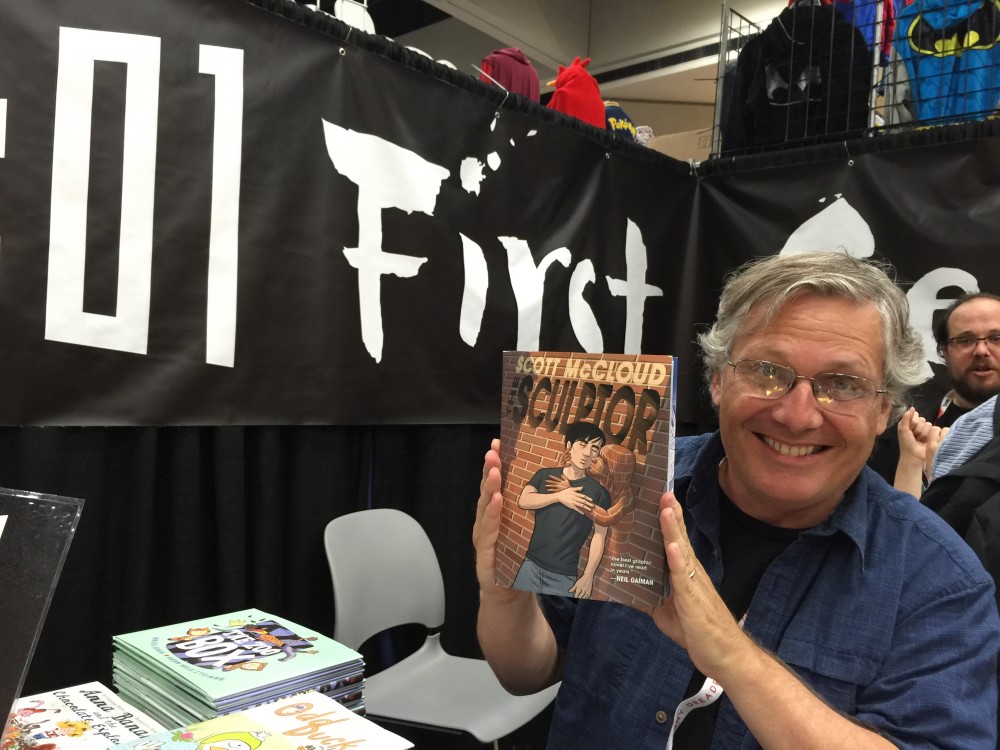
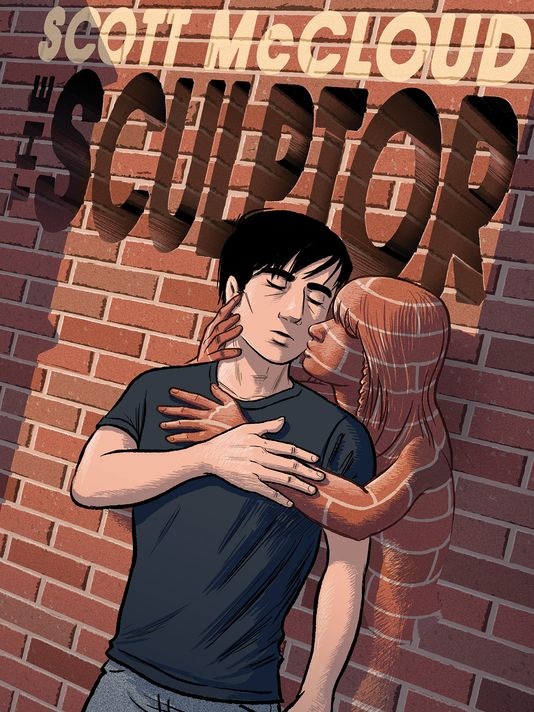
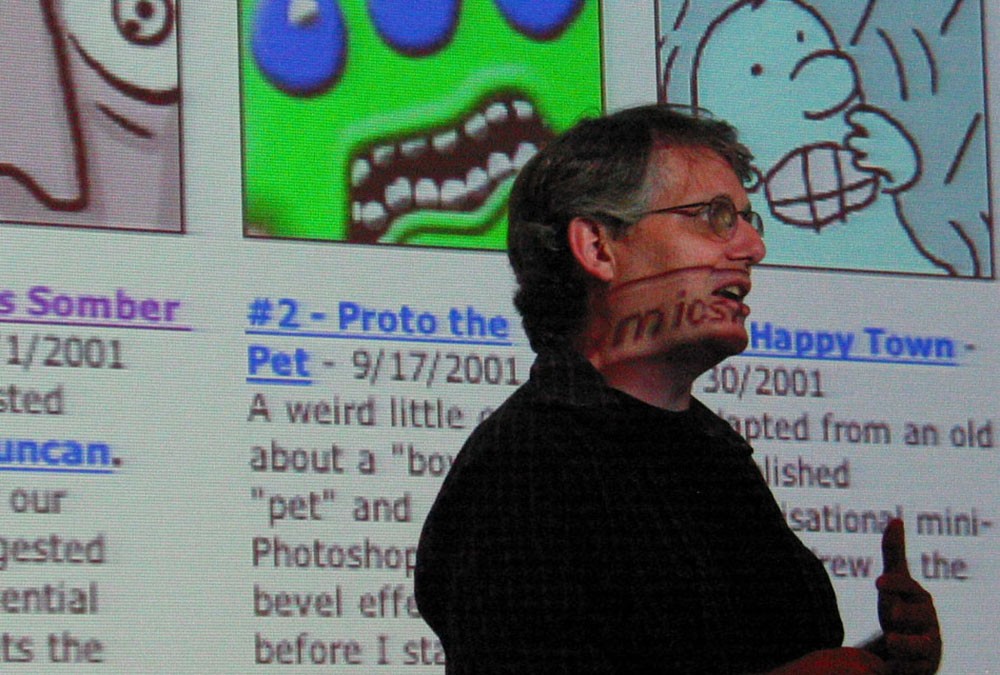
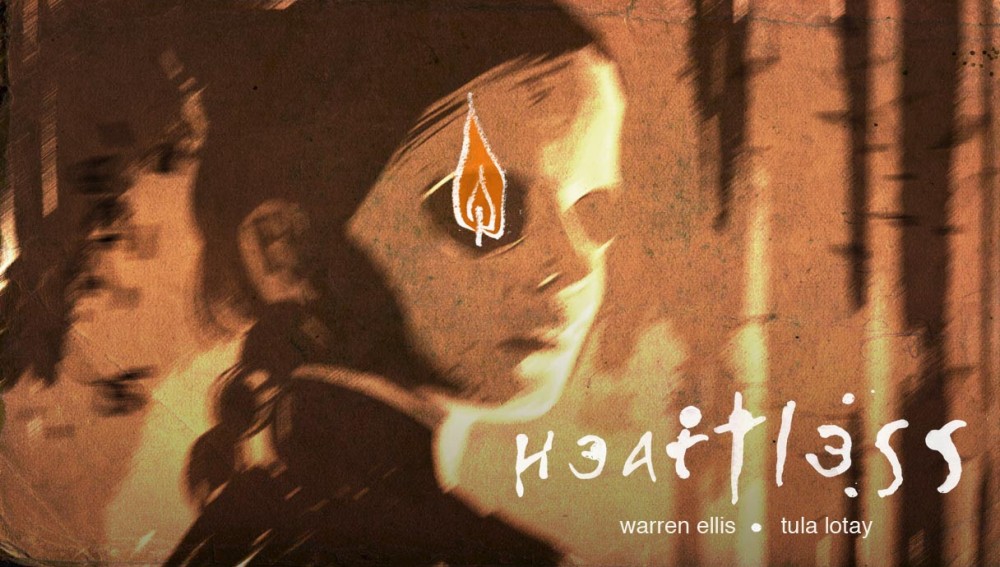

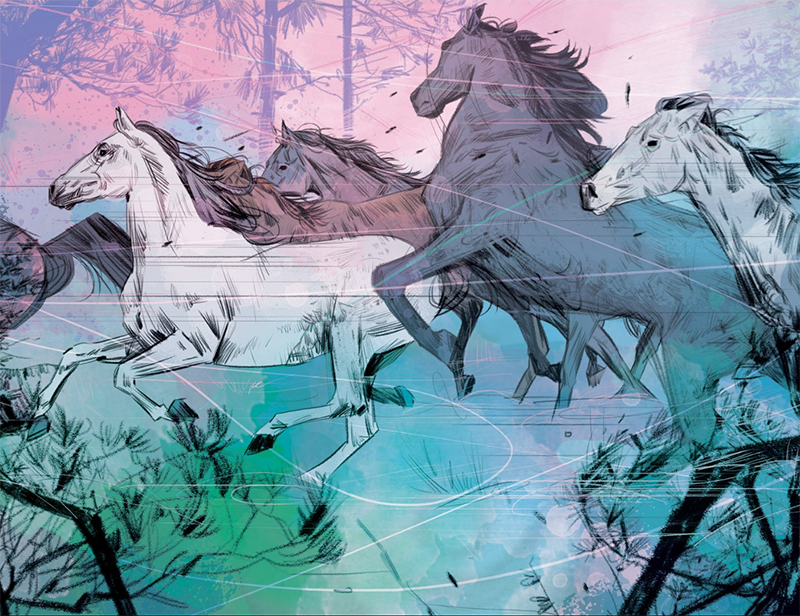
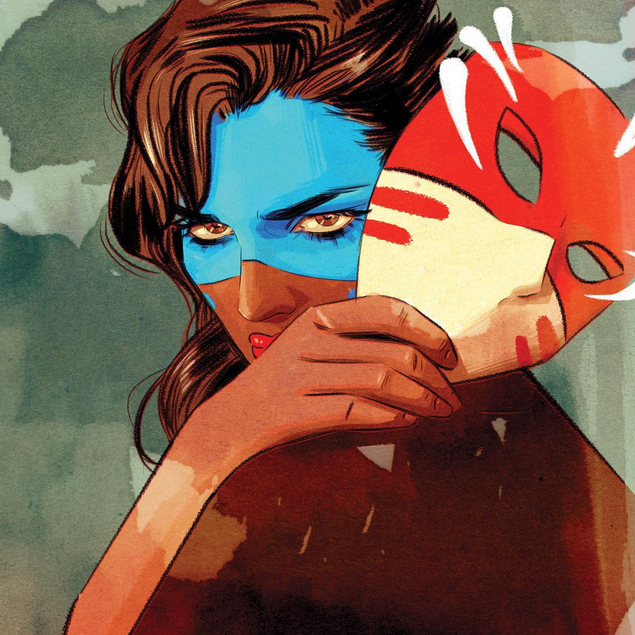
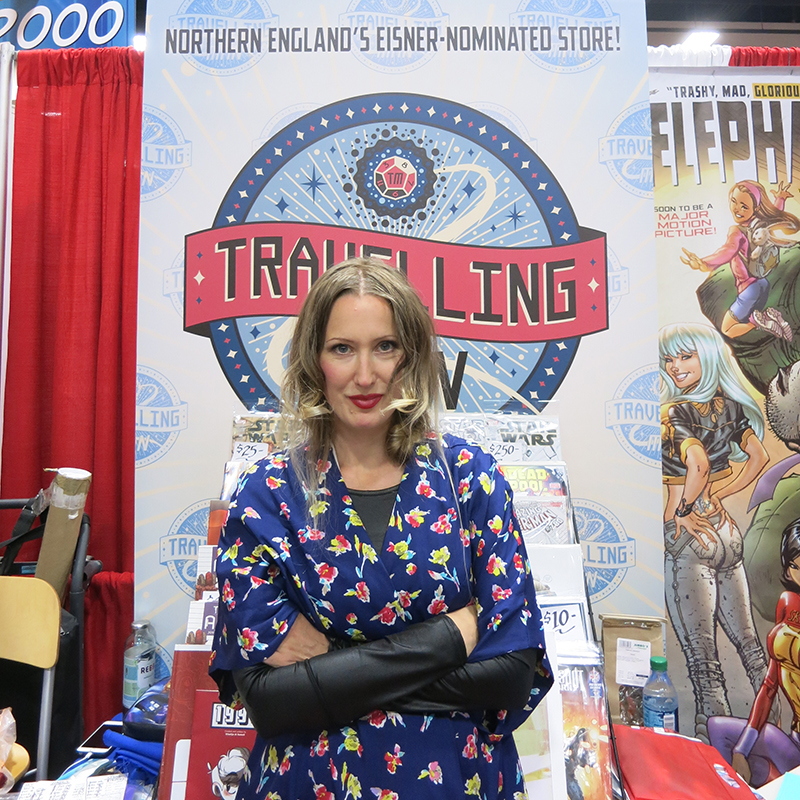
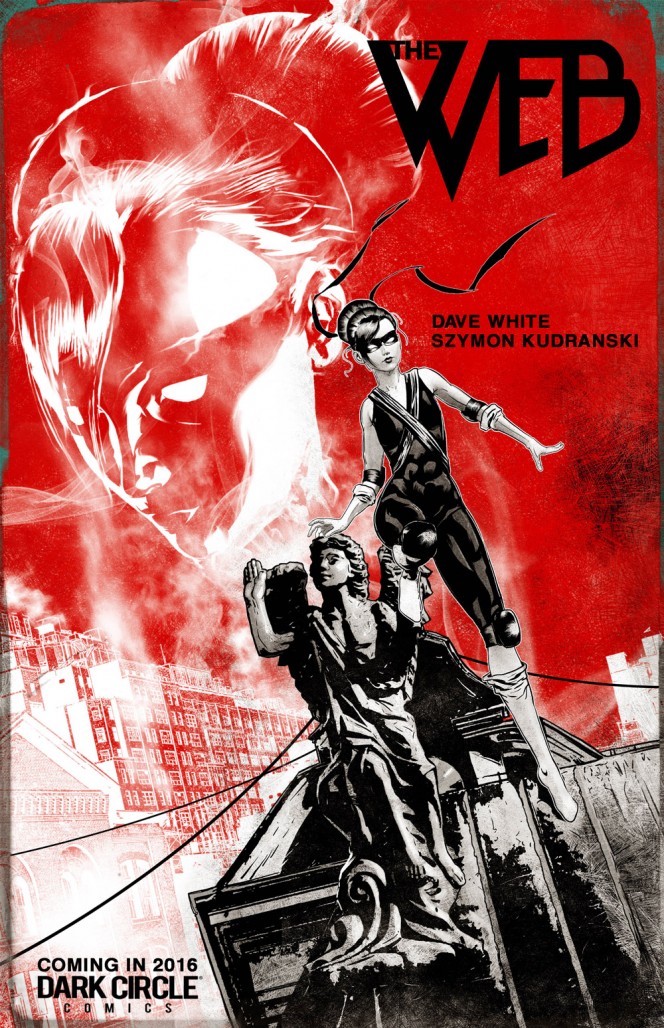
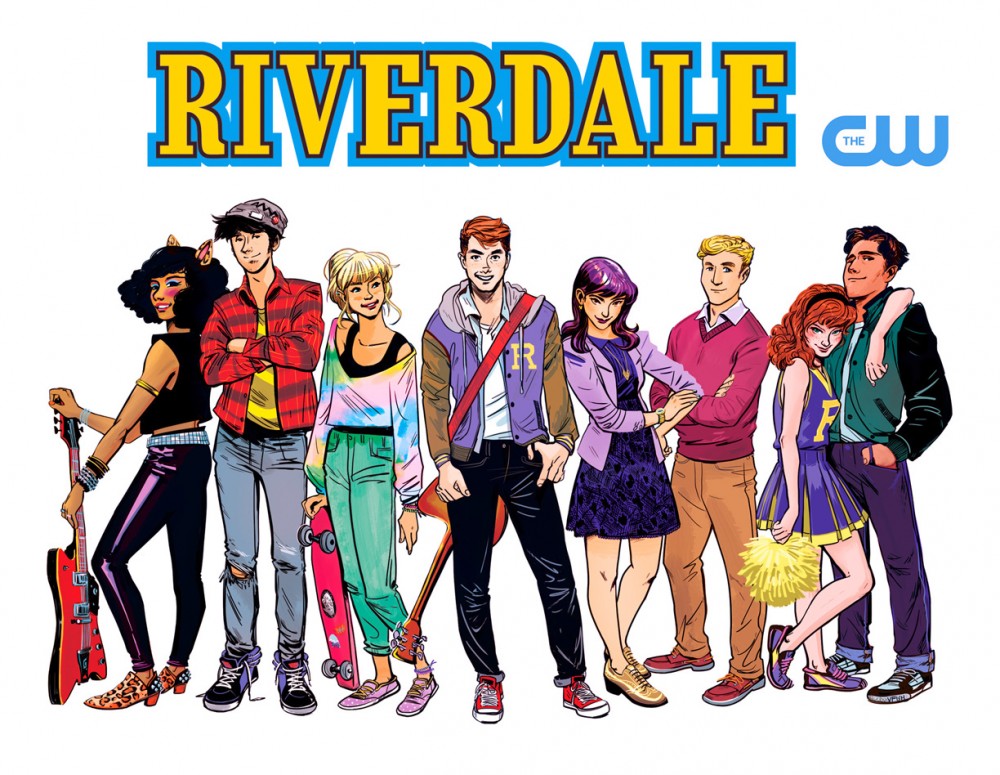
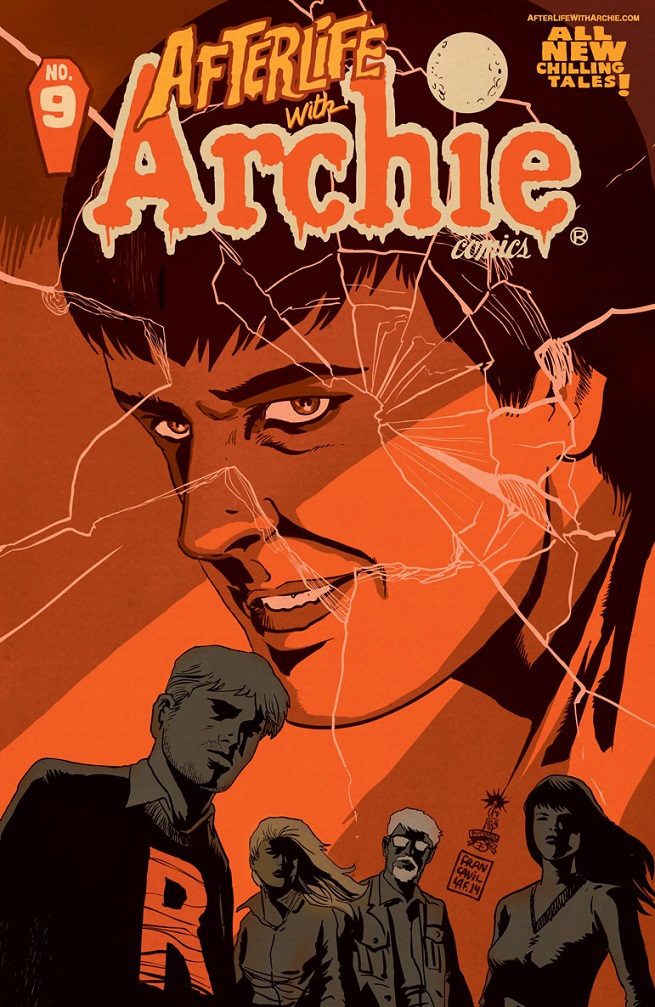
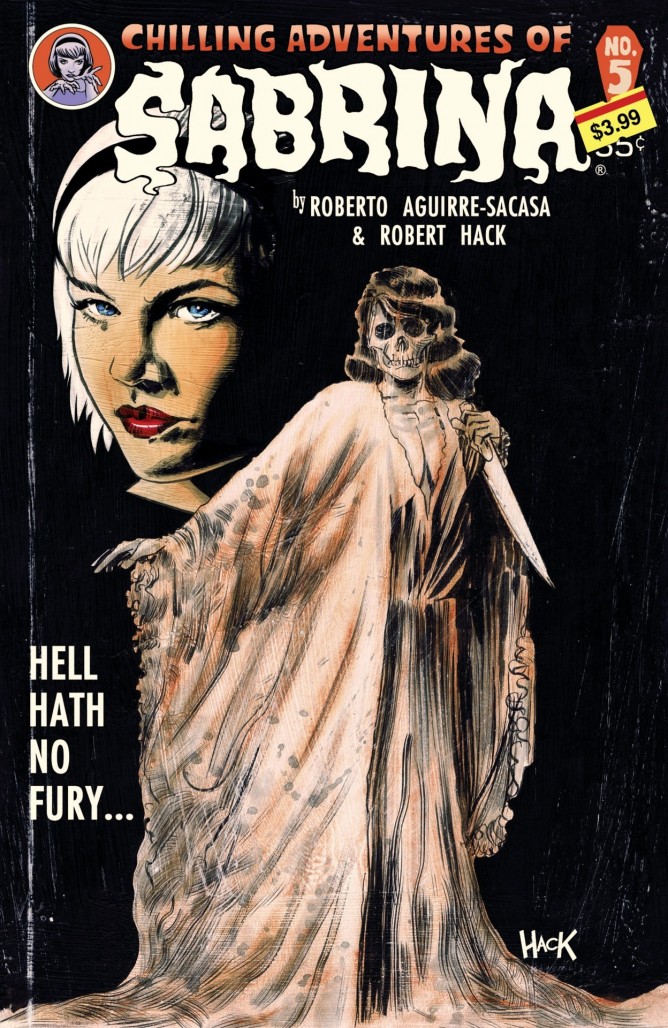

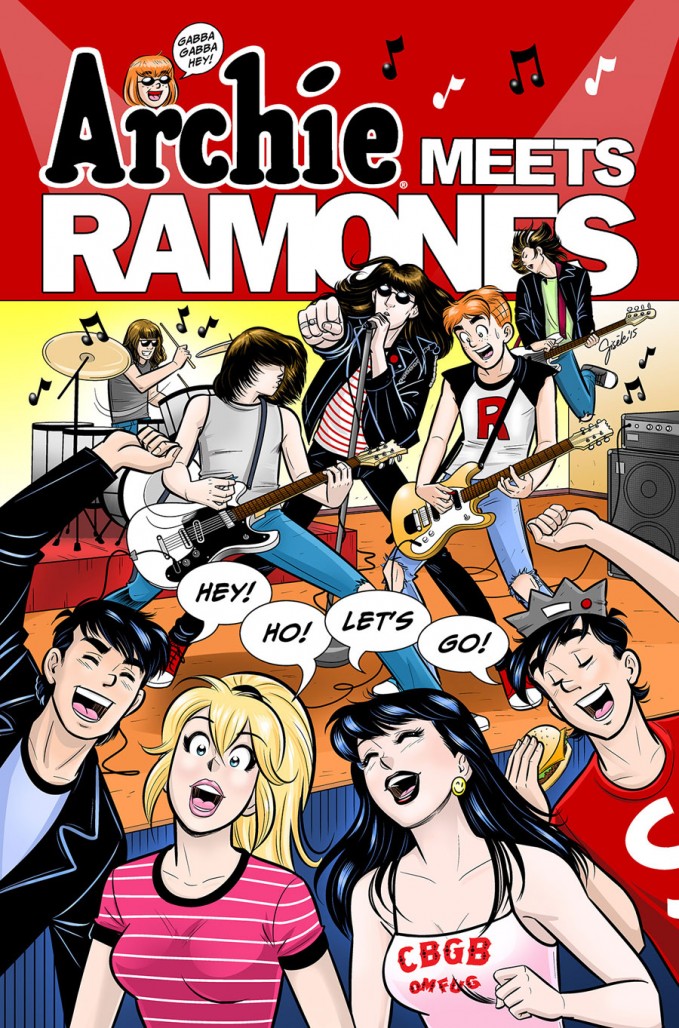
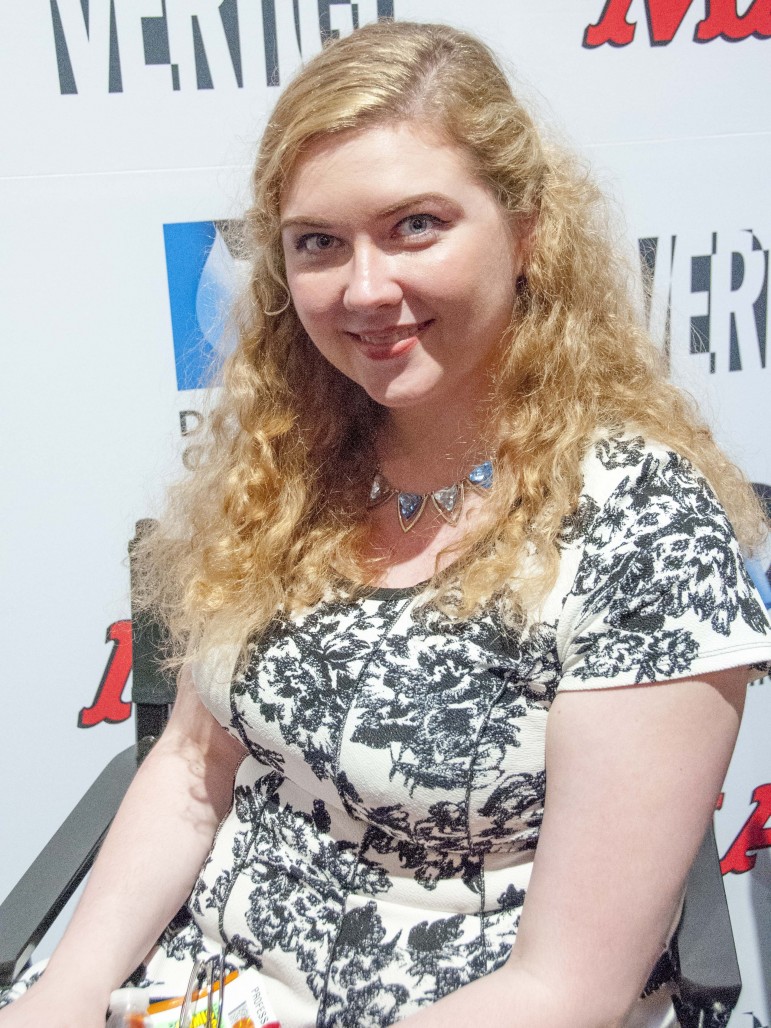
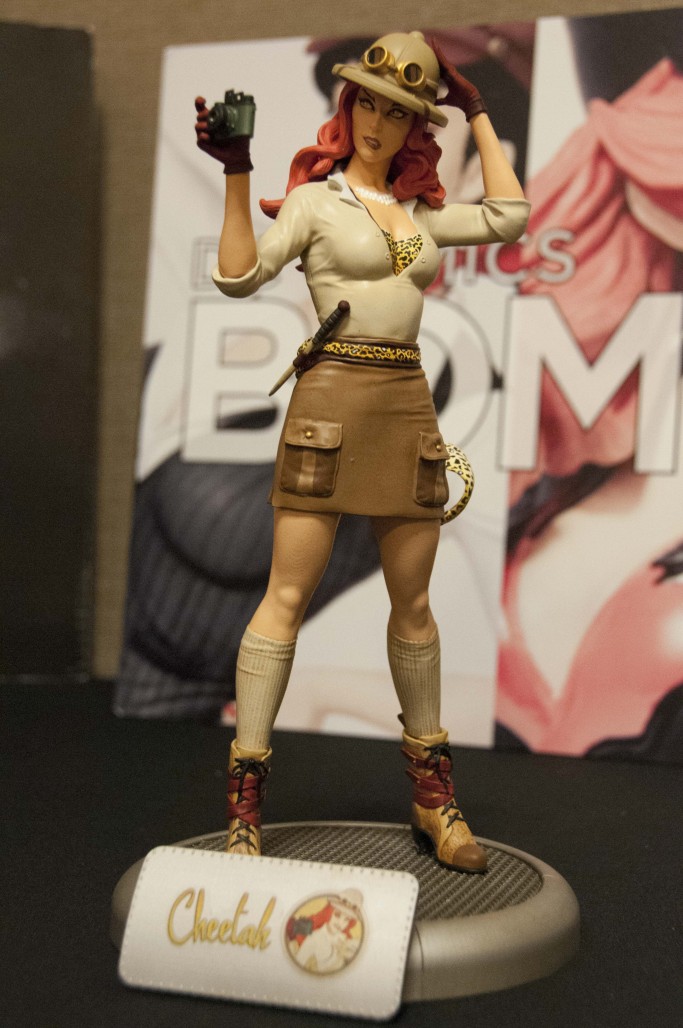
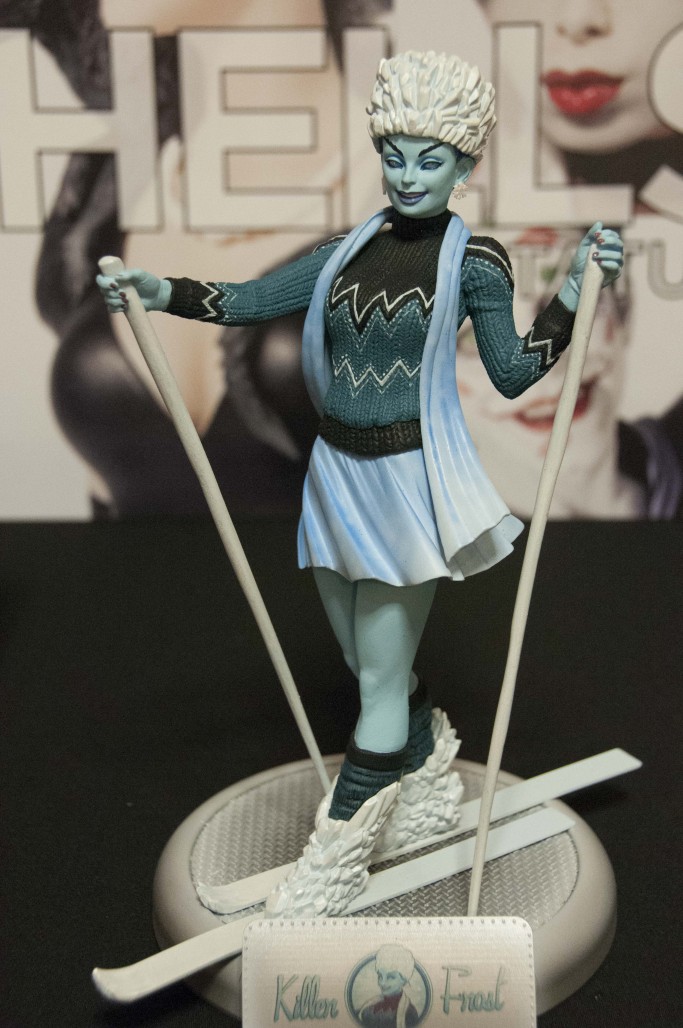
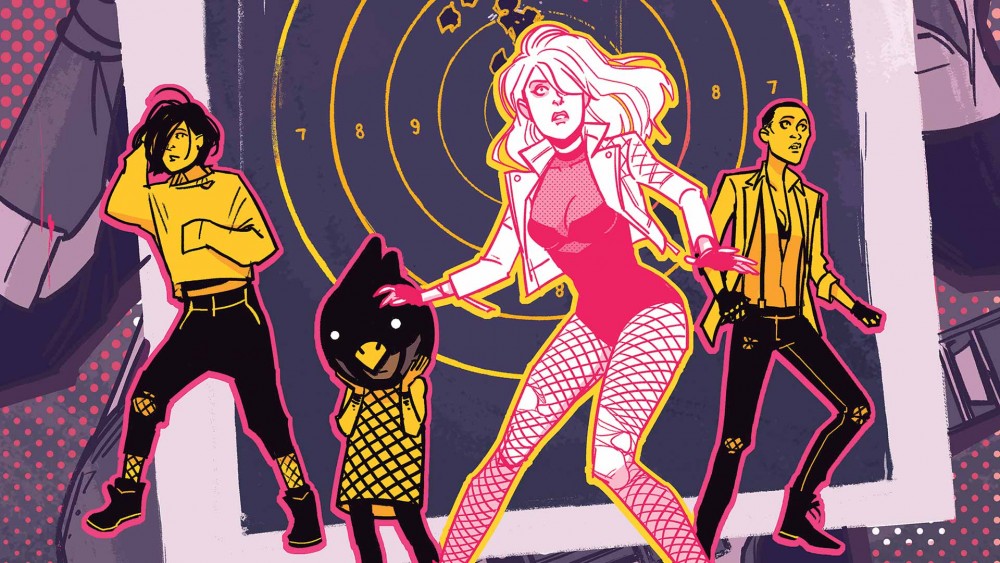
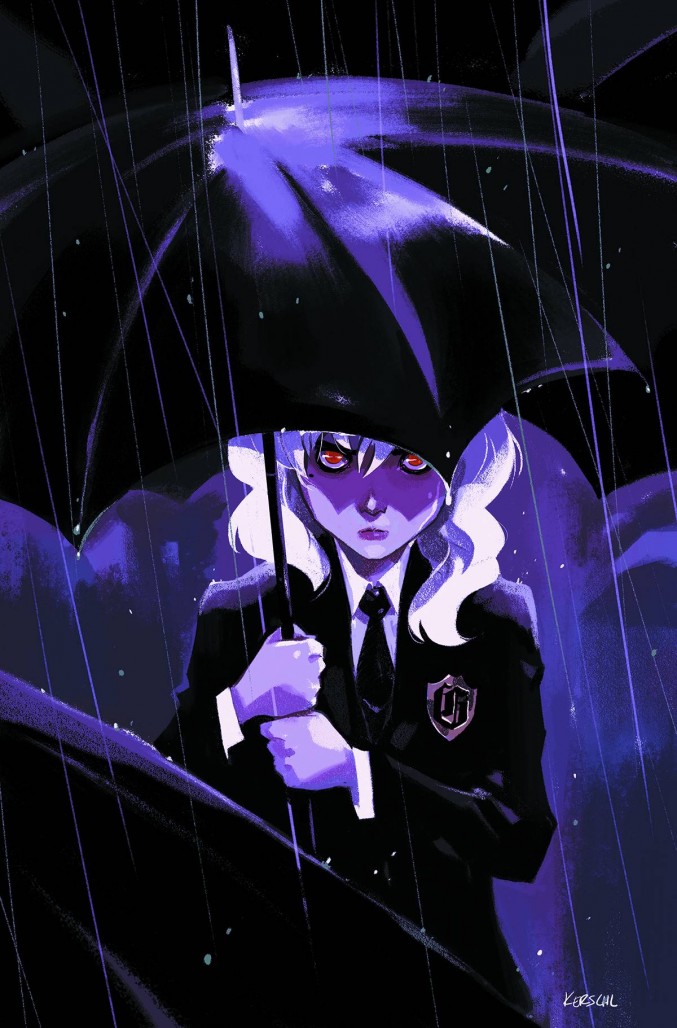
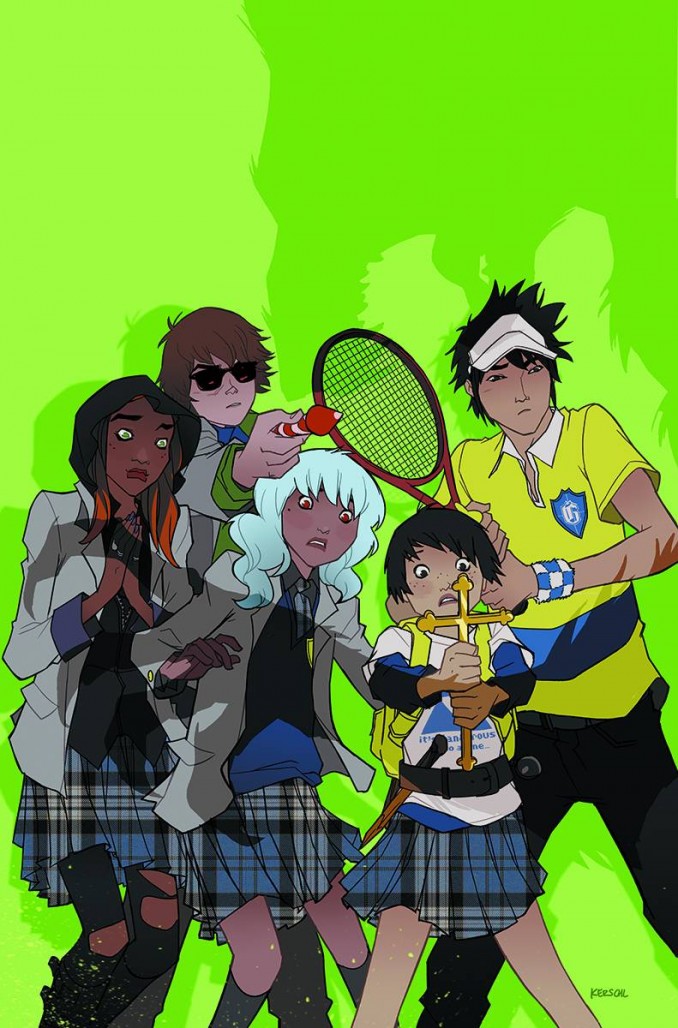
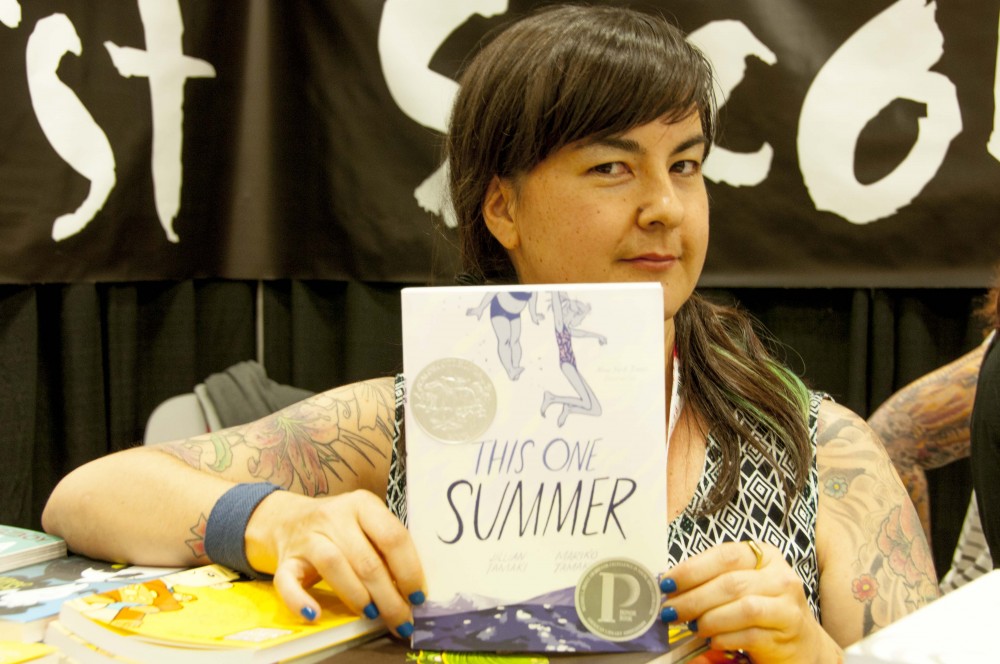
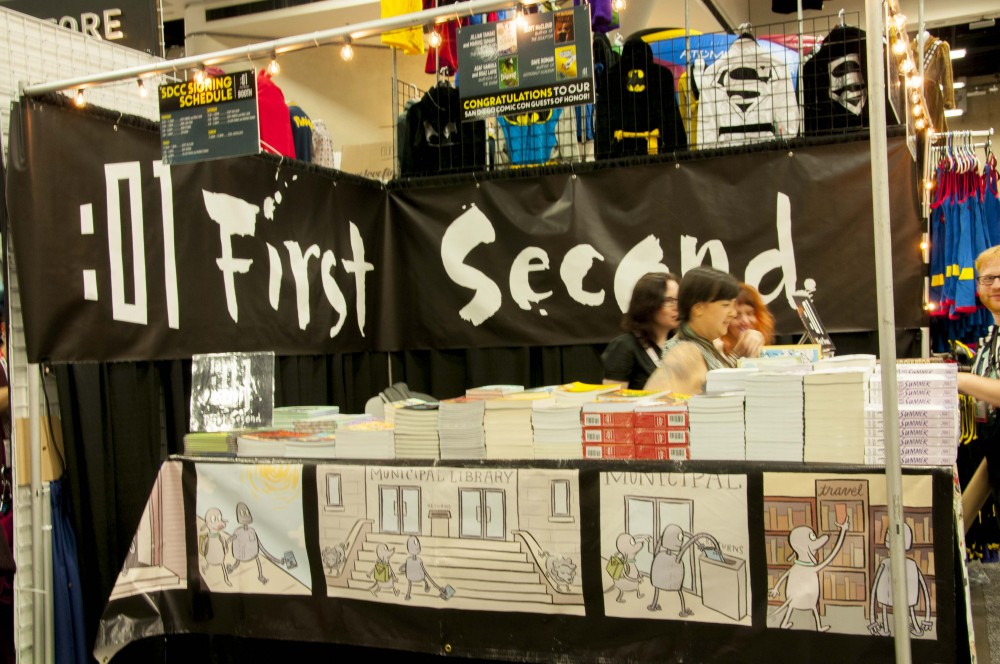
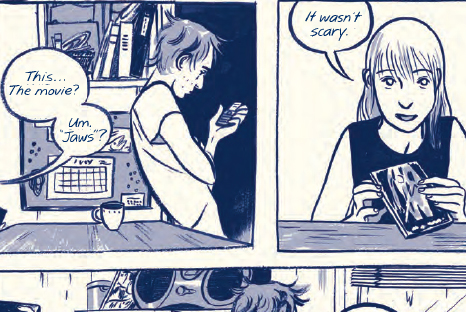
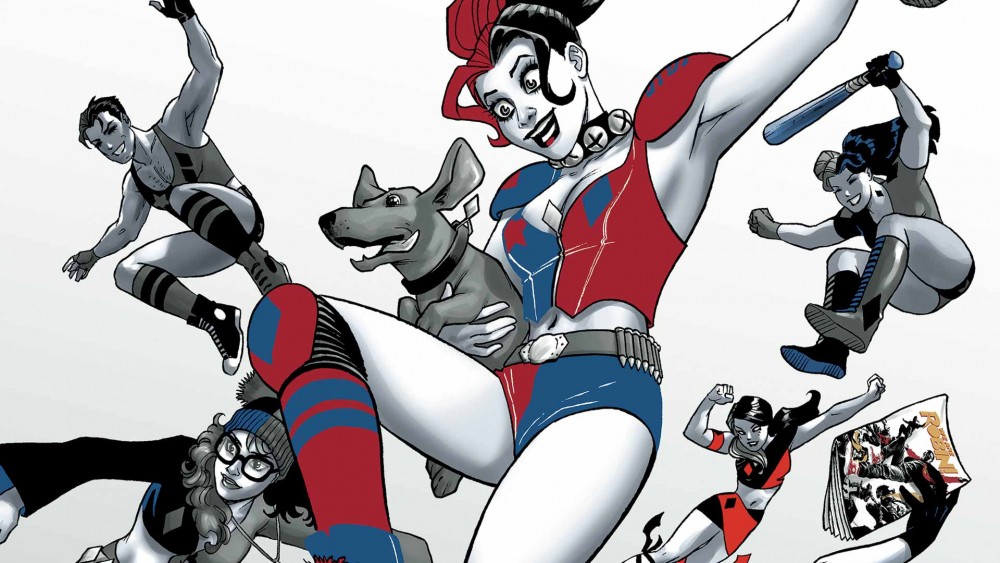
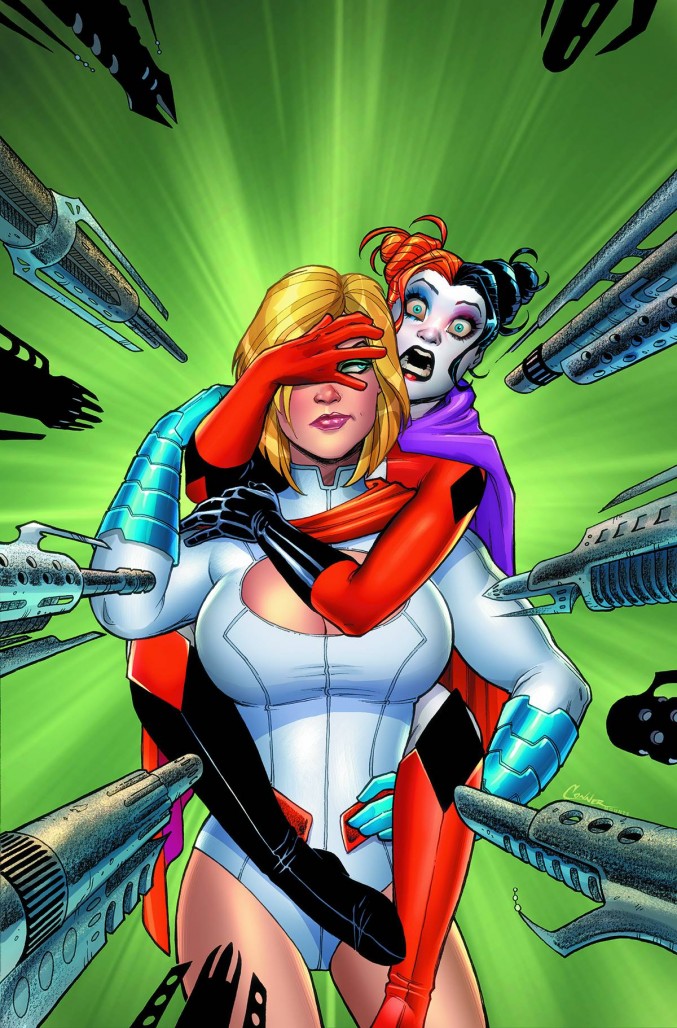
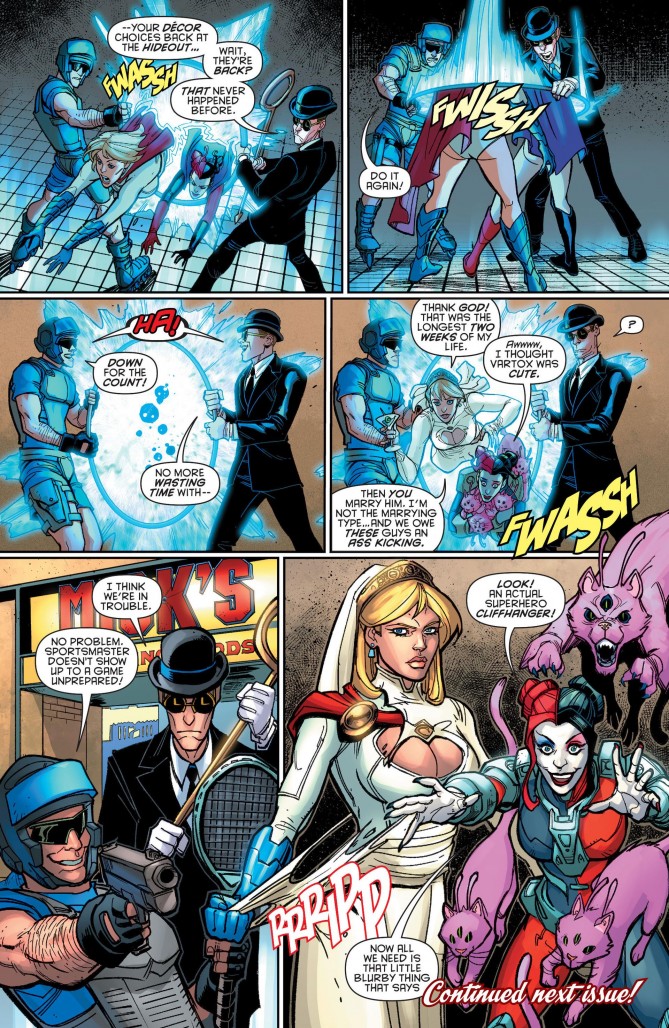
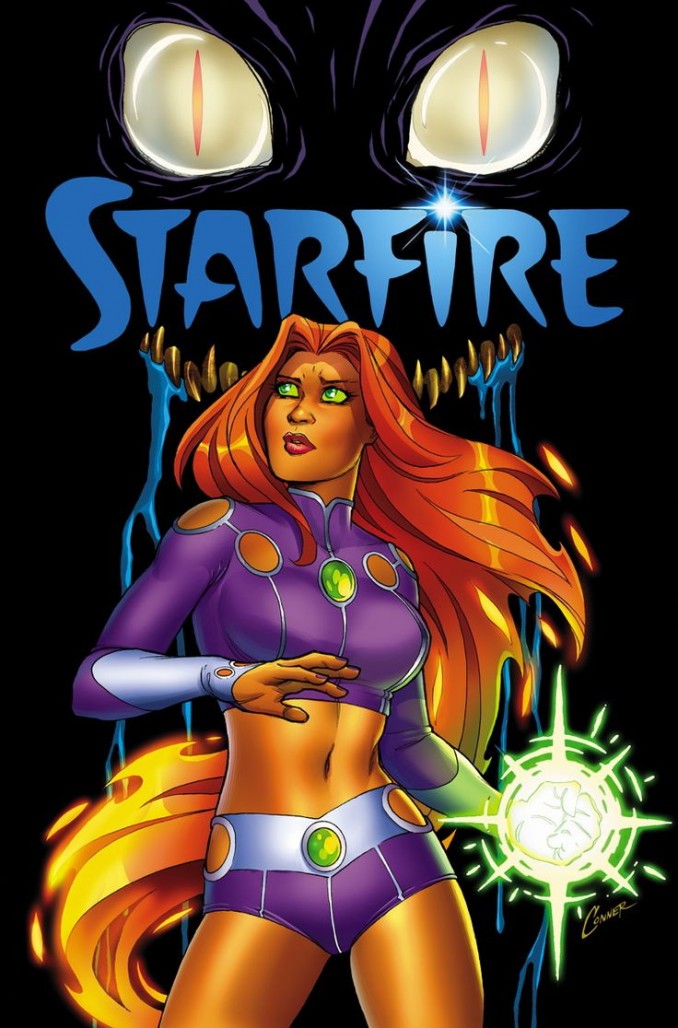
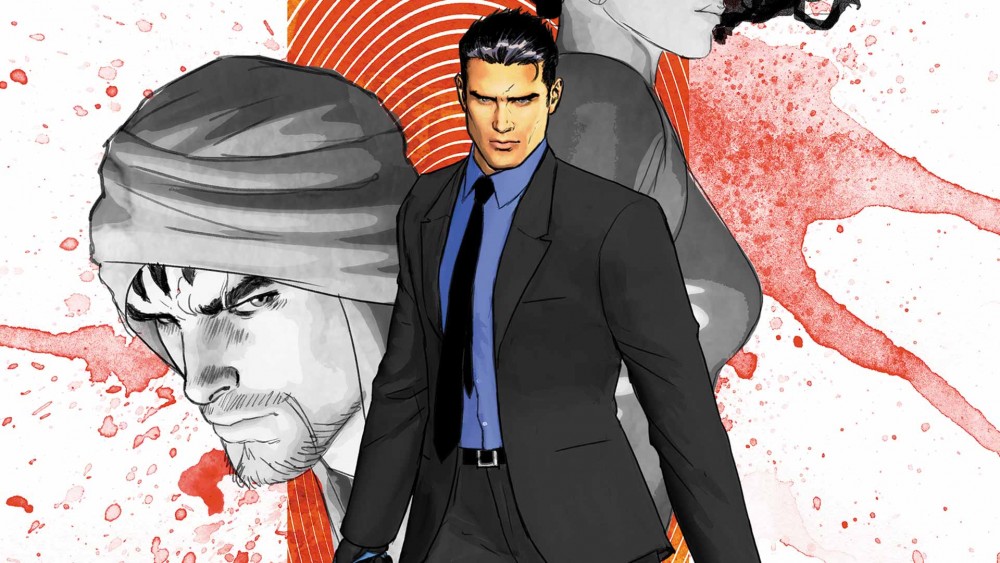
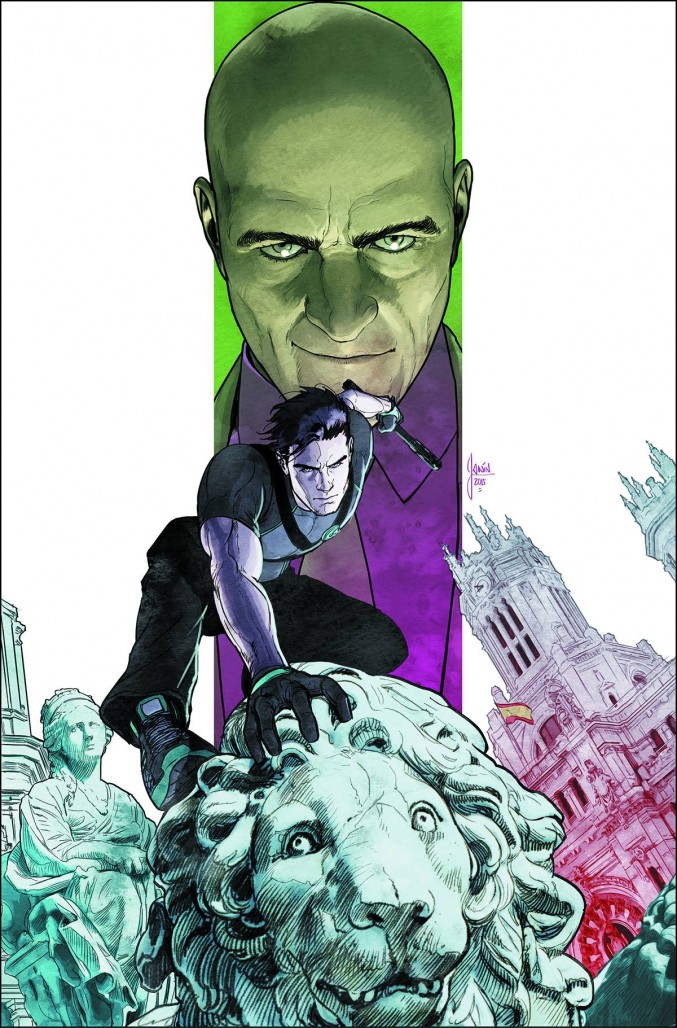
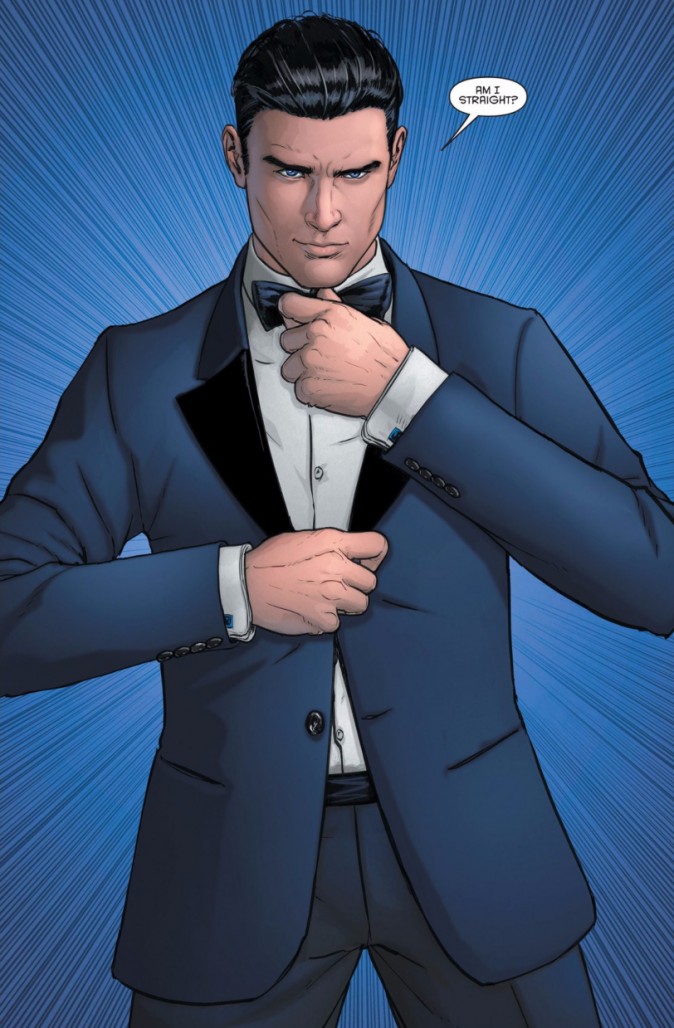

The Turing book is fantastic! I wish the movie’s director had followed this book vs the script they used.